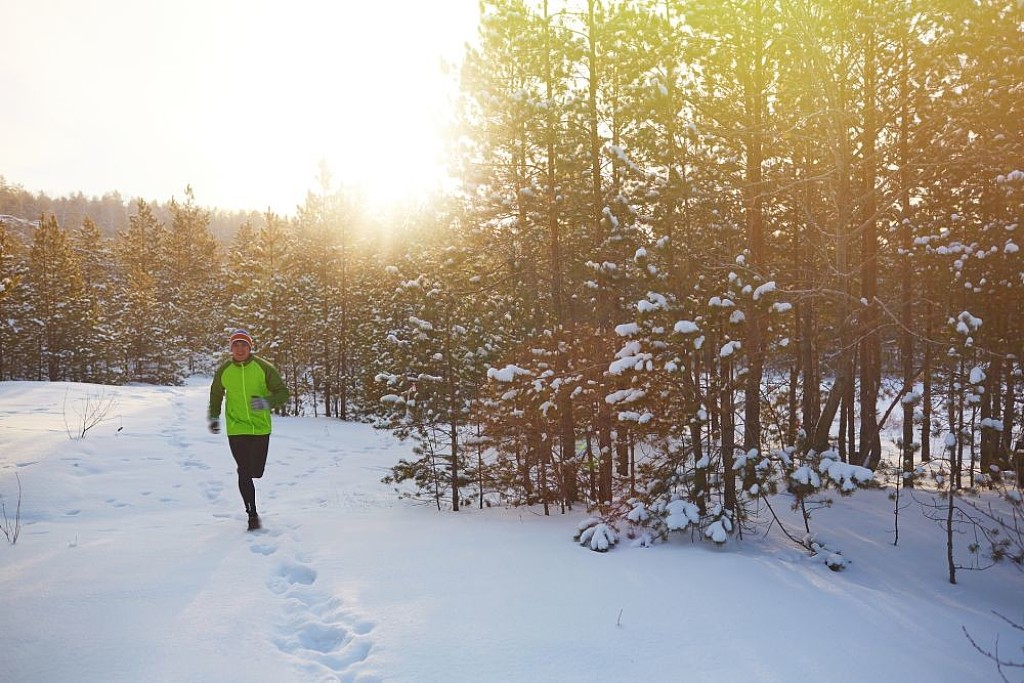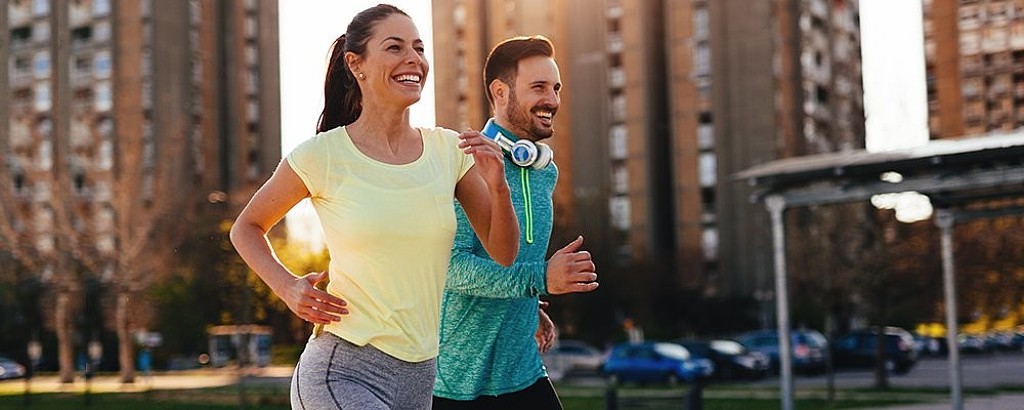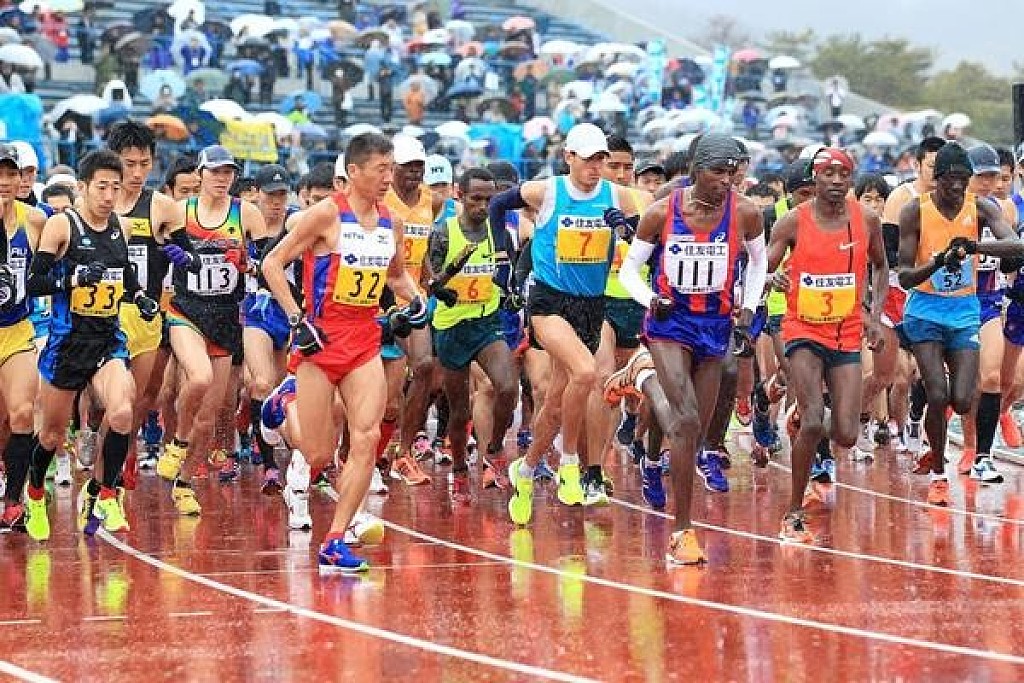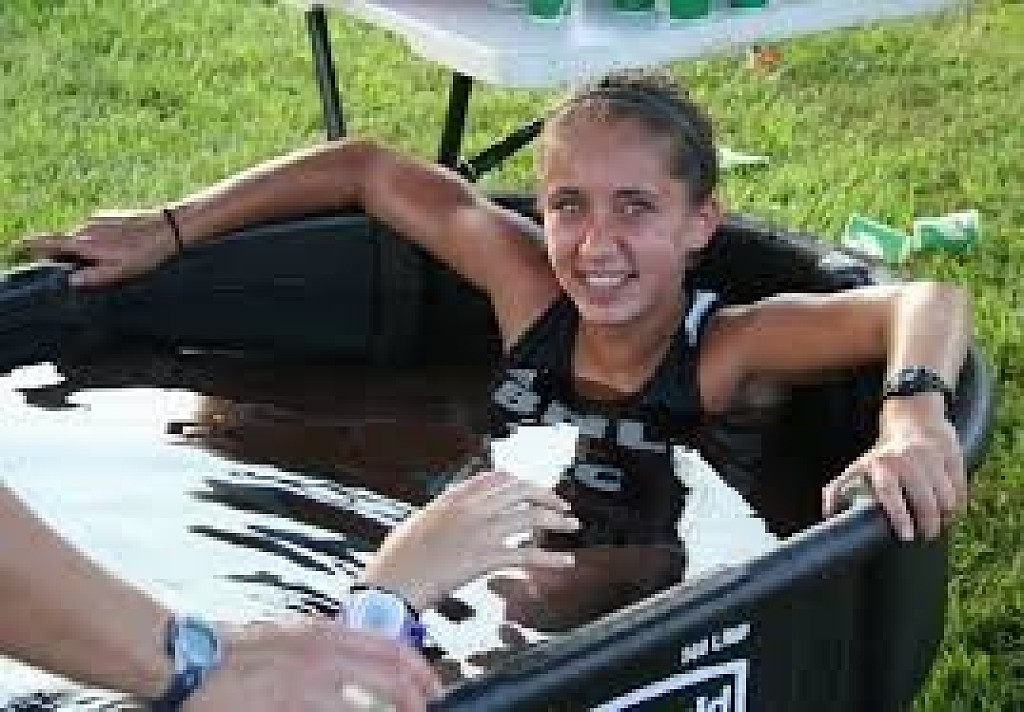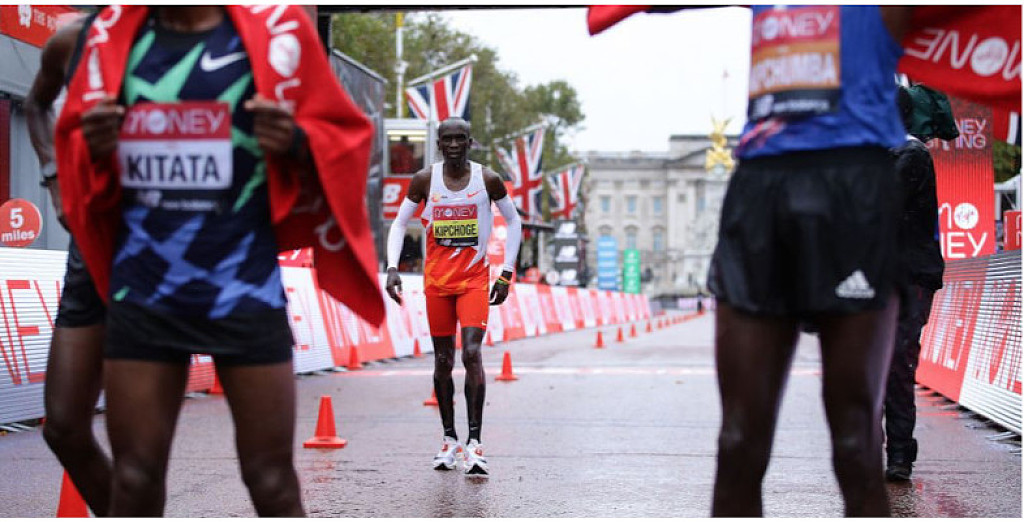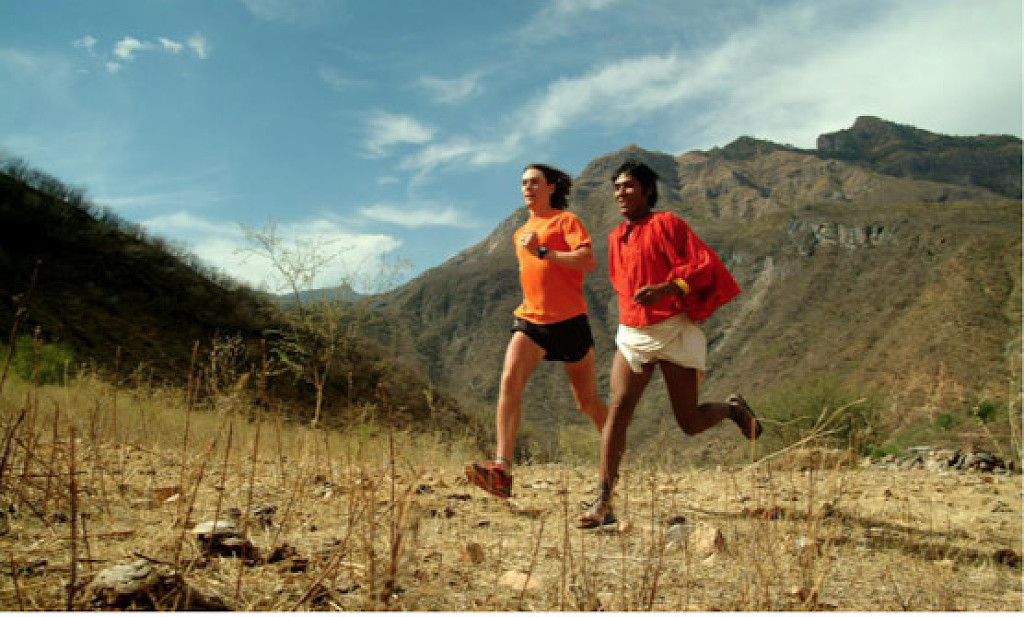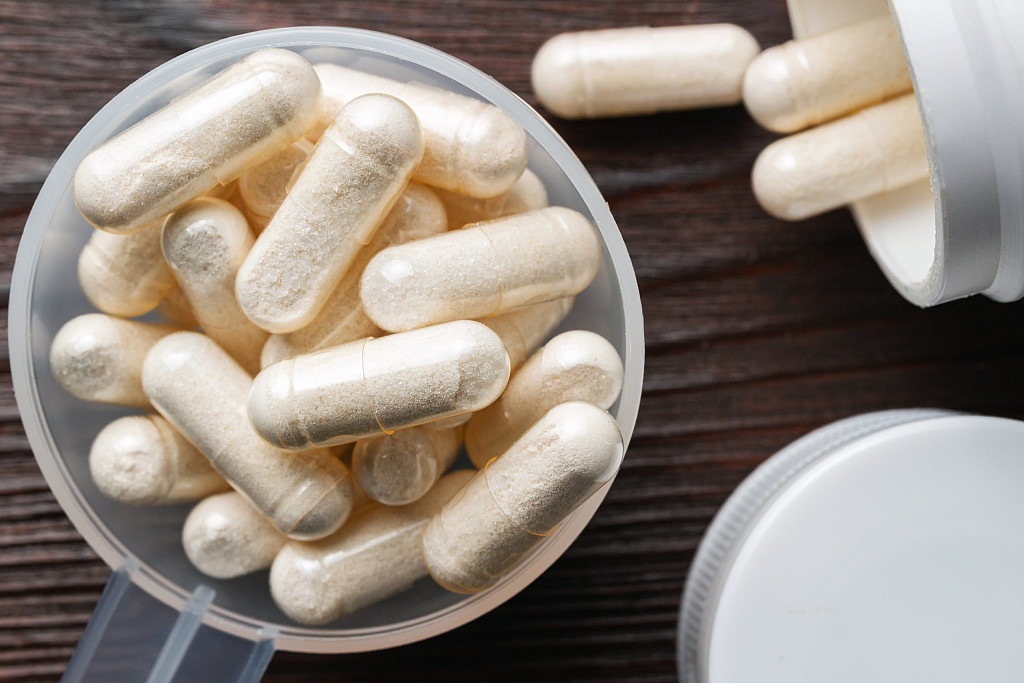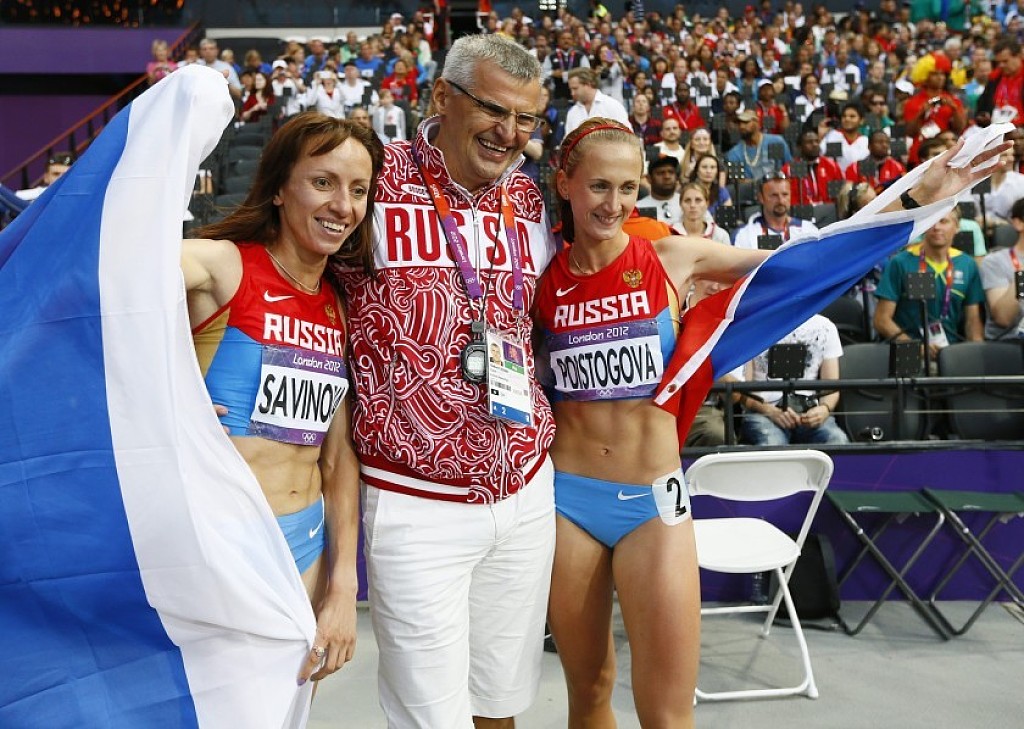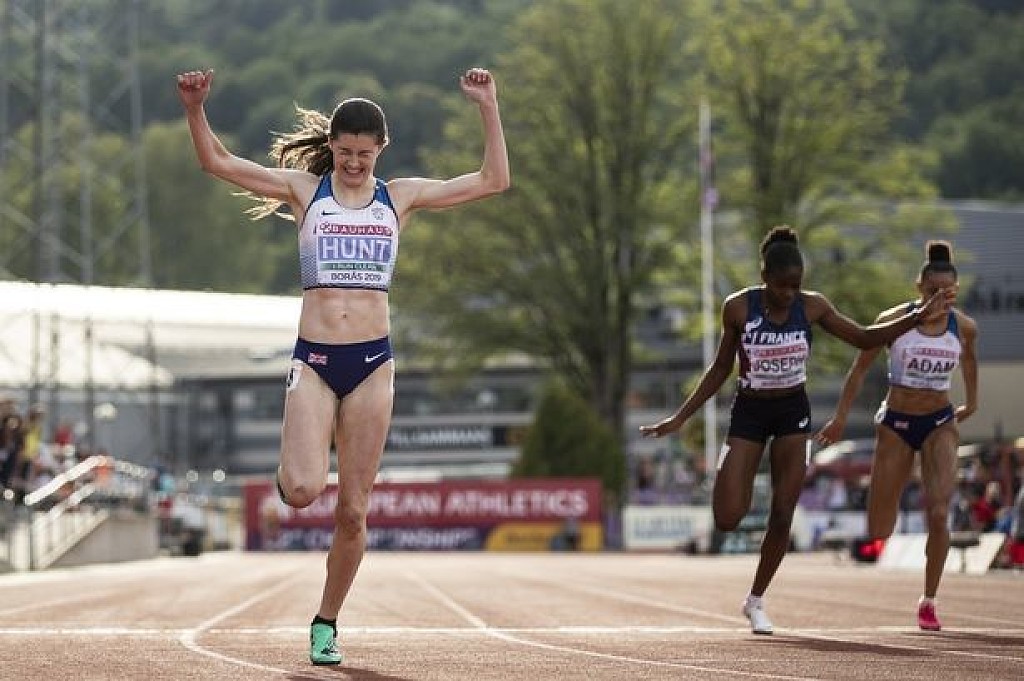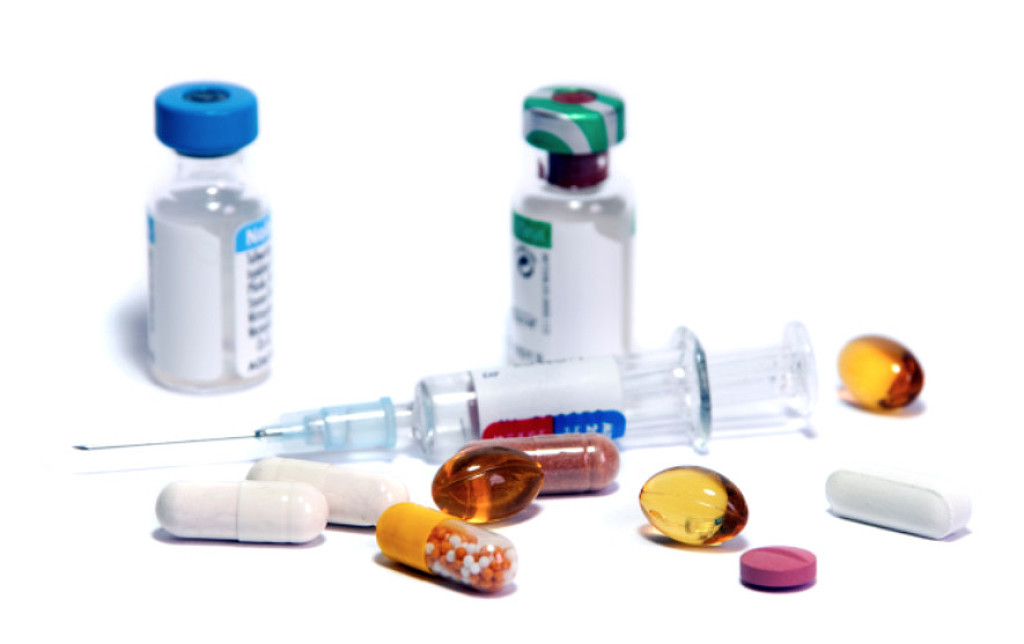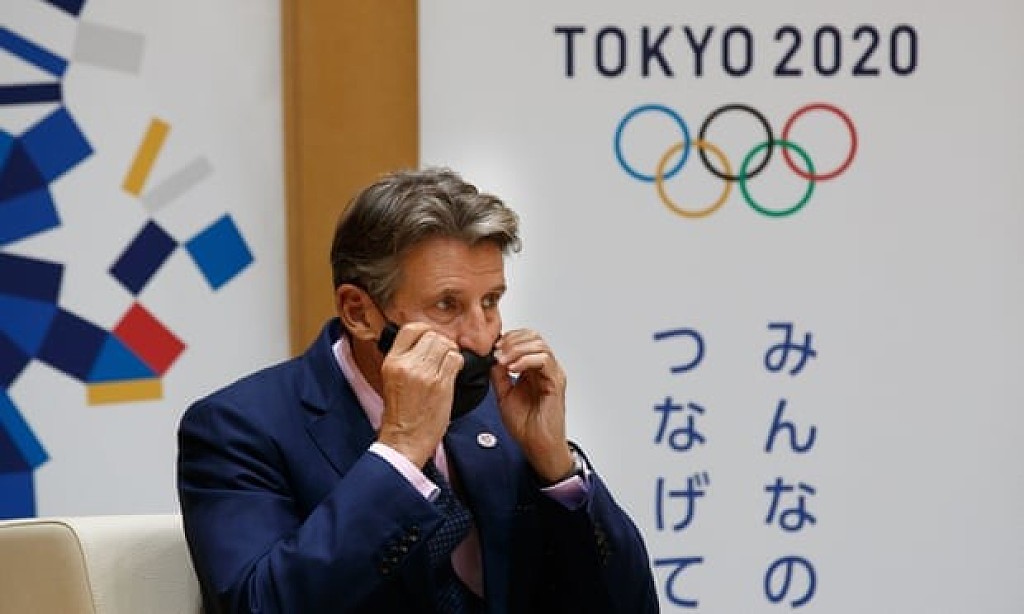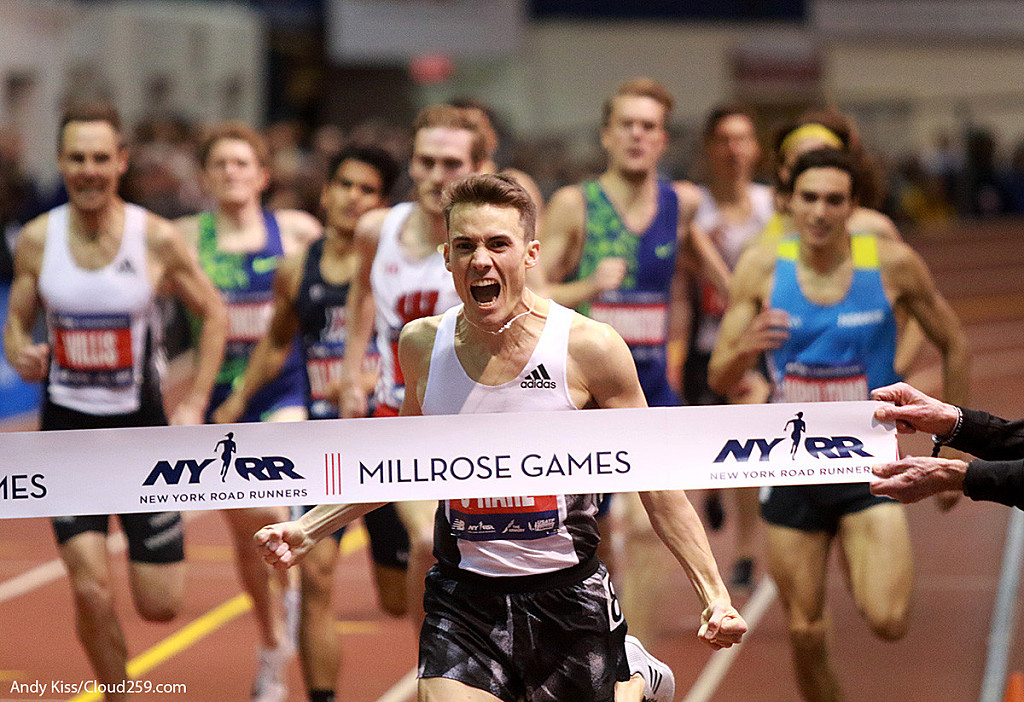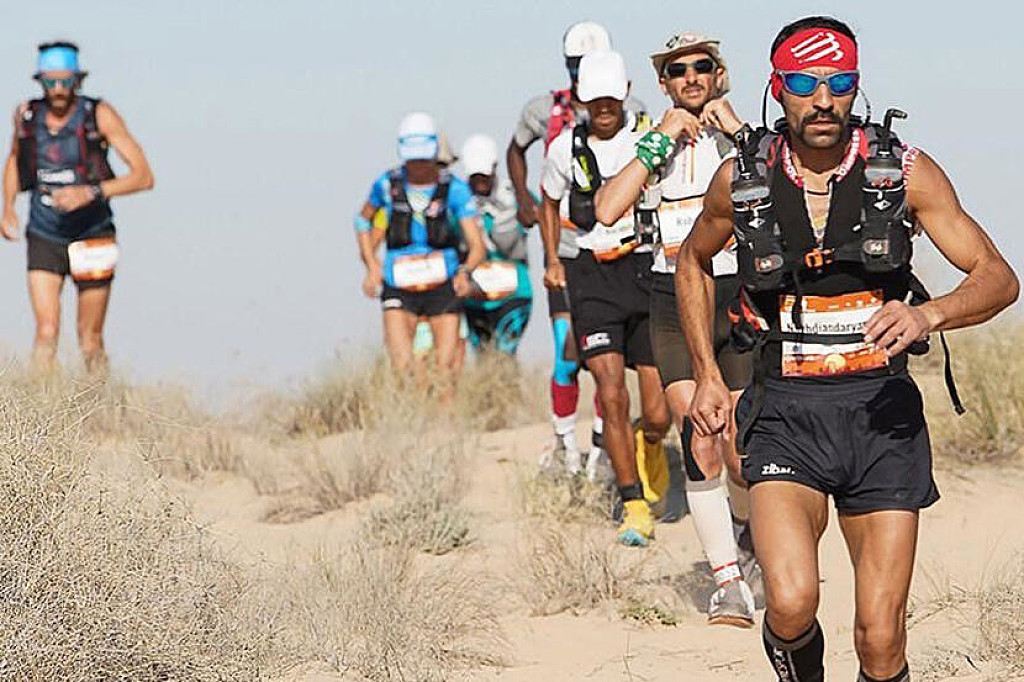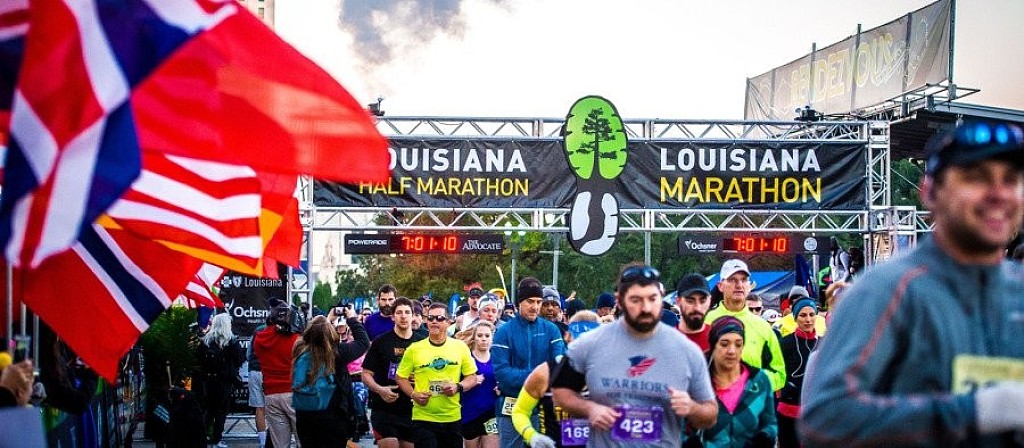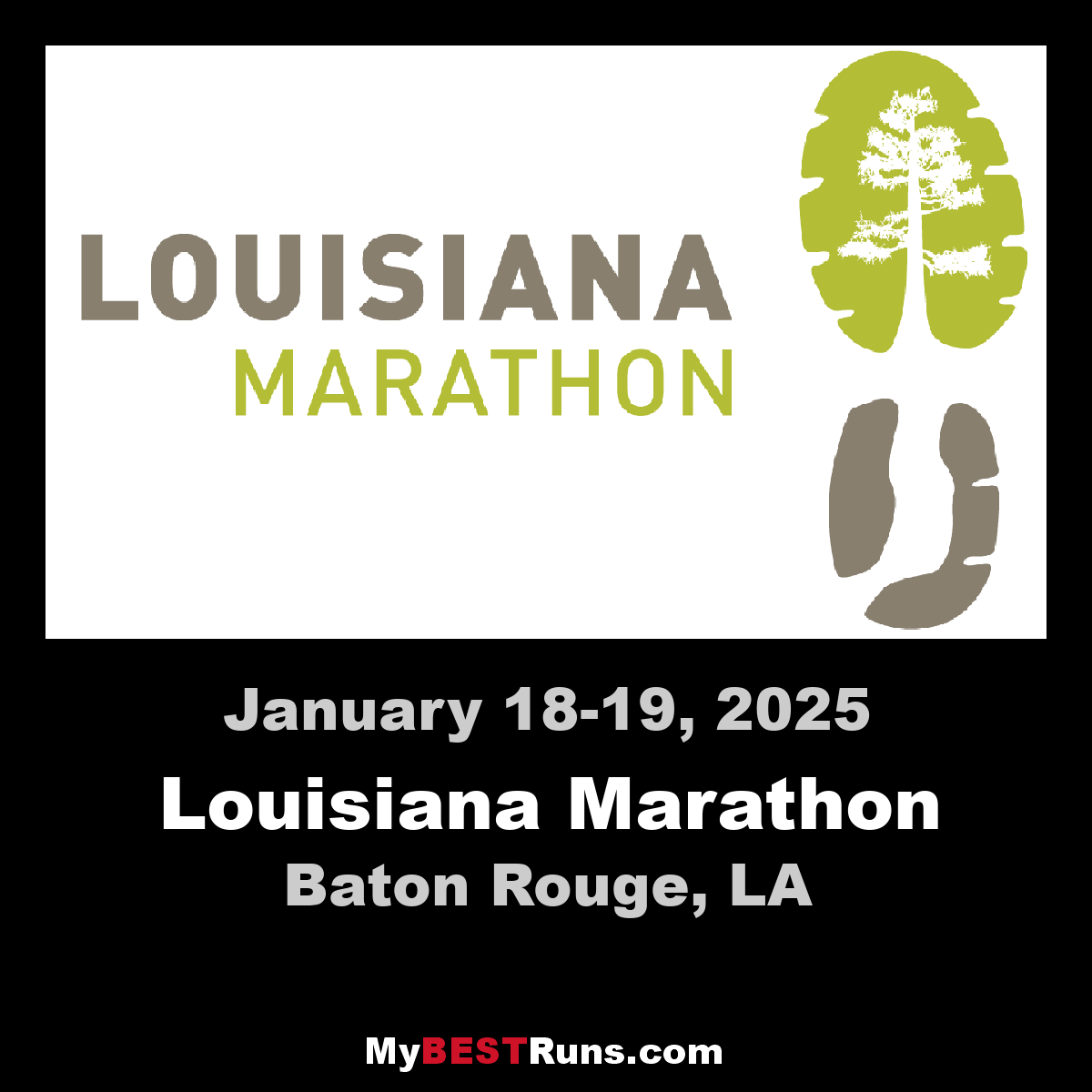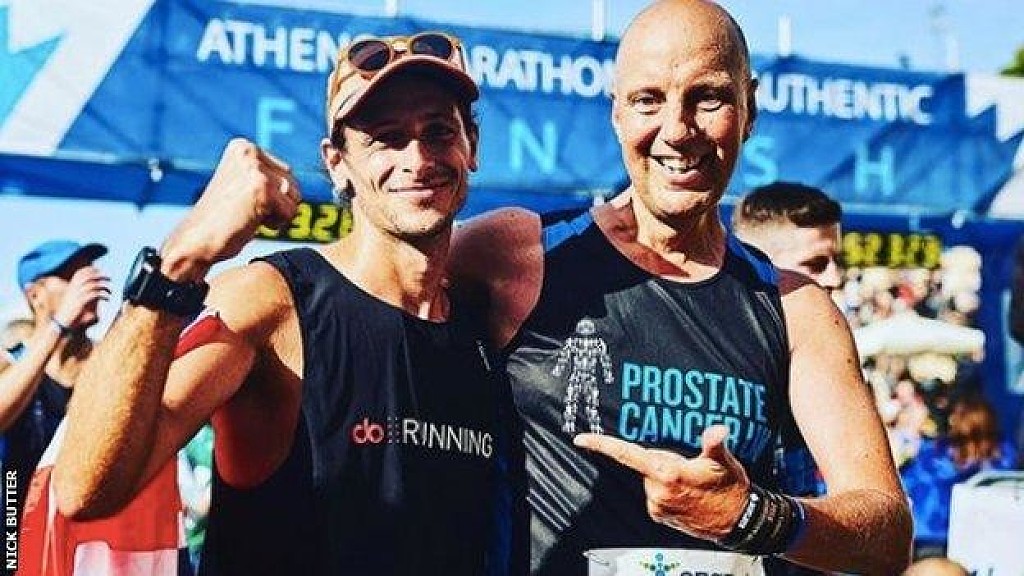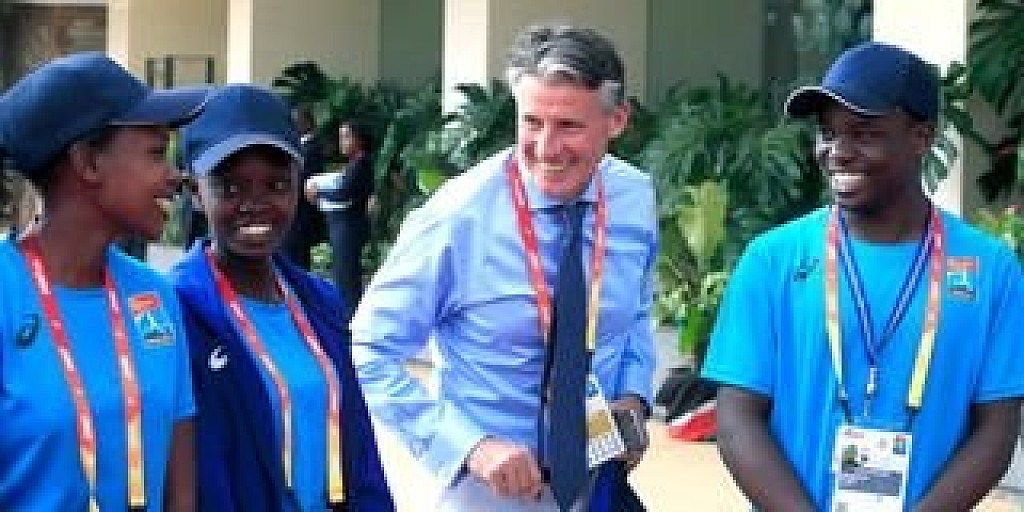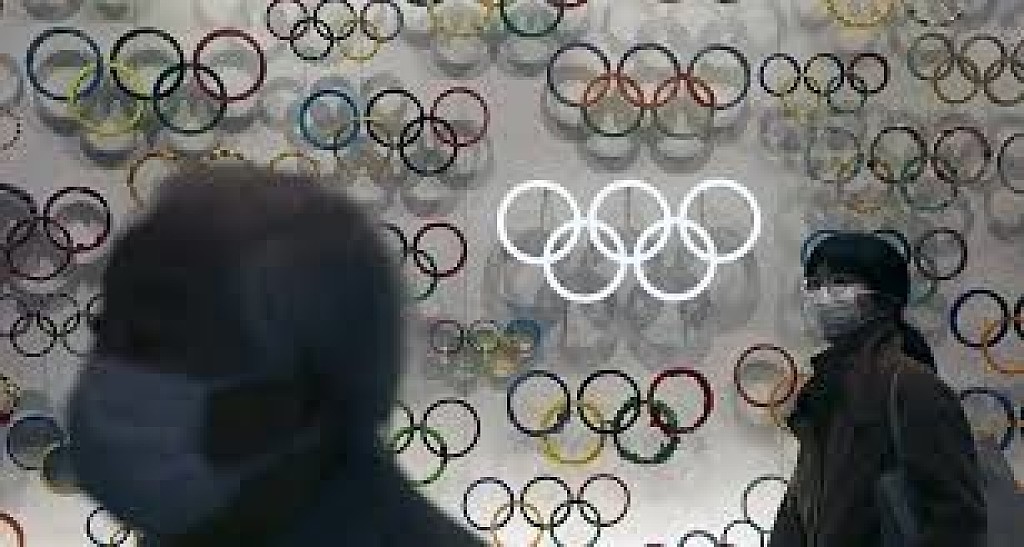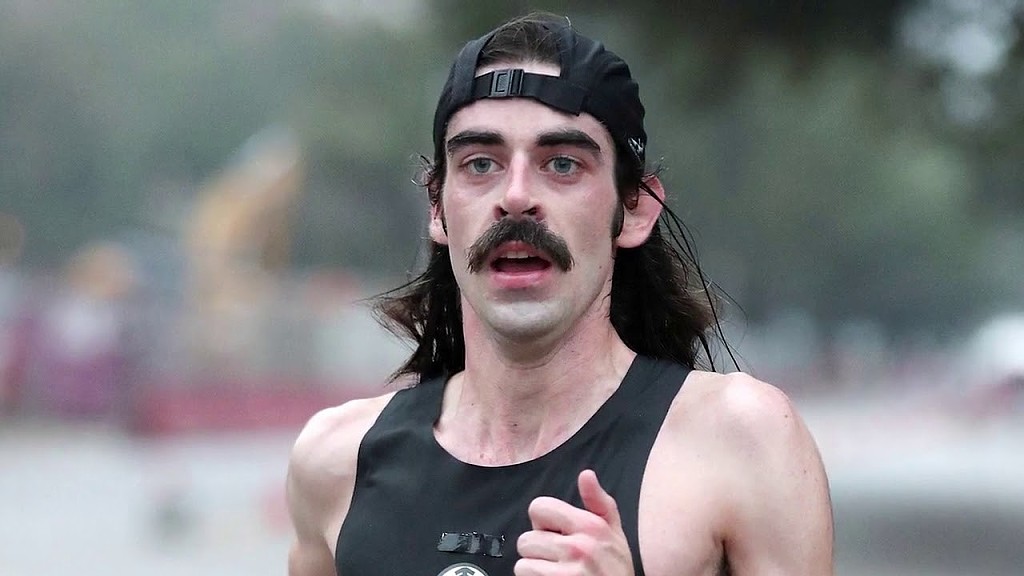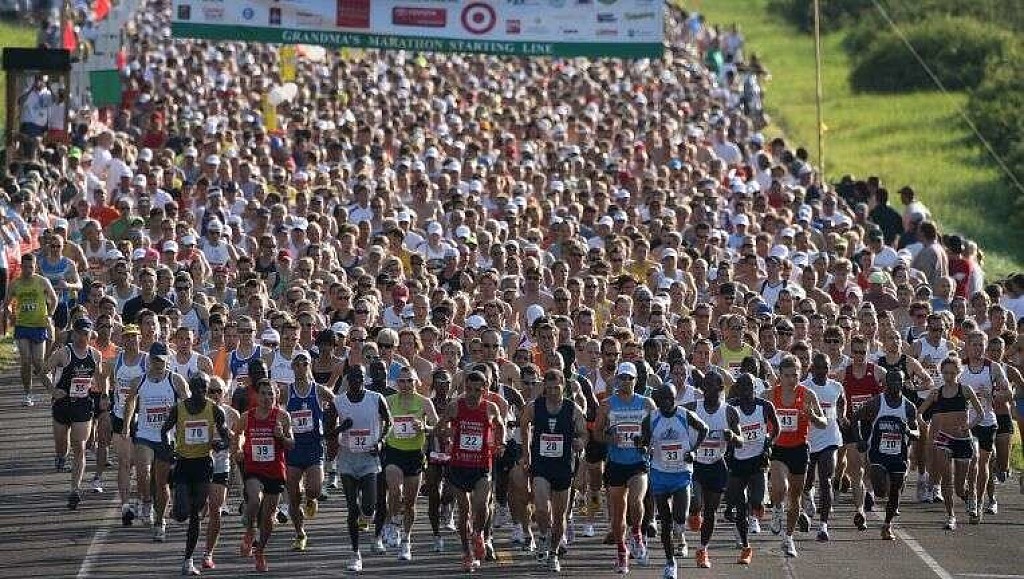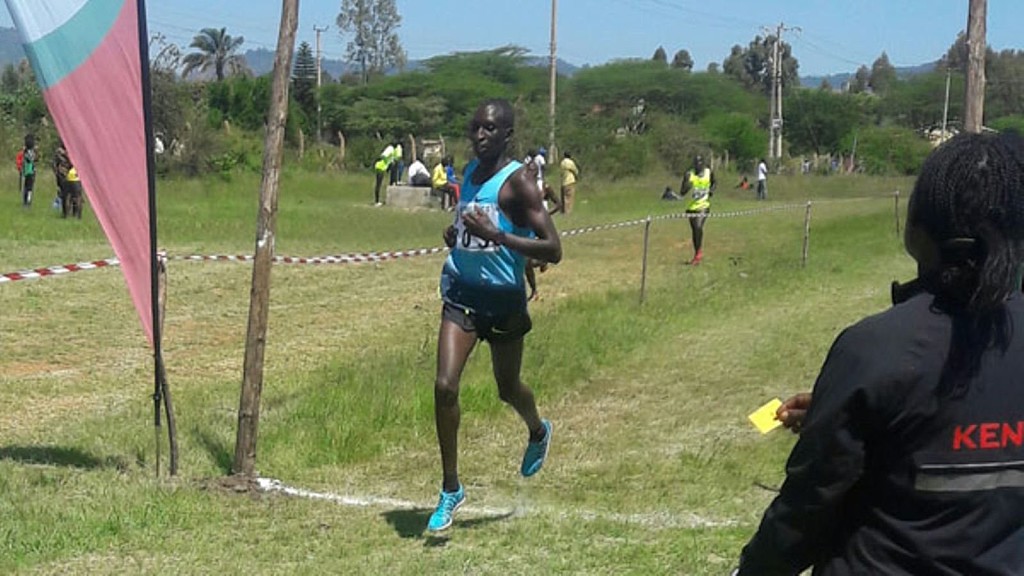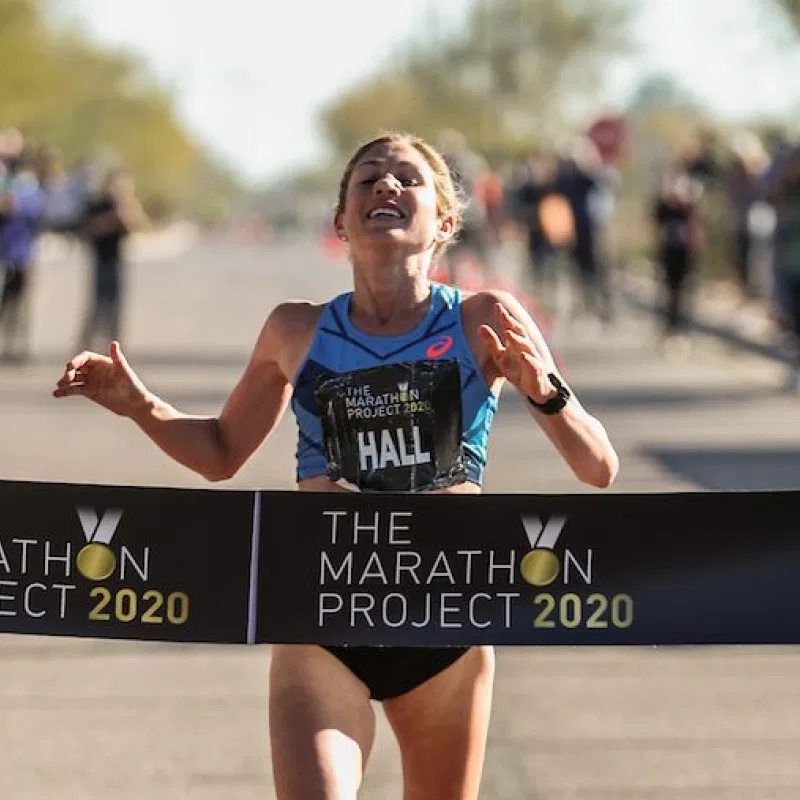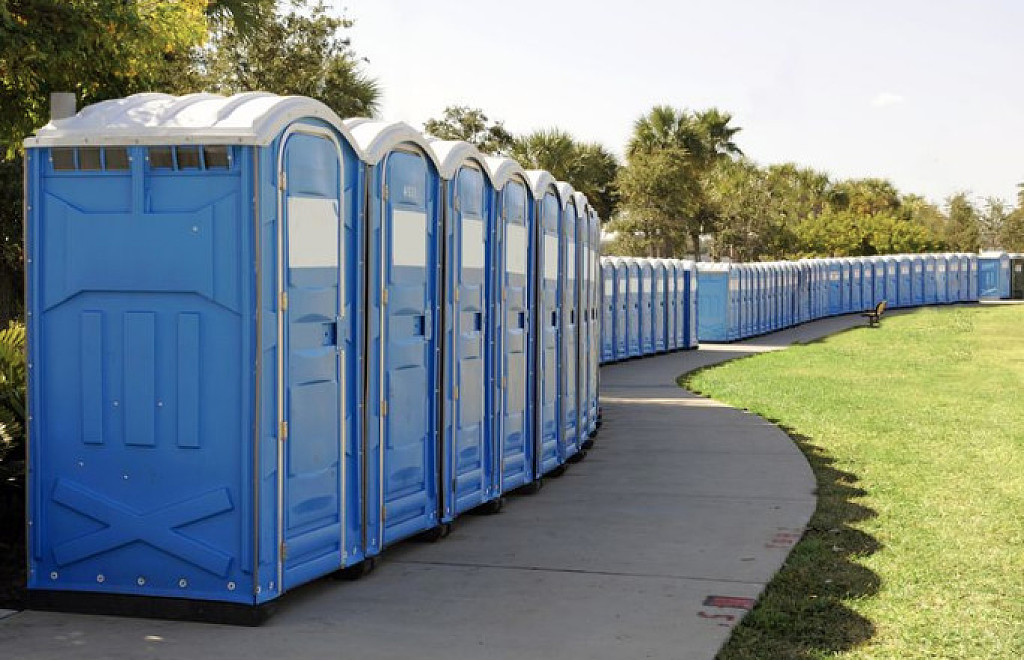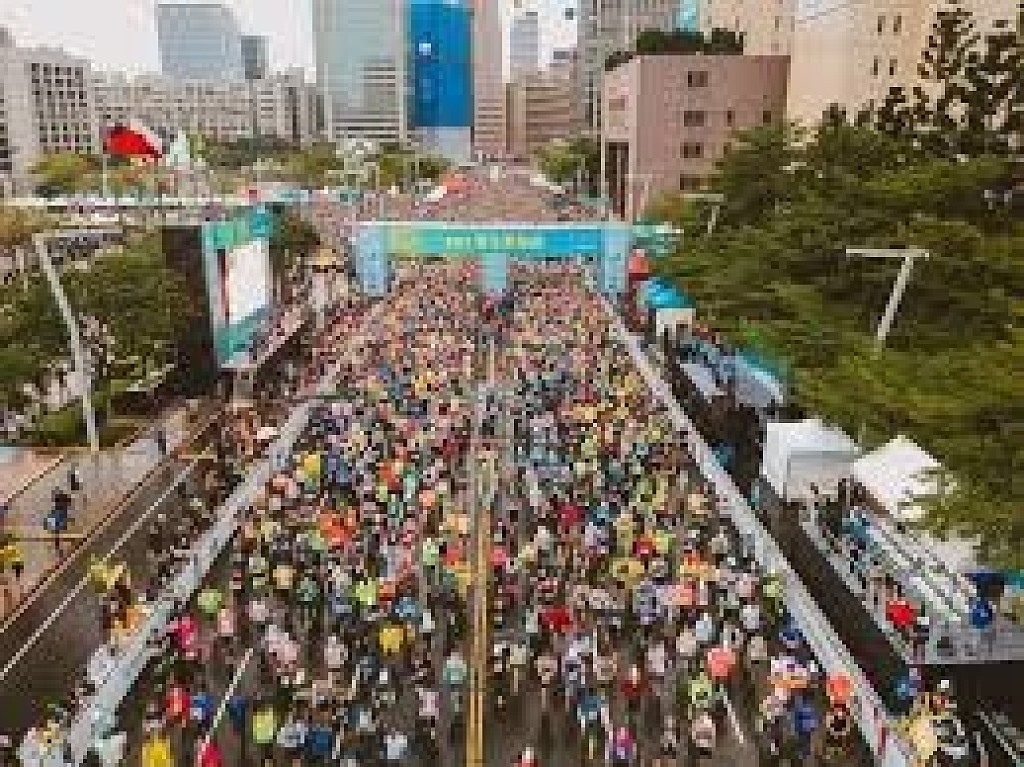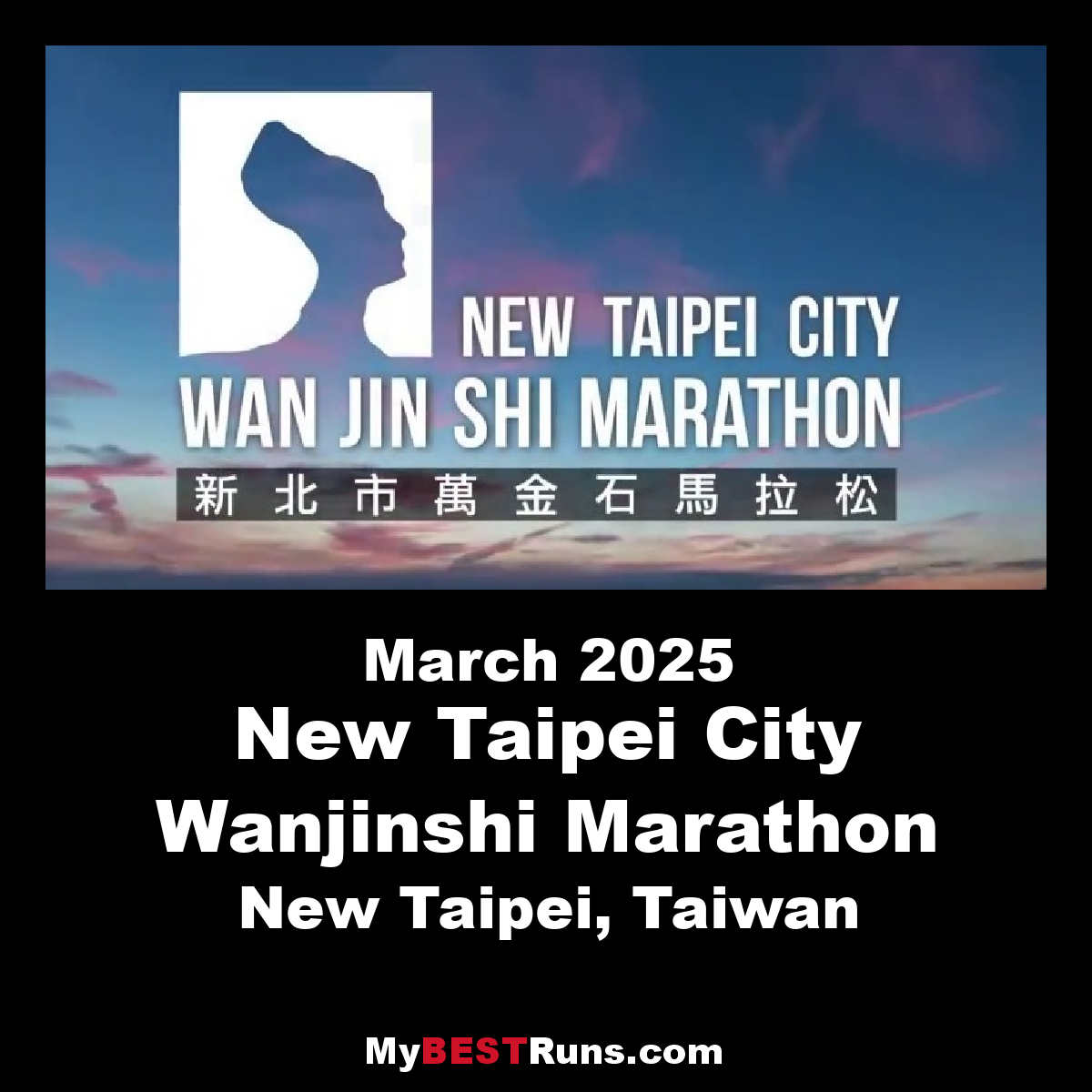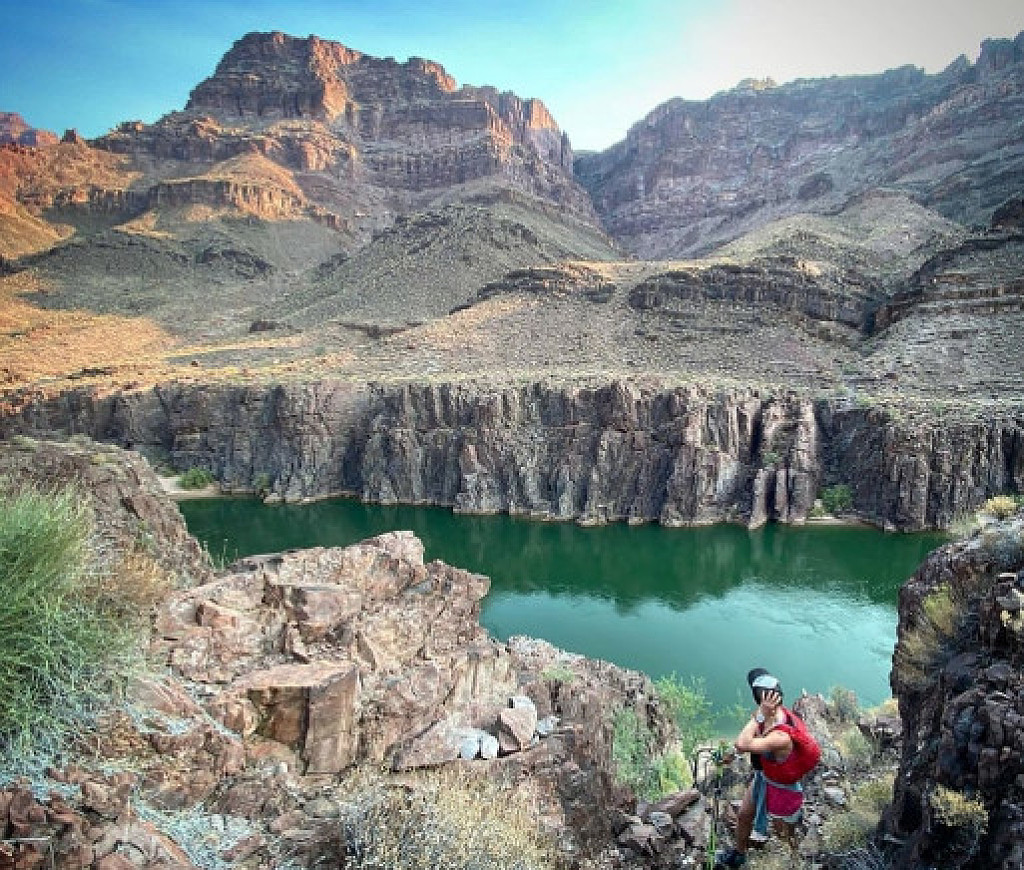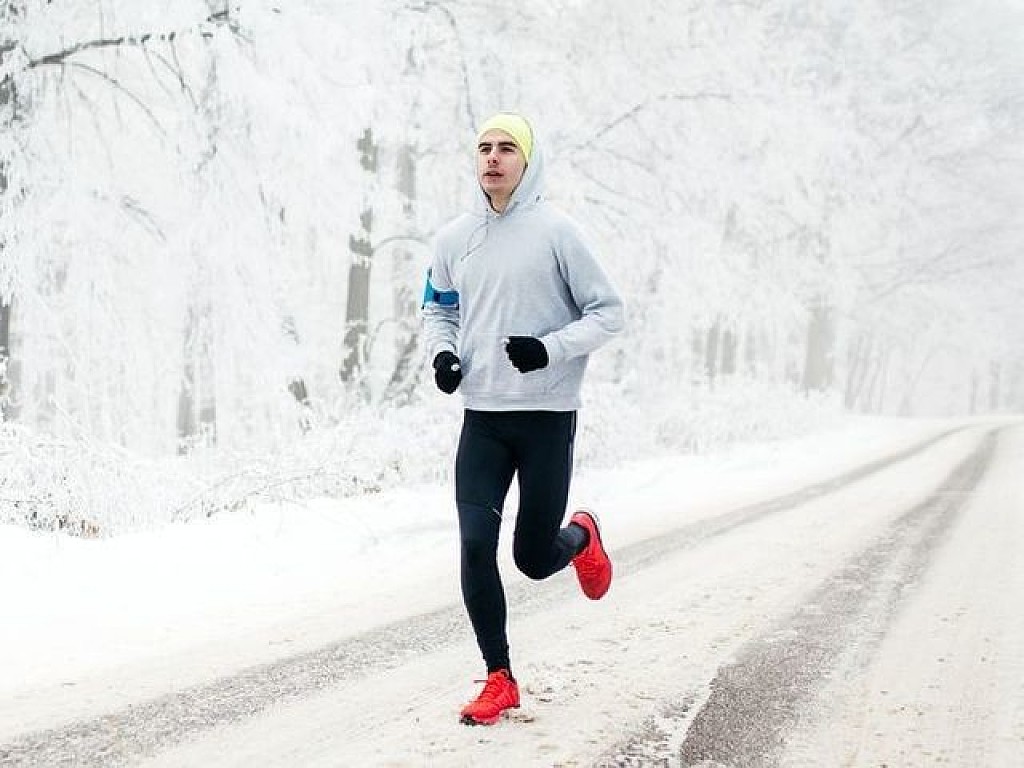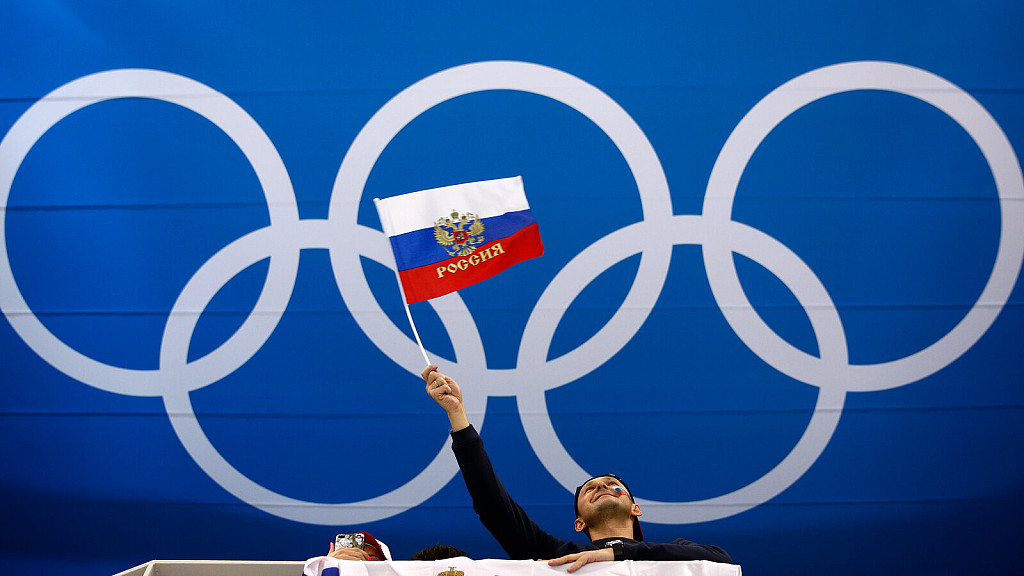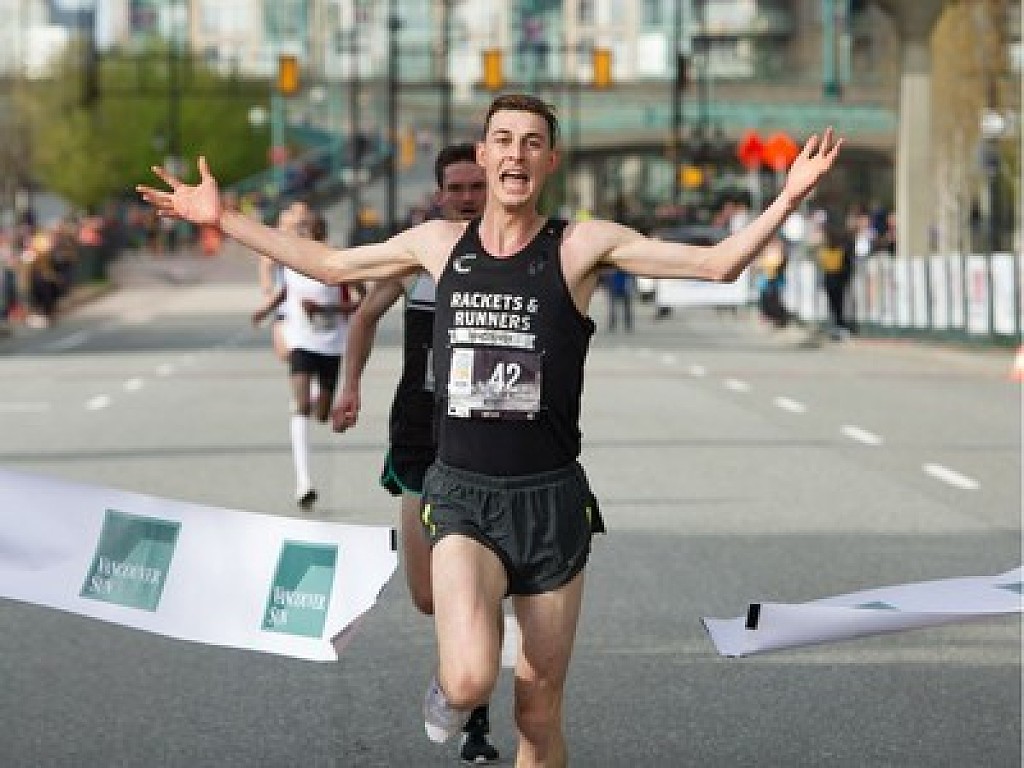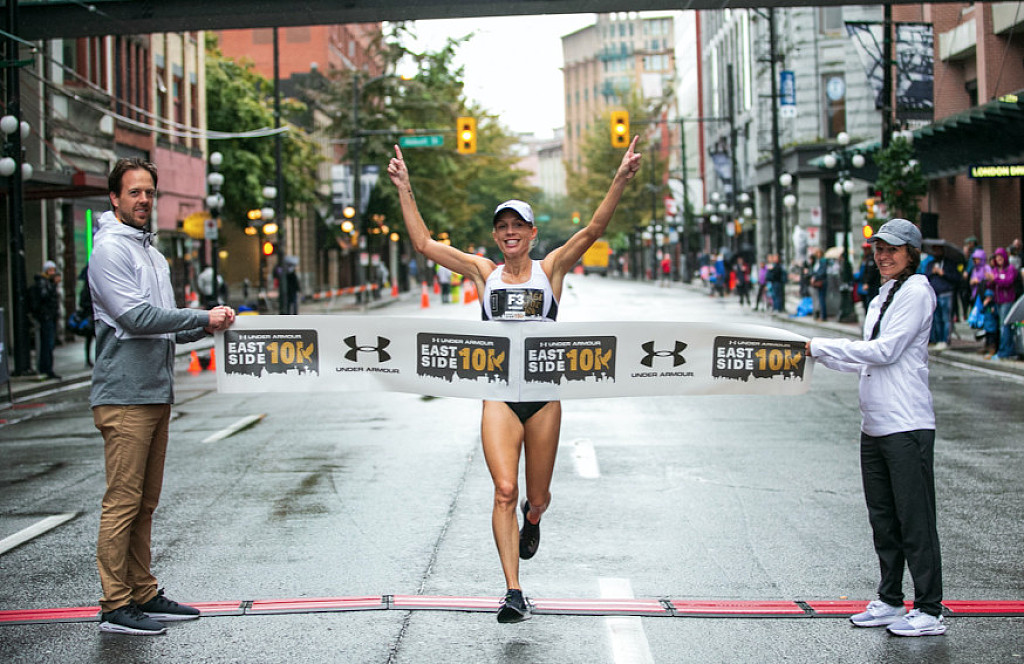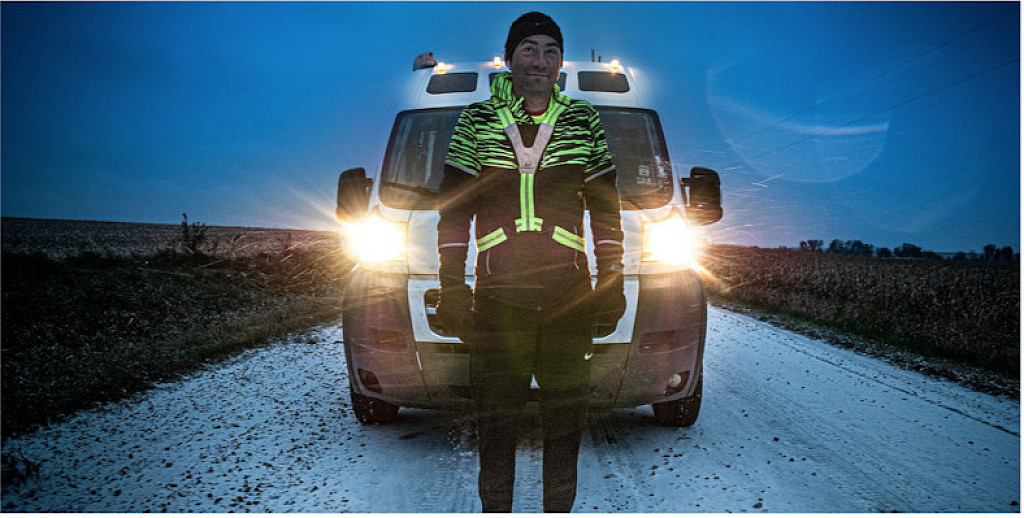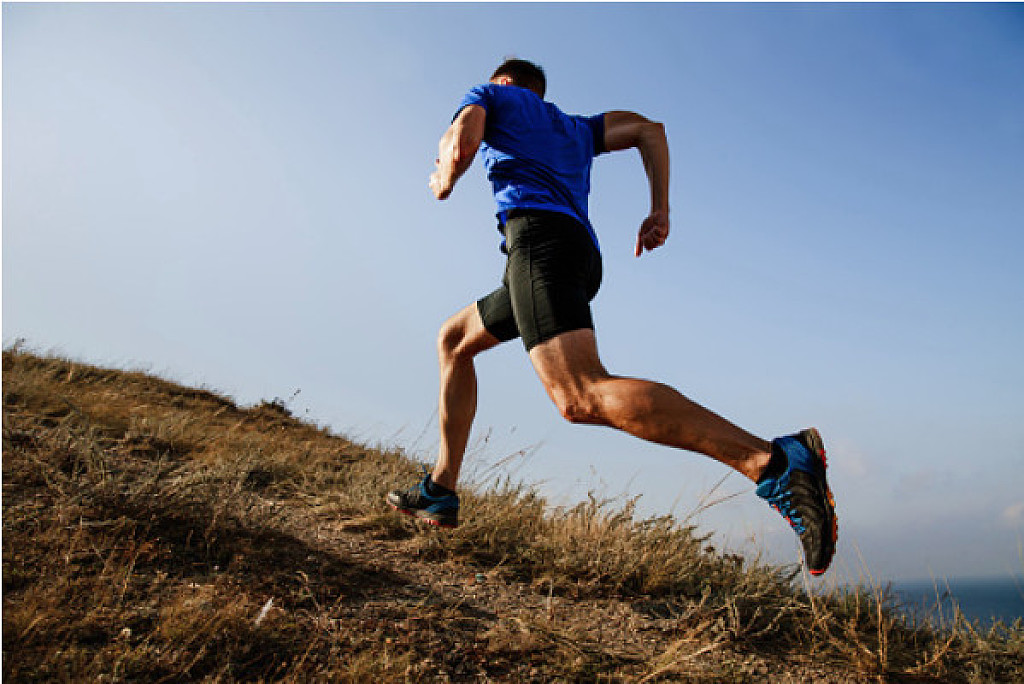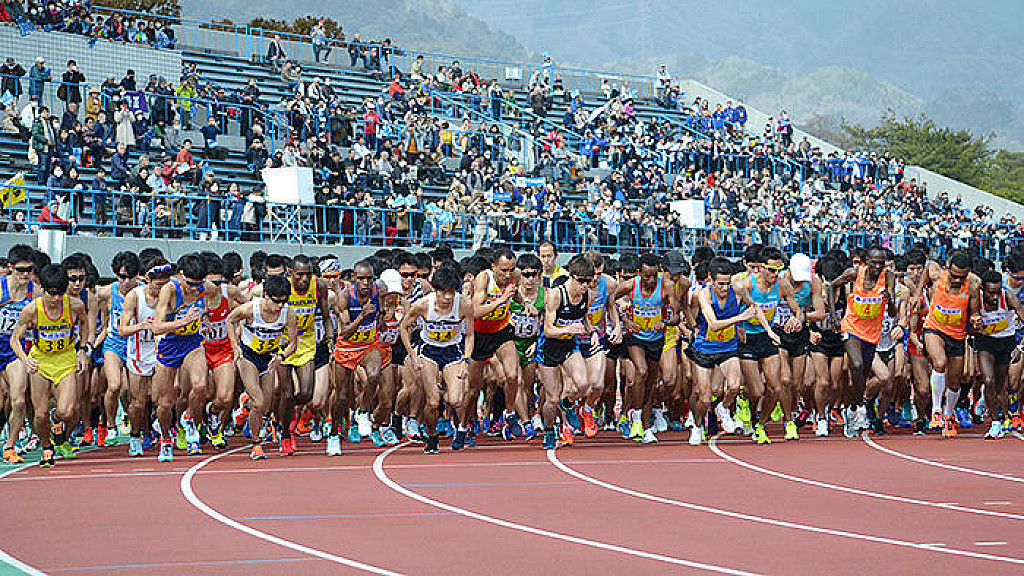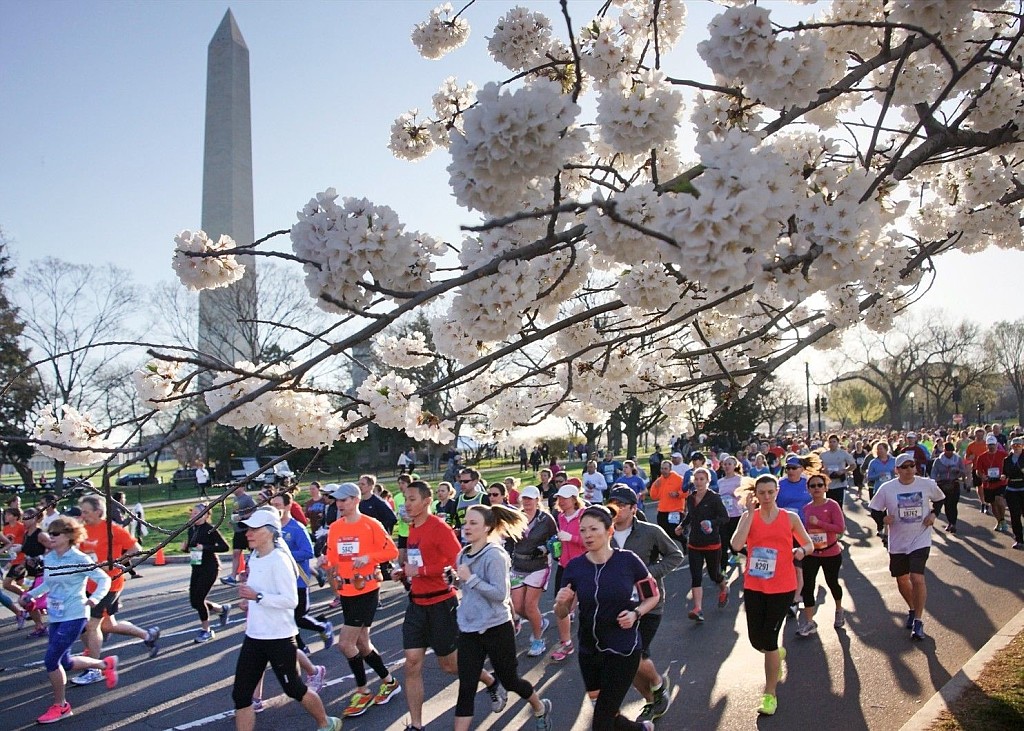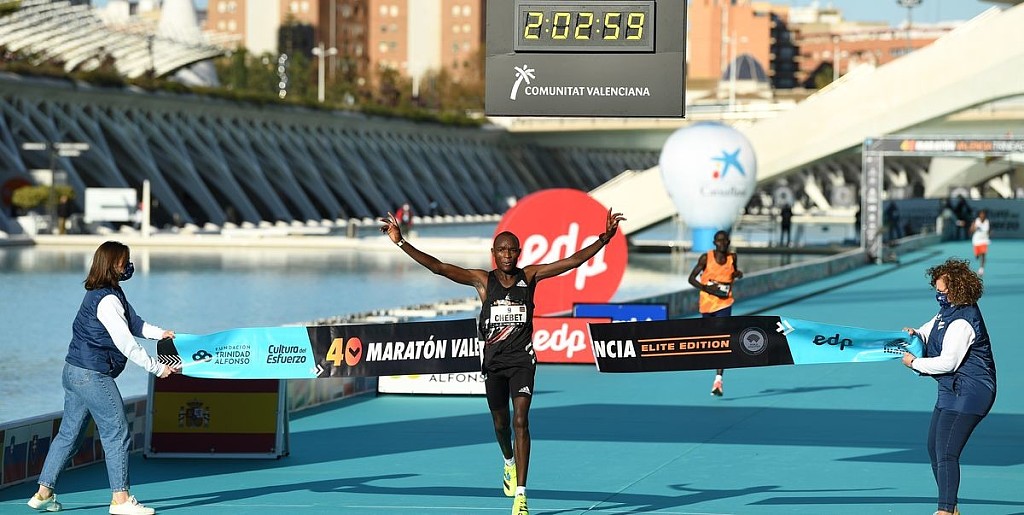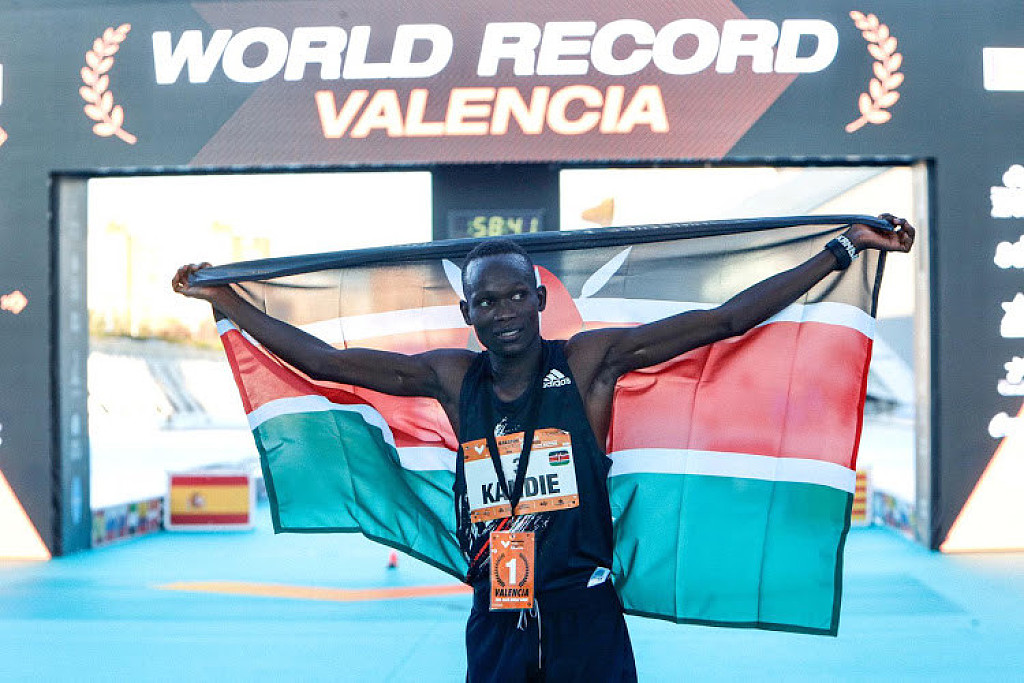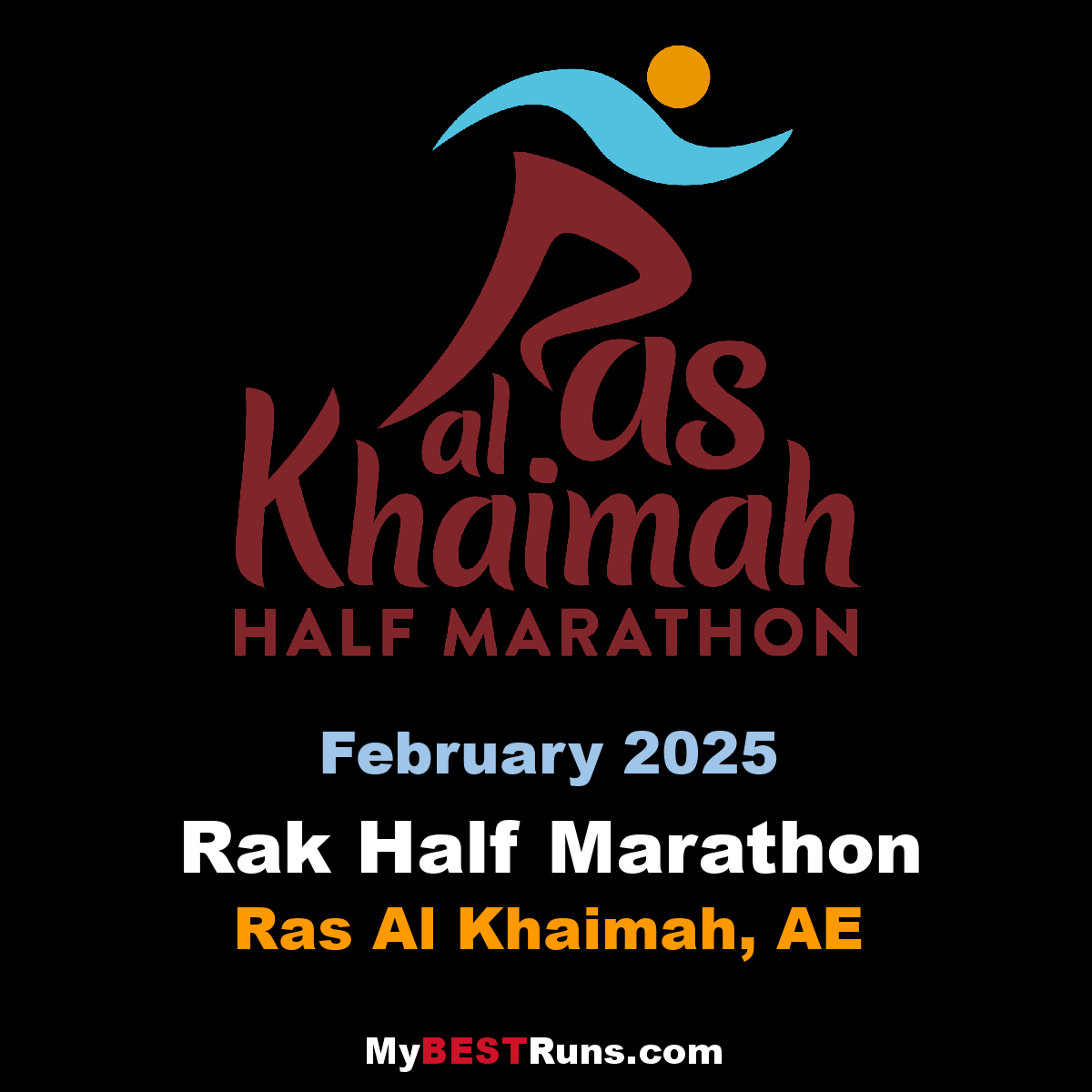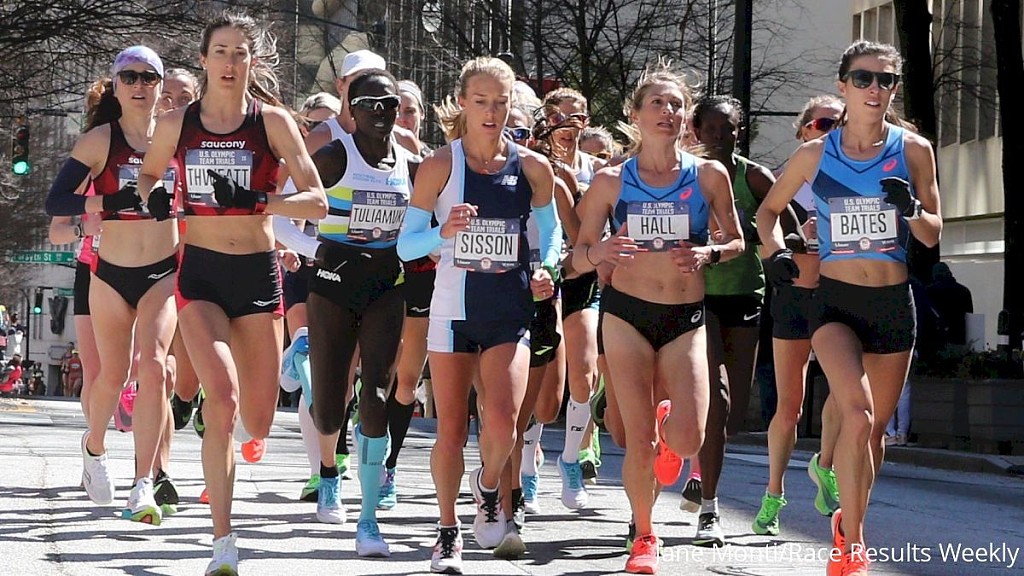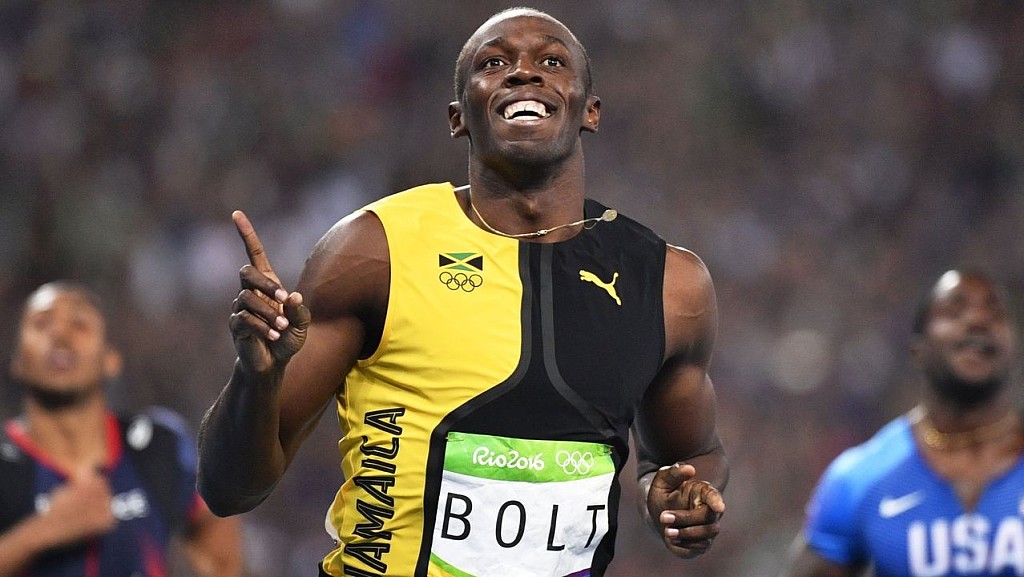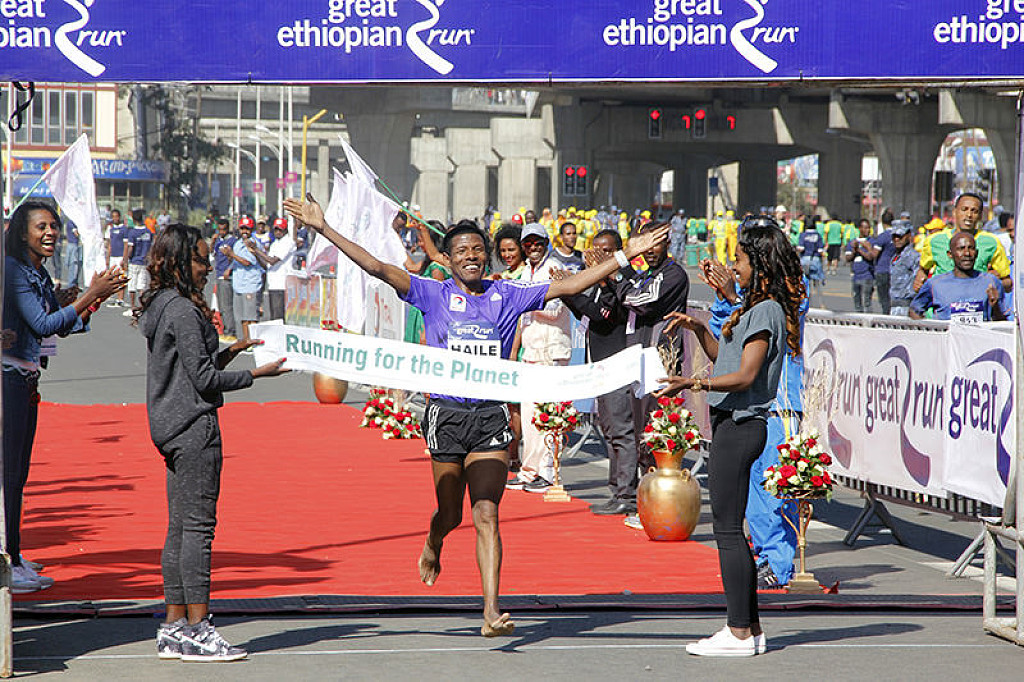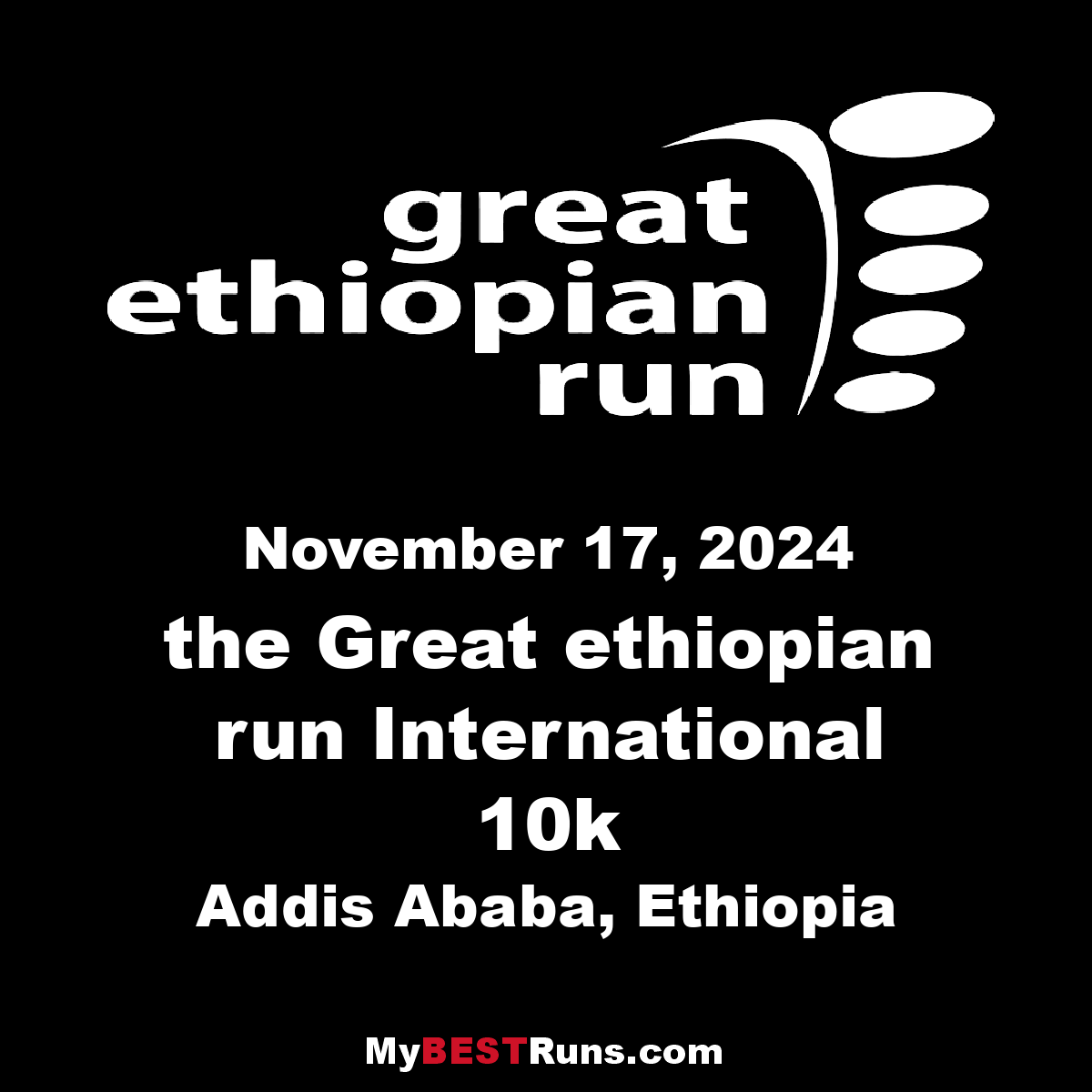Running News Daily
Running News Daily is edited by Bob Anderson in Mountain View, California USA and team in Thika Kenya, La Piedad Mexico, Bend Oregon, Chandler Arizona and Monforte da Beira Portugal. Send your news items to bob@mybestruns.com Advertising opportunities available. Over one million readers and growing. Train the Kenyan Way at KATA Running Retreat Kenya. (Kenyan Athletics Training Academy) in Thika Kenya. Opening in june 2024 KATA Running retreat Portugal. Learn more about Bob Anderson, MBR publisher and KATA director/owner, take a look at A Long Run the movie covering Bob's 50 race challenge.
Index to Daily Posts · Sign Up For Updates · Run The World Feed
A few important notes for any new runners out there training through the winter for the first time
Running in the winter is much different than running in the summer. In the summer, it’s a carefree activity and it’s not too hard to convince yourself to get out the door. In the winter, though, you have to plan for the cold and the dark, and you might find yourself struggling to find motivation.
Running through the months of November to March can be difficult enough, so here are a few tips to make training easier this winter for any new runners out there.
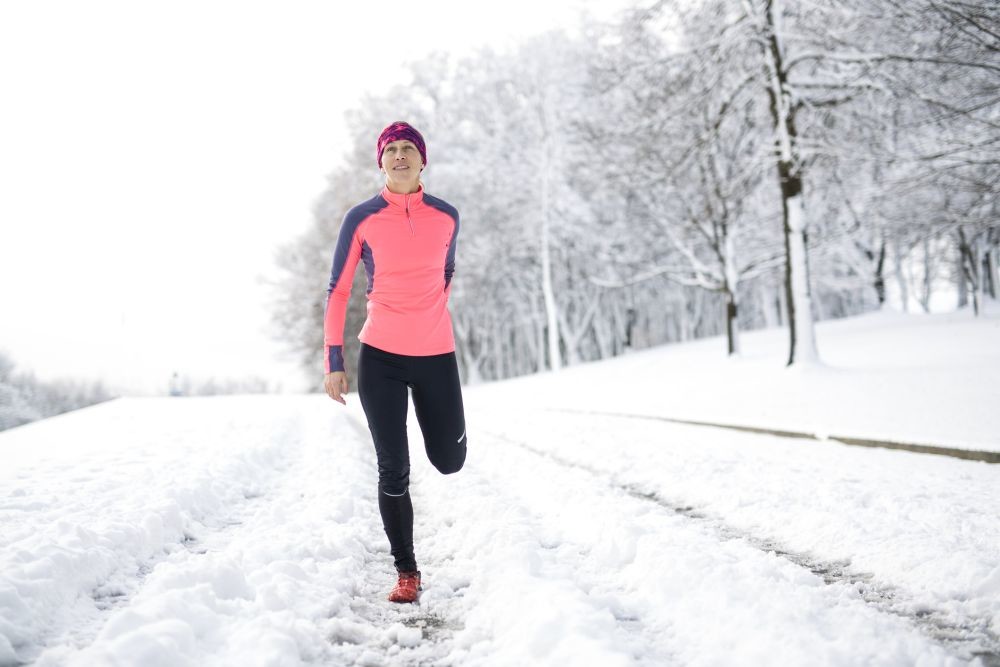
Star of easy:
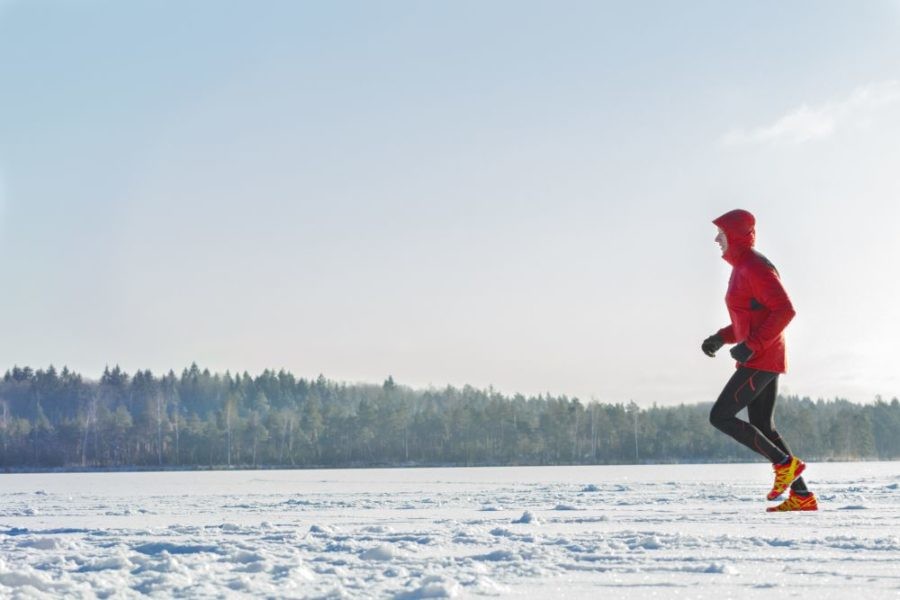
Warming up is always important, but especially so in the winter. Even if you aren’t planning on going out for a fast or hard run, you should take it extra easy for the first five or 10 minutes of your session. Once your body warms up, you can pick up the pace.
Check the weather:
Winter sometimes is unpredictable. One day it can be 5 C and the next it can be -10 C. Unlike in the summer, when you can pretty much always get away with wearing the same type of outfit, in the winter, you need a running gear lineup. Some runs all you’ll need is a shirt or two, leggings, your hat and gloves, but on other runs it’ll be necessary to throw on a sweater, a jacket, a buff and maybe even more. Before every run this winter, take a look at the weather forecast so you can dress accordingly.
Leave things behind:
It’s better to wear too many layers rather than too few. You might start a run all bundled up, but as you get moving, you might start to get too hot. If this happens to you, don’t be afraid to leave things behind and go back to pick them up later. Tie your jacket or sweater to a signpost or tree, make sure you know exactly where it is and keep running. This tip probably isn’t the best for city runners, but anyone in smaller towns can probably get away with it without worrying that their gear will get taken.
Don´t trust the snow:
Be careful when you run on potentially slippery roads. Even if the snow on the ground looks like it’s packed down well, it can be slippery. Sometimes only a small dusting of snow covers the ice, and if you step on that, you’ll end up on the ground. It’s especially important to take it easy around corners. It’s OK to run fast in the winter, but make sure you focus on where you’re stepping so you can be as safe as possible every run.
Running the day if possible:
potentially slippery roads. Even if the snow on the ground looks like it’s packed down well, it can be slippery. Sometimes only a small dusting of snow covers the ice, and if you step on that, you’ll end up on the ground. It’s especially important to take it easy around corners. It’s OK to run fast in the winter, but make sure you focus on where you’re stepping so you can be as safe as possible every run.
Try out a race:
This winter you won’t be able to find an in-person race, but that doesn’t mean you can’t jump into virtual events. A lot of people reserve races for the spring, summer and fall, but why deprive yourself of competition for an entire third of every year? Do yourself a favour and enter some virtual races this winter. It’ll help motivate you in training and add some fun to your schedule.
(12/28/2020) ⚡AMPby Ben Snider-McGrath
For runners, 2020 was a year of noes, no races, no group runs, that is the reason why runners are looking forward to 2021
For runners, 2020 was a year of noes. No races, no group runs and, at least for a while, no (or very little) fun.
We eventually figured out how to have fun while keeping safe, which is one of the reasons next year looks like it has the potential to be better than 2020. Although the pandemic won’t magically end when we ring in the new year, the are several reasons runners should look forward to 2021, which could be a year of yeses.
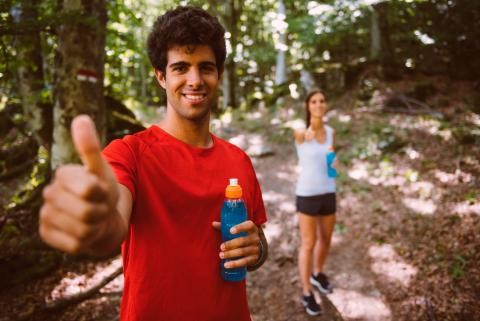
Back to races:
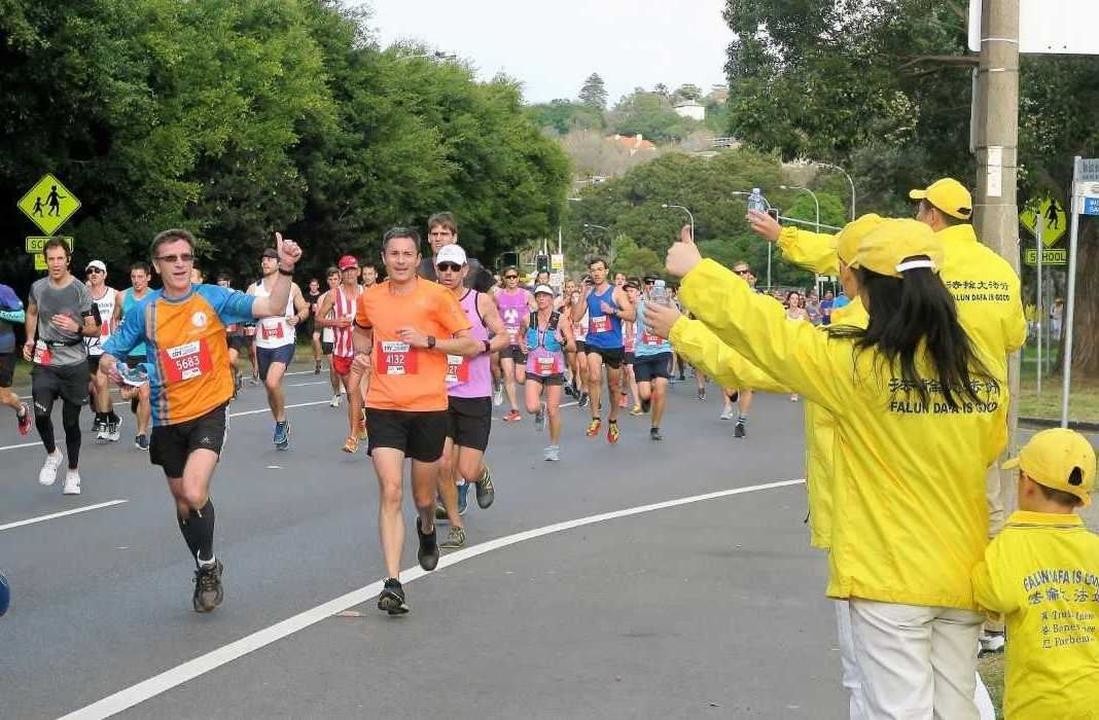
It doesn’t look like mass participation races with thousands and thousands of runners will make a comeback in 2021, but that doesn’t mean smaller events won’t be held. As the pandemic wore on throughout the year, race organizers and event teams came up with plans for COVID-friendly runs. These organizing teams have worked closely with local and provincial health officials to create safe race formats, and that planning won’t stop throughout the winter.
Come spring, there could be a good number of race opportunities for runners across Canada, and while you shouldn’t expect to run alongside 10,000 of your closest running buddies, you might get the chance to run in a real race in 2021, which is definitely a reason to get excited.
The fall marathon schedule:
With the postponements of the Tokyo, Boston and London marathons, all six World Marathon Majors (WMMs) are set to be run in the fall of 2021. The mass participation events at these races might not be able to go ahead as planned, but after the success of the London Marathon’s elite-only event this year, there’s a good chance that the other five WMMs will follow suit and host elite fields next year.
This packed fall schedule will make for an exciting few weeks of races for running fans to watch, which will be a welcome change following 2020, a year in which we only saw a few elite marathons.
One of the biggest dissapointments for athletes in 2020 was the cancellation of the Tokyo Olympics. As we learned this year, nothing can be considered a sure thing in the age of COVID-19.
But International Olympic Committee officials have expressed their confidence that the Games will go ahead next summer. At the moment, the Games appear to be a go, and that is a big reason to look forward to 2021.
When COVID-19 first hit, we were thrown into the world of no races with pretty much no warning. Now, after months of living through a pandemic, we know how to keep ourselves busy when we can’t race. We’re confident that race organizers will be able to get their events up and ready to go with proper COVID-19 guidelines in place next year, but now we’ve all gotten creative and figured out how to come up with different running challenges. Whether you’re into time trials, ultra challenges or any other kind of personal competition, you’re set for an entertaining 2021.
Virtual challenges and events:
This is the same deal as the last reason to look forward to 2021. When the pandemic first started, race organizing teams were caught off-guard and left without many options for their events. Many races transitioned to virtual formats, but some cancelled everything for 2020. In addition to planning COVID-friendly in-person races for next year, a lot of these organizing teams have virtual events and challenges ready for 2021, which means we’ll all have so many options to keep ourselves busy, no matter how the global health situation looks.
(12/28/2020) ⚡AMPby Ben Snider-McGrath
Lake Biwa Marathon to be Subsumed Into Osaka Marathon beginning in 2022
On Dec. 25 it was learned that the longest-running marathon in Japan, the Lake Biwa Mainichi Marathon, will become a part of the Osaka Marathon beginning in 2022.
Following Lake Biwa's 76th edition on Feb. 28, 2021, it will next take place under the tentative title of the 10th Osaka Marathon and 77th Lake Biwa Mainichi Marathon Combined Competition.
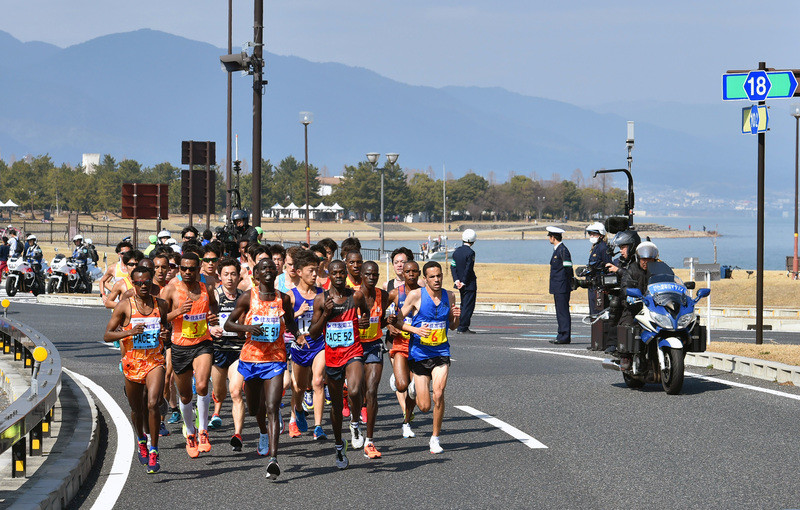
The Osaka Marathon executive committee finalized the plan at a meeting in Osaka on Dec. 25. Plans call for the 2022 race to take place on Feb. 27 utilizing the existing Osaka course.
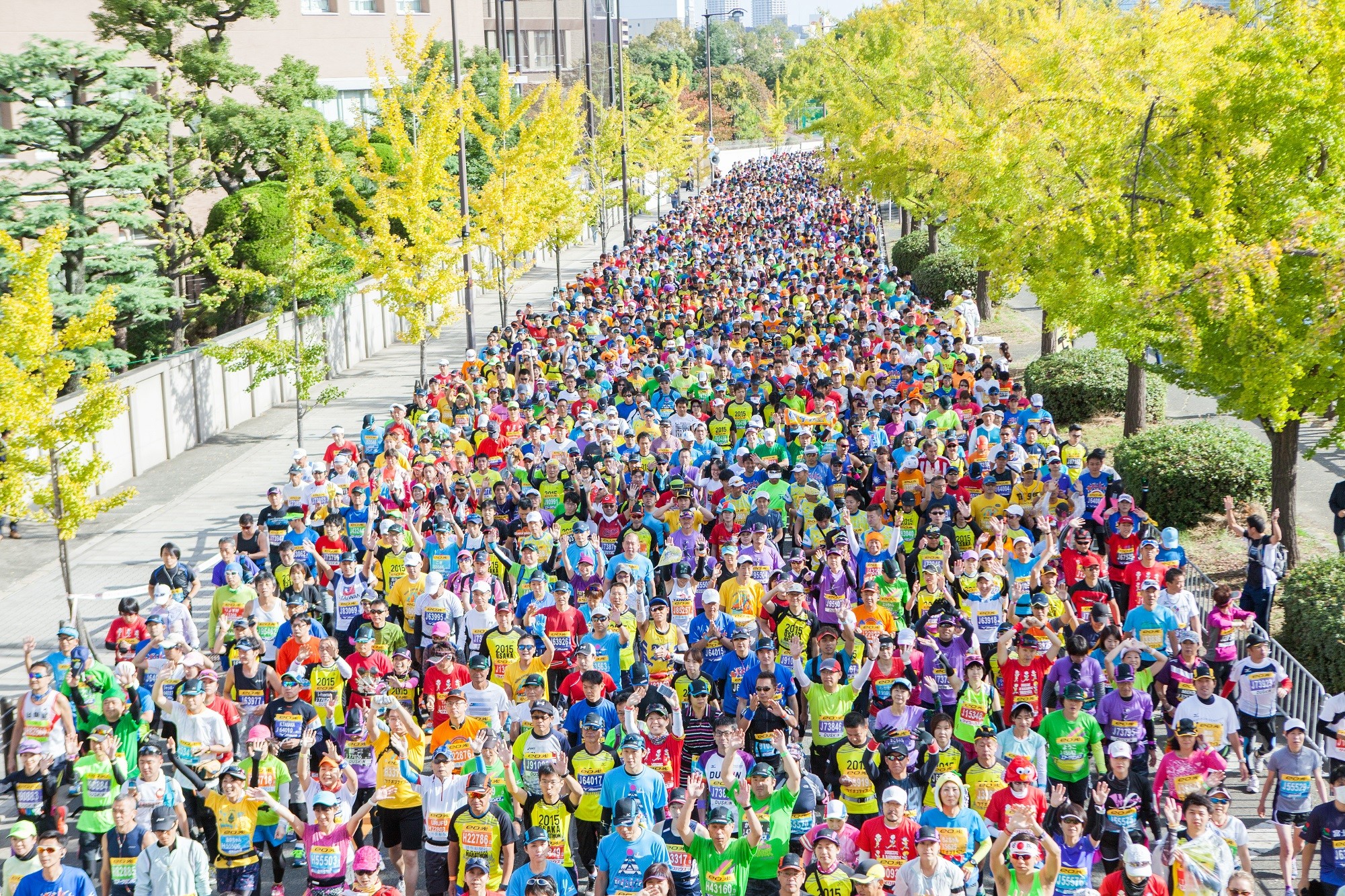
With an eye toward World Athletics' preference for large-scale races that combine elite and mass participation marathons, the plan will combine Lake Biwa's history of attracting top-level international and domestic athletes with Osaka's status as the second-largest mass-participation marathon behind only the Tokyo Marathon.
Organizers are aiming to go one level higher than Lake Biwa's current World Athletics ranking of gold to achieve the top-level platinum ranking, and hope that the arrival of such a prestigious event will help pave the way for success for the Kansai region at the 2025 Osaka World Expo.
Lake Biwa's first edition in 1946 was held in Osaka, moving to its current location in 1962. Its lakeside course has welcomed countless famous athletes and helped produced a large number of Olympic and World Championships team members.
The Osaka Marathon began in 2011. Starting in front of the Osaka Government Offices, its course passes many of Osaka's most popular tourist sites before finishing at Osaka Castle Park.
Its 10th running in late November this year was cancelled due to the coronavirus crisis, but it had attracted a field of 35,000 entrants.
(12/28/2020) ⚡AMPby Brett Larner
Osaka Marathon
In 2022 the Lake Biwa Mainichi Marathon and Osaka Marathon were held together. For 2023 the name of the marathon will be Osaka and both men and women can run the race. The original male-only competition was first held in 1946 and, having taken place every year since then, it is Japan's oldest annual marathon race. The early editions of...
more...A Runner At The Marathon Project Tested Positive For Covid-19 After The Race
A messageboard thread was started on Tuesday saying that a runner at Sunday’s Marathon Project race in Chandler, Arizona had tested positive for Covid-19 after the race. One of our volunteer moderators deleted the thread early Wednesday morning. The thread should not have been deleted as we have reached out to race organizer Ben Rosario and he has confirmed that there one racer tested positive after the race.
Here is what Rosario wrote us in a text message.
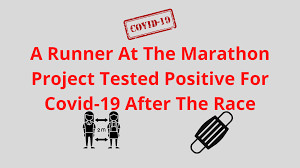
“Three athletes tested positive earlier in the week and had to scratch (didn’t travel as a result) so the protocols worked really well in that respect. One athlete had an issue post race (non covid symptom related) and had to go to the ER. They tested for covid while there and the athlete was positive. That athlete contacted anyone they spoke with that weekend (very minimal). We let all the athletes know in our post-race thank you email and specifically contacted anyone the athlete ran next to in the race (also minimal).
No one else has had any issue. With the protocols in place race weekend, we feel confident this was isolated. And because the athlete was positive Sunday night we also feel that the most likely scenario was that said athlete contracted the virus sometime between their negative tests earlier in the week and before race weekend began.
The athlete has mild symptoms but doesn’t seem like a bad case. So again, race weekend went as planned. The protocols worked really well. It’s unfortunate that this athlete got sick but we’re confident that it wasn’t a result of the race and that it wasn’t spread.”
(12/27/2020) ⚡AMPby Let’s Run
After Overcoming Drug and Alcohol Addiction, He Ran Off 216 Pounds in Two Years
“I used to assume that I’d be that fat guy forever—but my life is just starting.”
Before I started my weight-loss journey, I struggled with drug and alcohol addiction. But after I stopped doing drugs, the weight piled on. The drinking continued, and instead of drugs, I turned to food.

I fell into a vicious cycle of drinking and eating, and the bigger I got, the more depressed I felt. At my heaviest at 28 years old, I weighed 446 pounds. I was experiencing heart palpitations and sleep apnea because of the weight. My wake-up call was when I realized I had to hold my breath to bend down to tie my shoes.
I wanted a better life. I knew it would take time, but I needed to heal from my addiction and unhealthy habits. Finally, in my 30s, I became sober from drugs and alcohol. But I remember looking at my son and thinking becoming sober wasn’t enough—I wanted to create a healthier example for him. I was wearing a size 54 pant and a size 5X shirt. I felt like I wasted so much of my life—all my 20s—to the party scene. And if I didn’t change anything, I may not even make it past my 30s.
In 2018, I joined a CrossFit-style gym, and I had to run during the workouts. I remember running 100 meters, and thinking that I was going to die. I thought, This is crazy. I’ll never be able to run with my son.
At the time my son was running cross country at school and in local 5K fun runs. He asked me to run one with him, and I was so overwhelmed because I had just started running. But it motivated me to keep up with my workouts—and I made some serious dietary changes. When I was at my heaviest, I ate any food that crossed my path. I switched to eating an organic, plant-based diet whenever possible, and the weight started falling off. I lost 170 pounds and started running more.
I was honestly winging it when I started. A nice employee at my local running store gave me some good advice on training plans. Between that and watching some YouTube videos, I just listened to my body and mixed in sprints, calisthenics, and long runs. I began running 5Ks and 10Ks.
It wasn’t until 2020 that I really took running seriously. I had finally gotten comfortable lifting weights and doing group workouts when COVID-19 forced gyms to close. Not wanting to lose my results, I started running more.
I now run six days a week and have two strength-training sessions a week. I don’t follow a strict training plan but have slowly upped my mileage—I recently completed a 30-mile and a 40-mile training run. In November I did a virtual 100-mile challenge called the Corona Lisa 100 Mile Challenge, and I plan to run my first official marathon, the Clearwater Marathon, in January 2021.
In two years, I have lost 216 pounds. I’m hungry to show people that anything is possible, no matter how young or old you are, what your background is, or where you’ve come from. I’m hungry to push myself as far as I possibly can encourage others to change for the better.
Not only has running made me healthier physically, it has also been a mental and spiritual outlet for me as well. I run by myself with no headphones, and it gives me time to think, pray, and observe the world around me.
Running is something more than just running to me now. It’s time for me to just feel myself moving and to remember how hard it was just to walk down the street before. It reminds me how I used to be chained down with my addiction to drugs and alcohol. Running is more than just moving your feet— it’s a feeling of freedom with every mile I go.
The work isn’t over yet either. There is still a hunger. Currently, I’m hoping to do an in-person 100-mile race in 2021 at the age of 41. Plus, I want to lose another 30 pounds to reach my goal weight of 200. 
​
I wish everyone could feel the happiness that I feel while I’m running. I can appreciate the body I have. Even though I sometimes get overwhelmed by seeing my loose skin shake as I run, it makes me think how much I’ve changed from my past.
Running has brought so much happiness to myself and to my family. I used to assume that I’d be that fat guy forever—but my life is just starting. If I can encourage just one person by sharing my journey, then it’s all worth it. If you’re feeling discouraged about your weight, figure out what’s holding you up mentally, and eventually it will happen.

(12/27/2020) ⚡AMPby Runners World
Hot Water Immersion Via Hot Baths/Tubs And Performance
I’m always looking for possible interventions that can improve the health and performance of athletes I coach. It usually starts with a problem to solve. Here, I’m writing this article in December because the problem is that cross-population injury rates seem to go slightly up and overall performance seems to go slightly down in winter. There aren’t great studies to validate that hypothesis, but a 2014 master’s thesis found higher rates of musculoskeletal injury in winter months, attributing that increase to cold, icy and hard surfaces (cue Frosty the Snowperson saying, “That’s what she said”). And, in coaching, I rarely see the same levels of rapid progression in winter as in the other seasons, even controlling for training approach and background.
So we have the problem, and it boils down to this: screw winter.
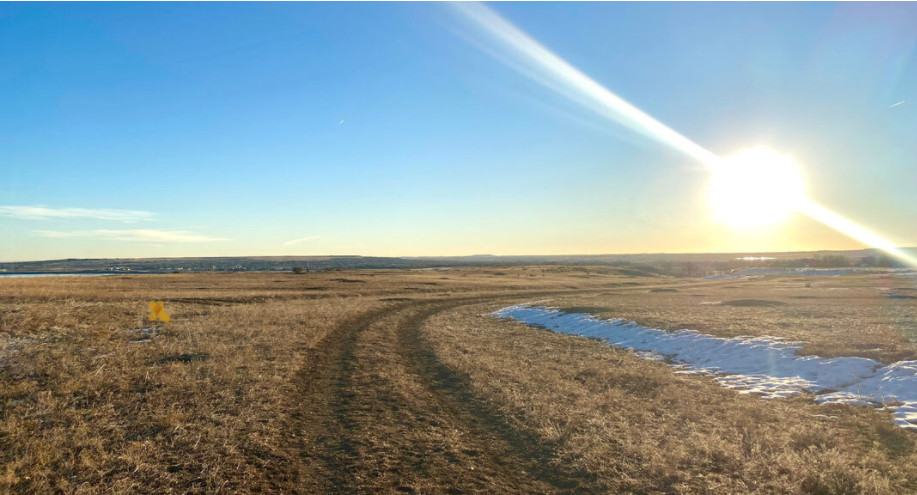
There are plenty of possible reasons for performance and health reduction during winter. Some options include the cold’s impact on blood flow, slippery surfaces affecting form, reduced Vitamin-D levels, lower motivation, fatigue from past training and inadequate ice-cream intake. I’m sure you can think of a bunch of others. But in thinking about this topic way too much over the years, I kept coming back to another explanation. Maybe it’s related (at least partially) to blood volume.
A reduction in blood volume (primarily via plasma volume, consisting mainly of the water content in blood) during winter has been observed for nearly 100 years (see this 1940 article in the American Journal of Physiology). A 1950 article in the Journal of Physiology pegged the seasonal blood-volume difference at 8.6%, and subsequent estimates have varied around that number depending on where you look. While there is no set number for every person, that 1950 article is titled “Seasonal Changes in Human Body Fluids,” so I know I trust it.
There are a few principles related to blood volume that could be important here.
One, as outlined by a 2010 article in the Journal of Applied Physiology, heat acclimation and increased blood volume can be associated with improved performance in both hot and temperate conditions. Two, there is growing evidence that hemoglobin mass may be affected by blood-plasma volume changes. A 2019 study in Frontiers of Physiology and a 2020 study in Experimental Physiology found that hemoglobin mass increases after plasma volume increases in athletes training in the heat. Three, both plasma volume and hemoglobin mass may impact how the body performs, heals, and adapts. The physiology of how it works gets complicated and is not 100% direct (incorporating seasonal changes in hematocrit, or the ratio of red blood cells in total blood volume), so the exact relationships are not always certain.
The million dollar question follows: how the heck would those principles apply in winter? Each of those blood-volume concepts is based on beneficial adaptations to heat, so when thinking about winter we are extrapolating the inverse—negative adaptations to lack of heat. Perhaps the body adapts to cold weather with time and none of the issues are relevant when that equilibrium is reached. There are studies on seasonal hematological variation (see this 2013 review in Sports Medicine) that do not provide a definitive answer for athletes. In addition, there is no settled evidence that cold-weather performance is significantly affected by heat adaptation (2014 review in Sports Medicine), so that part may not be relevant at all.
Either way, we do know that blood volume usually decreases in winter and increases in summer. I have written articles on heat acclimation to improve performance and blood volume’s role for fitness, but there are no perfect studies looking at the training question I can’t stop thinking about. If blood volume is important in summer, might it also be something to think about (at least a little bit) in winter?
I think it might be.
That sentence is powerful prose, I know. The conclusions to come rely on the physiological theory that blood volume matters for athletes even in cold conditions (which is debated), and that natural, seasonal reductions in blood volume could affect injury rates and performance. Perhaps that is part of why Scandanvian athletes are so famous for their saunas (fun side note: there are 2.2 million saunas in Finland for a population of just over 5 million people). And all that prelude brings us to the topic of the article: hot-water immersion via baths or tubs could play a role in winter health and performance.
Let’s take a step back first. We have known for a long time that exposure to heat causes rapid expansion of blood volume. As outlined in a 2000 review article in the Medicine & Science in Sport & Exercise journal, total blood volume is primarily composed of the sum of erythrocyte volume (red blood cells) and plasma volume (mostly water plus some dissolved proteins, glucose, clotting factors, electrolytes, hormones and other components). Plasma volume can adapt to environmental changes rapidly. For example, a 2015 study in the European Journal of Applied Physiology found a 17.8% increase in plasma volume in highly trained cyclists after just four exposures to post-exercise sauna. Plenty of other studies back that up. And recent studies tie those plasma volume increases to red-blood-cell-volume increases too.
Hot-Water Immersion Studies
A 2015 study in the Scandinavian Journal of Medicine & Science in Sports had 17 non-heat-acclimated males do a 40-minute easy run every day for six days, followed by hot-water immersion in 104 degrees F water (40 degrees C) for 32 to 40 minutes. The hot water caused heat acclimation similar to what would be expected from traditional sauna protocols—lower skin temperature and perceived exertion in temperate and hot running, improved performance in hot running and a non-significant improvement in temperate running. The study did not measure blood volume, but those adaptations are likely at least partially associated with increased plasma volume.
A 2018 study in Frontiers of Physiology followed up on those findings, based on the assumption that the principles may apply differently to trained endurance athletes since there is some amount of heat training in normal running at baseline. The study used the same protocol, but with eight trained athletes and eight untrained athletes. The findings of the 2015 study were reproduced in both groups. A 2019 study in Frontiers of Physiology found that athletes following the protocol retained the heat acclimation benefits for at least two weeks. Yet another 2019 study in Frontiers of Physiology found that delaying the hot-water exposure from right after exercise to eight hours later still had similar benefits, though of slightly less magnitude.
That’s all conjecture, so the exact mechanism isn’t the most important thing in the world. What matters more is the general principle that some passive heat exposure could be helpful even in winter months.
If you have a hot tub, consider spending some time in it. I wouldn’t suggest mimicking the study protocols unless you have a doctor and a crash cart on site, since 30 to 40 minutes at 104 degrees F could cause a deadly case of prune fingers and an even deadlier case of heart attack. But all of these benefits likely happen on a spectrum, so some time in the tub will likely have some benefits, even if they’re not as rapidly undeniable as the six-day protocols in the study.
Most of us will not have a hot tub, though, unless that student debt forgiveness plan goes through. So what are we to do? In the last few years, a few athletes I coach have sworn by hot baths for the same purpose. Their anecdotes are powerful enough that my wife Megan and I both take hot baths each day.
Now we get to the good stuff.
We have the problem: winter can suck for running health and performance. We have a hypothesis: that suckitude may at least partially be related to natural changes in blood volume. We have data that may be relevant: studies show heat acclimation is partially associated with increased blood plasma volume, and that hot-water immersion improves heat acclimation, likely increasing blood plasma volume. Now let’s conclude with another unproven (possibly wrong) hypothesis: hot-water immersion could make winter running more fun by giving blood volume a helpful nudge when it wants to go to sleep for the season.
Does it make a difference? I have no freaking clue. My routine is to fill up the bathtub with some soothing hot water and meditate for 10 to 20 minutes (by meditate, I mean listen to a bumping playlist), until I break a nice sweat. The first week I did it this year, my heart rate after 10 minutes was 10 to 20 beats per minute higher than it is now, possibly indicative of some acclimation effects over time, but that’s subject to tons of confounding variables.
Long story short: There is some physiological basis for benefits from hot baths or hot tubs (or even extra hot showers), both in winter and summer. However, the evidence is by no means definitive or even overly persuasive outside of the extensive study protocols. But I do know this for a fact: Some time in a hot bath is awfully relaxing.
And whether it’s winter or not, we could all use a little bit of extra time to relax.
(12/27/2020) ⚡AMPby David Roche
What the heck is "runner's face"?
A recent post on the Get the Gloss site out of the U.K. has some runners looking anxiously in the mirror, asking themselves, “Do I have ‘runner’s face’?” What even is runner’s face?
Then it seems blindingly obvious: running makes your face sag.
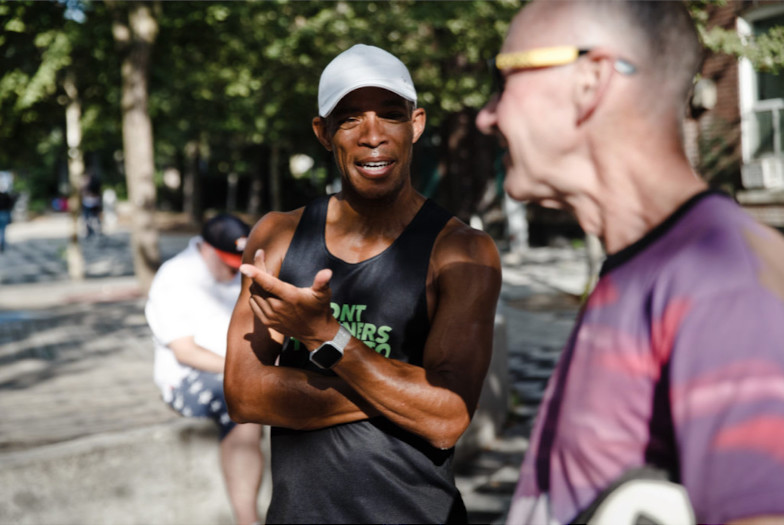
The post includes photos of the author (a runner) taken before and after receiving injections of a dermal filler product derived from cellulose that’s supposed to stimulate the body’s natural collagen production. It reportedly continues to puff out your wrinkles for three months after the initial treatment, and lasts two to four years.
Toronto cosmetic surgeon Dr. Oakley Smith confirms that runner’s face is definitely a thing: “It tends to be among people who are obsessive runners – the ones who have to run every day,” says Smith. “They tend to be thin, and are probably very healthy, but they don’t look healthy because they’ve lost a lot of fat from their face, and it makes them look gaunt. It’s not a good look at the moment.”

Of course, aging runners aren’t the only people taking advantage of these treatments, and Smith says there’s no proof that it’s the repetitive pounding of the pavement that causes this sagging to occur. But it makes intuitive sense: “Why would the face be immune to the repetitive strain that affects the other parts of the body?” he asks (rhetorically). The usual places where this shows up is at the temples and just below the cheeks. Typically, these areas can be volumized with fillers such as the product mentioned above, to give a more healthy and youthful appearance, though Smith says that unlike the product mentioned above, most fillers used to treat the condition are made from hyaluronic acid (H.A.), which is produced naturally in the body.
Some people opt for botox injections instead, which is not a filler, but diminishes the appearance of wrinkles by paralyzing facial muscles.
He cautions that there is wide variation among fillers. “If you inject pure H.A., it will be gone in a week,” he says, explaining that the molecules are modified so it takes longer for the body to break them down, and much depends on the skill and experience of the professional administering it. He adds that there are a number of other, non-H.A. products (such as the one mentioned in the post) but they are less reliable. “H.A. fillers are mostly pretty safe and predictable, without a lot of complications.”
The cost for treatment with fillers depends on the quality of the product and the experience of the health professional administering it, but typically ranges from $400 to $800 per syringe.
(12/27/2020) ⚡AMPby Running Magazine
Think like a pro - Why all runners should practice these mind games
The pace at which the elites un is something that amazes me. The way they move effortlessly, as if they don’t fully comprehend how fast they are travelling, while the rest of us watch in awe. One of the beautiful parts of my job is interviewing some of these athletes, men and women whose abilities leave me wondering, how do you run that fast?
A few days after he ran the London Marathon, I spoke with Eliud Kipchoge, the first man to break two hours for the marathon, and the world record holder. Kipchoge’s race hadn’t gone to plan (he finished in eighth place) and I wanted to know how he dealt with that mentally, both during the race and after he had crossed the finish line.
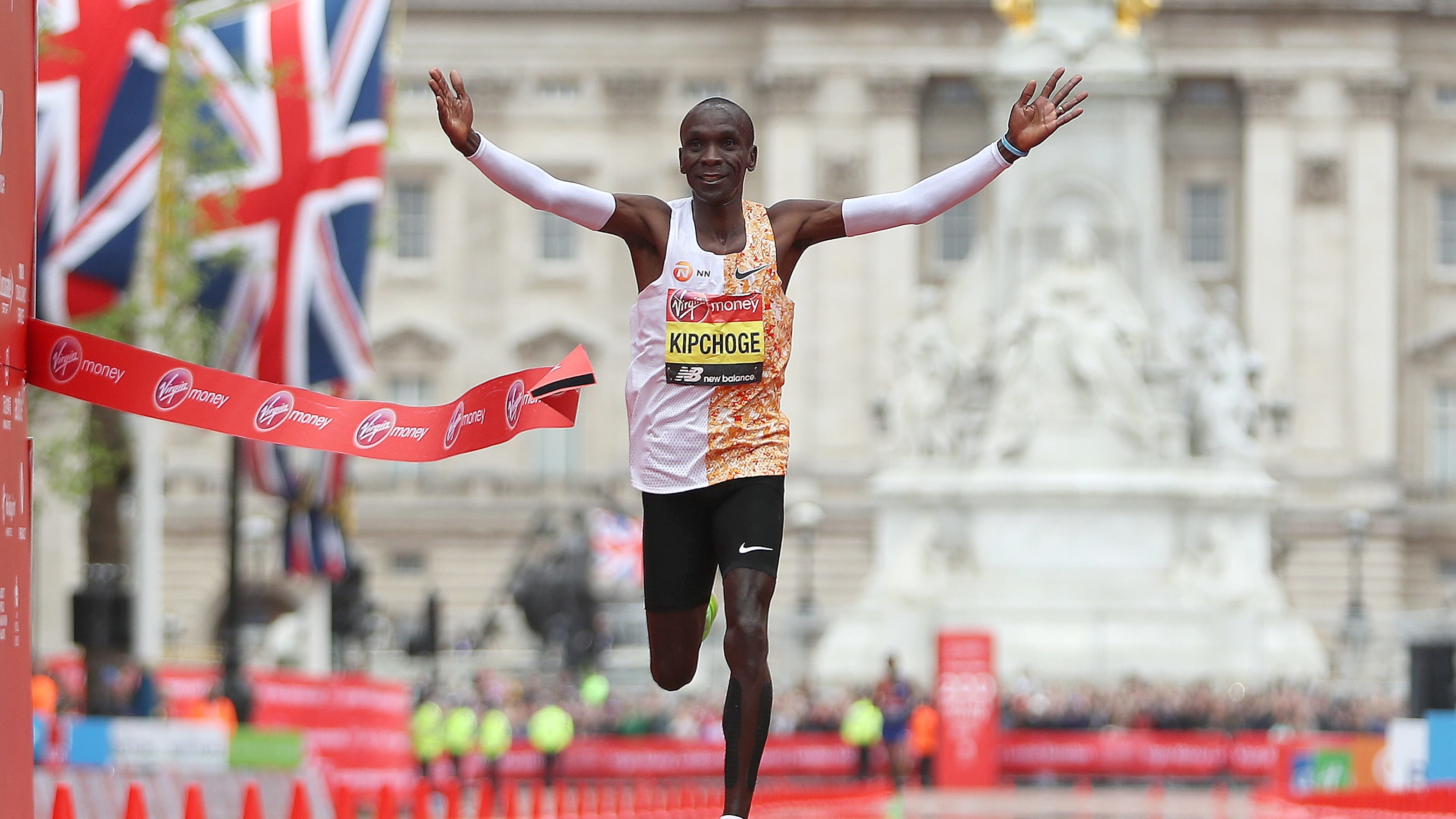
Much of what he said was inspiring, but one thing stuck with me: he talked about the law of substitution, the idea that your mind can hold only a negative thought or a positive thought at onetime, but your mind can also choose to replace one thought with the other.
I realised it’s something I have been forced to do on several occasions. Things going wrong midrace or on training runs because of injury, poor fuelling, gastric distress, cramp, overtraining or not enough training; or just the simple fact that it wasn’t my day.
The question is, what can we do to prepare for or combat situations such as these, regardless of where we are on our running journey? Here are a few tricks that have helped me along the way. The beauty of these mental exercises is you can use them one at a time or all at once.
Visualise
Create a mood board of what your win looks like – create this in your head or make it physically. Visualise your goal completed. This method has got me over the finish line many times at the London Marathon. When the going gets tough, I think about the finish, the route, people cheering, crossing the line, holding the medal, celebrating.
Make your mantra
A mantra is a word or phrase repeated constantly to aid concentration, to help to keep you in the zone, motivated and moving. I have things that I scream at myself or whisper quietly, depending on how I feel at the time. My first has been with me since my first run; it is, ‘Get to the bottom of the road.’ My second has been with me since I hobbled over the line in tears at my first marathon and that is, ‘We’ve got this, we’ve been here before.’ Think of something meaningful to you that will help keep you going.
See your showreel
I like to have in my head a rolling showreel of beautiful memories that don’t have anything to do with running. A favourite is of me sitting on a beach with the water rolling in on my feet, the waves rippling and the sun beating down on my face. I smile and push on.
Think body and breath
Simply thinking of nothing but your body and breathing can send you into a meditative space, bringing an air of calm to your running. You might find that by listening to your heartbeat or footsteps, your body starts to relax, alleviating some tension that might be holding you back.
(12/27/2020) ⚡AMPby Runner’s World
8 Ways You Can Harness the Long-Run Mindset
Yes, you can shift your attitude to think beyond short-term outcomes and work toward lifelong success.
Confession: Tempo runs scare me. Those long, hard, sustained efforts always look impossible when I see them on paper. Doubt creeps in. Some of my worst workouts have come from tempo runs.
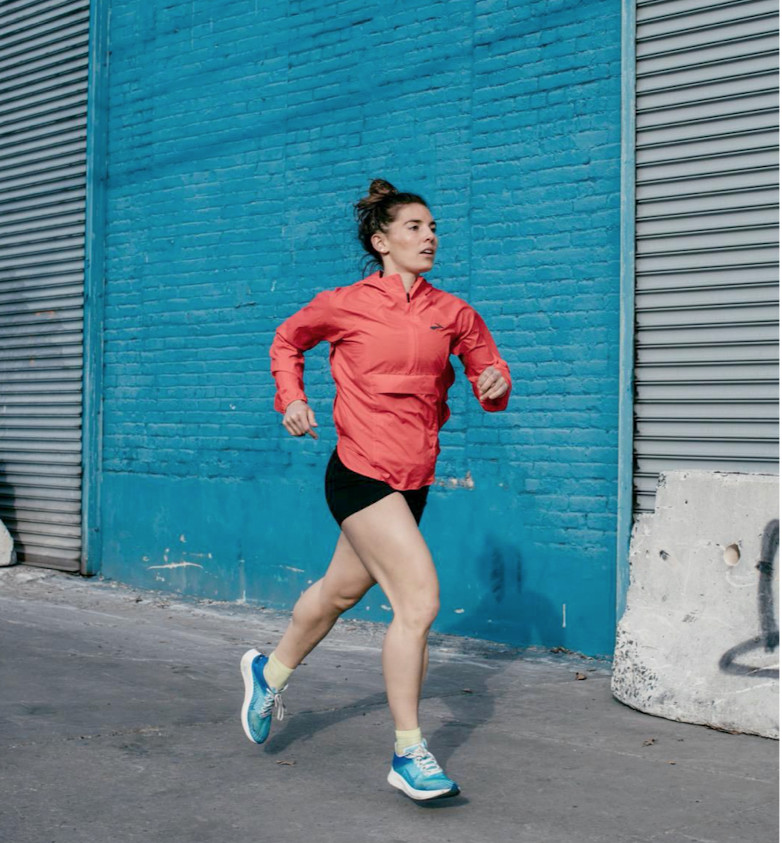
I remember one run in particular—a 50-minute slog at a ludicrous pace in the spring of 2018. I saw it on my plan and immediately began creating a laundry list of excuses as to why this was simply just not going to work, why I wasn’t fit enough, why I wouldn’t finish, why I would fail. Before I even laced up my shoes, I’d already convinced myself I couldn’t do this. Instead of using the warmup to find my groove, prepare for success, and get excited to make the best of it, I adopted a loser’s mindset, revisited my list of excuses, and fell further into a bad attitude.
How’d it go? You already know. I quit the workout mentally before I’d even started. Who knows how many times I stopped and restarted my watch? If you count the time I spent sitting on the curb feeling sorry for myself, it made for an awfully long afternoon. Well, it made for an awfully long few weeks, actually. One bad workout would derail me for days. The doubt lingered. I questioned my fitness. I cut more workouts short. And pretty soon, my fitness plateaued—or moved backward.
The problem, I realized, was that I treated my entire training plan like a tempo run—hard, fast, strict. In a tempo run, if you don’t hit your pace early, it’s nearly impossible to catch up. In my training plan, I felt like if I didn’t hit a workout early, I wouldn’t be able to catch up.
So how did I fix my mindset? I realized I needed to treat my training like my favorite workout: the long run.
I love long runs. I love ignoring my watch, settling into a relaxed pace, enjoying the route, and focusing on only one goal—finishing. I love that I can have a bad mile in the middle and still end strong.
Now, when I set a new goal and write a new training plan, I have what I call “the long-run mindset.” I find success and value in my training because I’m not desperate for immediate results like I have been in the past. I care more about the big picture and my long-term goals as a runner. Yes, there is still an important place for hard, fast tempo runs, but I have shifted my attitude to think bigger than short-term outcomes and work toward lifelong success.
At the start of a brand new year, as you evaluate, set, and chase new goals, I challenge you to have a long-run mindset too. How? Adopt the same tips and tools you need to survive a good long run into your training as a whole.
→ Pace yourself
A good long run always starts slow—slower than you think. It’s the same with training. Realistic timelines are essential for success. Generating movement forward at a speed that is sustainable is key. Consistent efforts over a long period of time reap large rewards. It’s not about a one-mile split in the big picture of success; it’s the amount of time it takes you to get there.
→ Focus only on your next mile marker
It’s easy to get overwhelmed when you recognize or overthink the long route ahead. So don’t do it. Focus on one mile (or one workout) at a time. Work toward mini victories that keep you moving in the right direction. Small and meaningful efforts on a consistent basis build substantial progress. But in the moment, all that matters is the next mile.
→ Find your why
Meaningless miles are the hardest miles, which is why during long runs, I like to run to somewhere—a brunch spot, my friend’s apartment, a gorgeous overlook. In training as a whole, your “why” will likely be more abstract and meaningful but just as important. What are you running toward? A healthier lifestyle? A PR? Figure out the reason for the miles, and they become easier.

→ Fuel your body
Fuel is vital during a long run, and just as vital on a daily basis. Eat healthy often, and then don’t be afraid to reward yourself. Every experienced runner knows that if you’ve waited until the wall to care about nutrition, you’ve waited far too long. Be proactive in your choices to live a well-balanced and energized life.
→ Stop looking back
It steals time and energy from your ability to move forward. Stop comparing yourself to an old version of you, and focus on the open road ahead. Worry less about what is behind you, and put time and effort into what is in front of you. This will not only lead to more overall happiness, but it will also bring you closer to where you want to be with a clear focus forward.
→ Allow room for adjustments
Mentally prepare and plan for curve balls. Nothing goes perfectly all the time, and the sooner that you can accept the challenges and mishaps that might come your way, the sooner you can be prepared to work through them and overcome unexpected obstacles. During a long run, that might mean slowing down because of the heat. In training, that might mean taking a break because of an injury or big change in your life. It’s okay to change goals midway through.
→ Keep it interesting
I design my long-run routes to be fun, new, and rewarding. It’s the same with training. You have no obligation to chase a PR in every race you enter. You don’t even have an obligation to race. If you are stuck in a rut, change course.
→ Don’t do it alone
There will be times when you need additional support. Don’t feel afraid or ashamed to reach out to those important to you to ask for help, or just to join you on a run with several easy conversational miles. If they truly belong in your network, they will be happy to be there with you, right by your side in the moments of difficulty and the moments of reward.
Try 200+ at home workout videos from Men’s Health, Women’s Health, Prevention, and more on All Out Studio free for 14 days!
(12/27/2020) ⚡AMPby Runner’s World
What happened when the Tarahumaras' love of ultrarunning went global?
The book Born to Run brought attention to an indigenous Mexican’s people feats of long-distance running. A new documentary looks at what happened next
Next up in ESPN’s venerable 30 for 30 series is The Infinite Race, a documentary on a sports topic that hardly checks the biggest 30 for 30 box, in that the film does not involve a famous star athlete, sport or event. In fact, The Infinite Race kicks off with a simple story about an indigenous people’s joy of long-distance running.

The documentary explores what happens to these people, the Tarahumara, who live deep in the mountains of Chihuahua, Mexico, when their love of running, or even their calling to run, spills out to the rest of the world because of a popular book about running and an American known as Caballo Blanco, or the White Horse.
“It’s a story about resilience, survival and continuance,” Bernardo Ruiz, the veteran Mexican and American film-maker who directed The Infinite Race, tells the Guardian.
That the 50-mile Ultra Maratón Caballo Blanco, which The Infinite Race revolves around, will be held again next March in the rugged terrain of Chihuahua’s Copper Canyon is a testament to the event’s durability. Running won out, as it has for generations among the Tarahumara, but only after the event survived a culture clash that involved a lot of dollars and pesos, good and bad.
Although he directed an award-winning 2008 documentary about baseball star Roberto Clemente and says he always wanted to make a film about running, Ruiz deals with tougher subjects, like the US-Mexico drug war in his 2016 documentary Kingdom of Shadows.
He says of The Infinite Race: “I liked how it was a compelling, beautiful film about running, but it also talked about social issues.”
The film, which debuts on 15 December, starts a little slowly, but those who stick with it will find out much about an indigenous people’s rich past – and a future lighted by hope.
The Tarahumara, or the Rarámuri, have run vast distances for years, often wearing sandals that have tire treads as soles. They say running is in their blood: isolation and geography helped them build endurance to hunt prey. They became famous after they were featured in Born to Run, a 2009 bestseller by Christopher McDougall.
The central figure of Born to Run was American ultramarathon runner Micah True, also known as Caballo Blanco, who organized a race in 2003 that would eventually become the Ultra Maratón Caballo Blanco. True hoped the race would help the Tarahumara preserve their running heritage and, more significantly, their culture, which had been battered by hunger, a lack of drinking water, a shortage of housing and global heating.
True, who had wintered in the area for 10 years, offered prizes of cash and corn, a commodity: “I don’t want to see people kill themselves for corn,” he said in the documentary. He opened the event to ultramarathoners, and it became popular among Americans, who were looking for a new challenge and a new culture to explore.
True died in 2012 at the age of 58 of a heart attack while running, but the event named after him continued to grow. A shorter kids’ run for “Caballitos” was offered, with bags of school supplies given to participants. The event had become commercialized, even with its own line of merchandise, but the whole region benefited from Caballo Blanco’s idea.
But the region’s seclusion had also become attractive to criminal gangs, who took over farms to grow marijuana and poppy plants to smuggle into the United States, whose border is only about 550 miles to the north. People needed work, and the drug trade provided opportunities, with even distance runners hauling drugs. Gangs proliferated. So did violence.
“Many families were forced out of their communities because of the violence,” Irma Chávez, an activist, explains in the film. “Unfortunately, you have to run away before they kill you.”
The 2015 Ultra Maratón Caballo Blanco was supposed to be the biggest yet, but gangs all but took over the town, clouding the event with the real threat of violence. The Americans who helped organize the race, believing participants could be in danger, decided almost at the last minute to call off the official race. No vouchers for corn would be issued to participants.
“They kind of intruded with a heavy hand into a runner’s paradise,” Ruiz says of the gangs.
He says, “It’s been my view that the race organizers were stuck in kind of an impossible situation.”
And that might have been the end of the event. But a group of Tarahumara assembled on what was supposed to be the morning of the race – and ran the course anyway, without incident. The marathon was officially back in 2017. Miguel Lara Viniegras won the 2020 race, which attracted 220 runners last March, in six hours 43 minutes.
As an ultrarunner and photographer Luis Escobar says in the film, “People are looking for something big, outside of their office, outside of their home. It is a big struggle, it’s hard physically and mentally – and there’s nothing like doing it. When you complete it, you know that you can do anything.”
Ruiz, who says he spent most of his career examining the love-hate relationship between the United States and Mexico, had a compelling challenge: telling a story that was not that well-known and based in a place that was very difficult to get to from the outside world. “You’d have to kind of be an ultrarunner or a sports geek to care about it,” he says.
Perhaps the film won’t draw as big an audience as other ESPN documentaries because it does not include an American sports celebrity like OJ Simpson or Michael Jordan. But the 30 for 30 project, now more than a decade old, has become much deeper, delivering quality projects that are way more than mere sports movies. This is one.
As Ruiz says, 30 for 30 “is a franchise that is really film-maker-driven.”
(12/27/2020) ⚡AMPStrava's Year in Sport report tells the story of running during COVID-19
We didn’t need hard numbers to tell us there was a running boom in 2020, but Strava’s Year in Sport data report has confirmed that fact. There are many interesting stats to come out of this report, and if you’re on Strava, you’ve probably already seen your own personal year in review. Here are a few of the most mind-boggling and shocking numbers highlighted in the Year in Sport for 2020 — a year in which we all ran extremely far.
Skyrocketing in popularity
Outdoor walking took the top spot for the Strava activity with the highest increase in popularity between 2019 and 2020, but the running still saw quite a big jump, too. From April to June in 2020, athletes uploaded 1.9 times more outdoor runs compared to the same period in 2019. As for indoor runs, 1.3 times more activities were uploaded to Strava in 2020 versus 2019.
Mixing it up
With nothing else to do this year due to lockdowns, many runners decided to try new activities on Strava as well. Cycling was the most popular activity for runners (other than running, of course), and 11.2 per cent of us posted outdoor rides to Strava in 2020 for the first time ever. Outdoor walks came in a close second (10.8 per cent of Strava runners posted these activities for the first time this year) and indoor workouts finished in a distant third at 5.3 per cent.
Solo marathons
Events around the world were cancelled this year, but that didn’t stop runners from creating their own races and time trials. The total number of marathons uploaded to Strava was down from 2019, but that’s due to the fact that there were next to no official marathons available to race. Even so, Strava users uploaded hundreds of thousands of marathons, 44 per cent of which were run solo. This is reportedly up from just 14 per cent in 2019, back when most of us wouldn’t even consider running a marathon all alone.
Personal bests
This year was a big one for Strava PBs. According to the Year in Sport report, of the athletes who have had Strava since at least 2019, 55 per cent ran PBs in the 5K, 10K, half-marathon or full marathon. They might not have been run in official races, but moving forward, we all know what we’re capable of running when we finally do return to in-person events.
A lot of running
In 2020, Strava users ran a whopping three billion kilometres. That’s farther than the distance from Earth to Uranus. Strava runners also climbed a collective 28.8 billion metres this year, which works out to climbing Mount Everest 3.25 million times. That’s a lot of running.
(12/27/2020) ⚡AMPby Running Magazine
According to a study Glucosamine supplements may reduce overall mortality similar to regular exercise
Glucosamine supplements may reduce overall mortality about as well as regular exercise does, according to a new epidemiological study from West Virginia University.
He and his research partner, Jun Xiang--a WVU health data analyst--assessed data from 16,686 adults who completed the National Health and Nutrition Examination Survey from 1999 to 2010. All of the participants were at least 40 years old. King and Xiang merged these data with 2015 mortality figures.
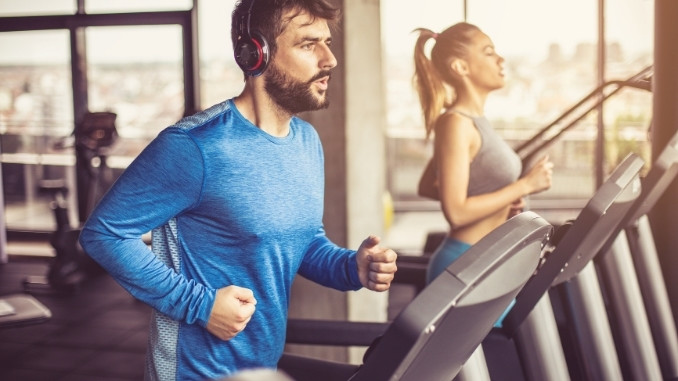
After controlling for various factors--such as participants' age, sex, smoking status and activity level--the researchers found that taking glucosamine/chondroitin every day for a year or longer was associated with a 39 percent reduction in all-cause mortality.
It was also linked to a 65 percent reduction in cardiovascular-related deaths. That's a category that includes deaths from stroke, coronary artery disease and heart disease, the United States' biggest killer.

"Once we took everything into account, the impact was pretty significant," King said.
The results appear in the Journal of the American Board of Family Medicine.
King himself takes glucosamine/chondroitin, one of the most common formulations of glucosamine supplements.
"I'm in a local cyclists' club, and we go for rides on weekends," he said. "One day I asked the other cyclists if they took glucosamine, and everyone did. And I thought, 'Well, I wonder if this is really helpful?' That's how I got curious about it."
He explains that because this is an epidemiological study--rather than a clinical trial--it doesn't offer definitive proof that glucosamine/chondroitin makes death less likely. But he does call the results "encouraging."
"In my view, it's important that people know about this, so they can discuss the findings with their doctor and make an informed choice," he said. "Glucosamine is over the counter, so it is readily available."
(12/26/2020) ⚡AMPby News Medical Life Sciences
Russia’s leading track and field athletes to compete at Olympics in Japan
Russia’s leading track and field athletes will have an opportunity of going next year at the Olympic Games in Japan next year, Russian Sports Minister Oleg Matytsin said on Thursday speaking at the Sport Forum Live event in Moscow.
"If we speak about the track and field athletics, I must say that our relations with World Athletics entered a constructive stage of relations," Matytsin said.
"We have accepted our mistakes from the past, elected the new leadership of the All-Russia Athletics Federation [RusAF] and are now actively cooperating about its membership reinstatement," the Russian sports minister said.
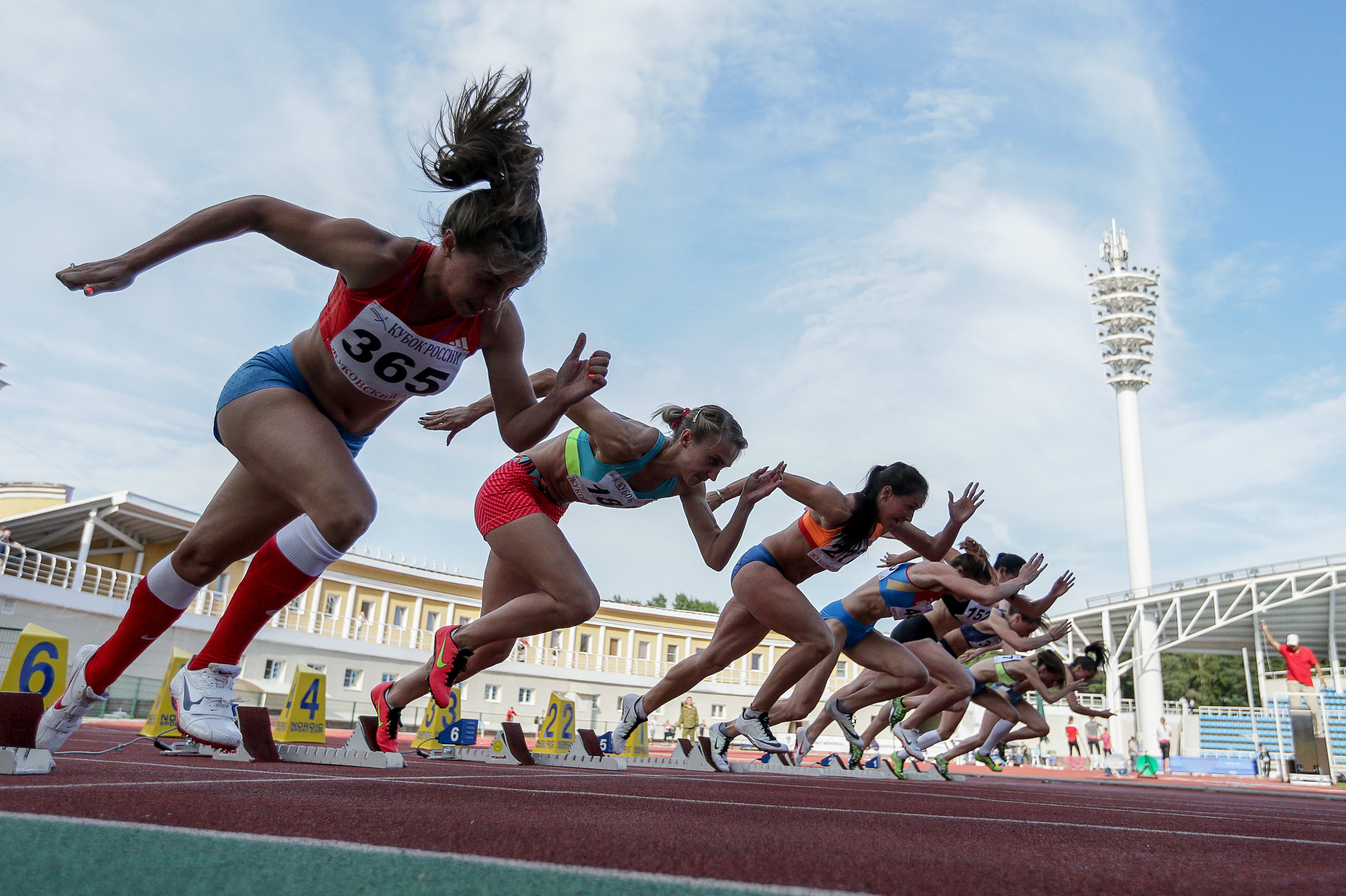
"I am positive that our leading athletes of track and field athletics will be cleared to perform at the upcoming international tournaments, including at the next Olympic Games," Matytsin added.
World Athletics, suspended RusAF’s membership in November 2015, following a wave of anti-doping rules violations and formed a special mission on the issue.
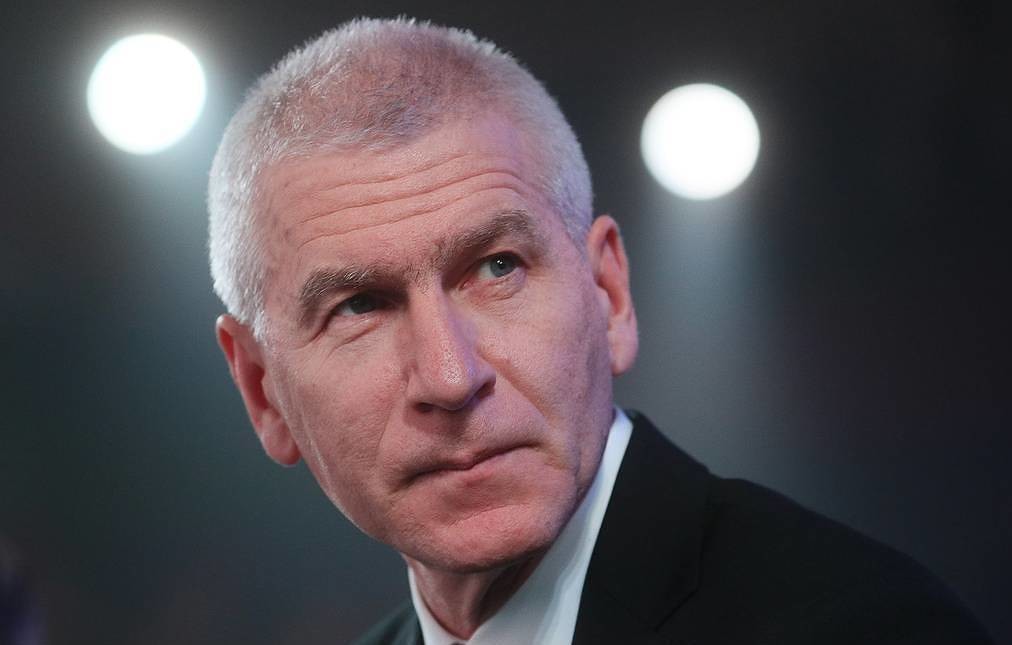
World Athletics, however, allowed clean athletes from Russia to participate in international tournaments under the neutral status or the Authorized Neutral Athlete (ANA) until the membership of the RusAF is reinstated. The ANA status prohibits Russian athletes from participating in all international track and field tournaments under the national flag.
The suspension of Russia’s governing athletics body has been ruled to remain in force 15 times since its introduction in 2015.
The Russian sports minister also said that depriving Russia of the right to fly the colors of the national flag was a "dear price to be paid."
The Court of Arbitration for Sport (CAS) ruled on the night of December 17 to keep in force a number of sanctions against Russia for the period of up to two years. The decision of the Swiss-based court was made within the frames of a legal spat between RUSADA (the Russian Anti-Doping Agency) and WADA (the World Anti-Doping Agency).
According to the CAS decision last week, Russian athletes were deprived of their right to participate in all World Championships, Olympic and Paralympic Games under the national flag of Russia for the two-year period.
The national anthem of Russia was also ruled out to be played at international sport tournaments in the course of the next two years, including at the upcoming Olympic Games in Japan next year.
"It is a dear price that we must pay for the dark period if we speak about the national flag and anthem," Matytsin said. "I’m sure that this situation will bring us closer and unite us."
"However, taking into account all mistakes from the past, I would prefer to set my aim for the future," he continued. "The most important is to cultivate a respect for each other and to keep an attitude of intolerance regarding the use of doping in sports."
The IOC (the International Olympic Committee) and the IPC (the International Paralympic Committee) announced on March 24 a decision to postpone for one year the Olympic and Paralympic tournaments in Japan due to the continuous COVID-19 spread.
(12/26/2020) ⚡AMPby Russian News Agency
Tokyo 2020 Olympic Games
Fifty-six years after having organized the Olympic Games, the Japanese capital will be hosting a Summer edition for the second time, originally scheduled from July 24 to August 9, 2020, the games were postponed due to coronavirus outbreak, the postponed Tokyo Olympics will be held from July 23 to August 8 in 2021, according to the International Olympic Committee decision. ...
more...Amy Hunt looks forward to the Olympics in Tokyo
The delay of the Games to sprinter Amy Hunt and the teenage sprinter’s eyes light up and she smiles. “We’ve been given this extra year and it’s a year to get fitter and faster before trying to make our first Olympic team. So I think it’s worked out really well for me.
“There are no negatives for young athletes like me when it comes to having the Olympics pushed back because we’ll have a better chance of being selected when those trials come around.”

In 2019 Hunt won the European under-20 200m title and set world under-18 and British under-20 records at the distance. This year another great sequence of results has led to her being named AW readers’ junior female athlete of the year again in 2020.
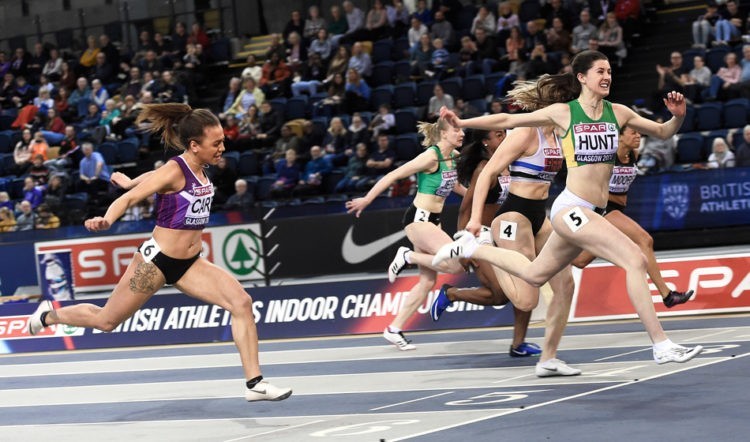
In February she won the British indoor 60m title in 7.39 before improving to 7.36 for fourth at the Müller Indoor Grand Prix in Glasgow. Then, when outdoor track meets started, she raced exclusively at 100m instead of 200m at events ranging from the British Champs in Manchester, where she was fourth, to her first Diamond League in Doha, where she placed sixth.
“I can’t describe how good it was to go to my first Diamond League in Doha,” she says. “To experience the hype and energy there was really fun.”
She turns 19 in May and is looking forward to returning to her specialist distance of 200m after spending 2020 working on her ability get out the blocks quickly. “We also felt the biggest gains were to be made over 100m and we treated it almost as a freebie year,” she explains.
“We stripped back and focused on that start again and it definitely really helped and I saw an improvement in my start. At the British Champs I felt really confident and able to put together a first 20m.”
She adds: “It was interesting to have the focus on the 100m because going into an event knowing it’s not your favorite event and to be one of the slowest was an interesting process for me to learn. It was good to head into a race not being too star-struck and to just focus on my lane.”
She has also stepped up her training on the track and in the gym. “Heading into next year I’m in a really good position,” she says.”I have more confidence in my technical abilities and during what has been effectively a free year I’ve upped the amount of time I’ve done in the gym. Now three a week and I’m seeing a lot of gains from that.”
She adds: “This winter increased track sessions and gym so I now train six days a week. It was rough for my body to deal with for the first two weeks but I’m not getting used to that kind of exertions and I’m discovering recovery techniques that work for me.
“I really do enjoy winter training in a bit of a sadistic way. I’ve liked being back on the track and in the gym this winter. If you want to get to a certain level, you have to love what you’re doing. My coach Joe is always cracking jokes and creates a really good environment to be in.”
So what really motivates her to put on her kit and start training? Is it the Olympics or World Under-20 Championships next year? Or the idea of improving her PBs?
“I think it’s a combination,” she says. “But the most important to me is putting the work in so my idols become my rivals. That’s what gets me out of bed in the morning. I want to be the best that I can be and be up there with those people who I used to idolize and now want to race.”
As for those idols, she says: “A younger me definitely looked up to Allyson Felix a lot. I’ve always looked up to Dina (Asher-Smith) because she’s always such an amazing role model for the sport. She encompasses a lot of values that I hold dear to myself too.
“Shaunae Miller-Uibo is an amazing athlete and people like Shelly-Ann Fraser-Pryce have gone away and had a baby and returned to run well so there are lots of amazing female role models out there.”
So far she has not spent much time with any of them. The only time she has bumped into Asher-Smith, for example, was the Great CityGames in 2017. But she adds: “Hopefully I’ll be meeting most of them next year in Tokyo!”
(12/26/2020) ⚡AMPby Jason Henderson
Tokyo 2020 Olympic Games
Fifty-six years after having organized the Olympic Games, the Japanese capital will be hosting a Summer edition for the second time, originally scheduled from July 24 to August 9, 2020, the games were postponed due to coronavirus outbreak, the postponed Tokyo Olympics will be held from July 23 to August 8 in 2021, according to the International Olympic Committee decision. ...
more...Rodchenkov Anti-Doping Act officially passed into law
The U.S. bill to criminalize doping has officially been passed into law despite objections from WADA
On December 4, the U.S. officially signed the Rodchenkov Anti-Doping Act into law. This new law will allow American prosecutors to investigate doping at international events in which Americans are participants, sponsors, or broadcasters. Violators will face up to 10 years in prison, as well as fines of $250,000 for individuals and $1 million for organizations.
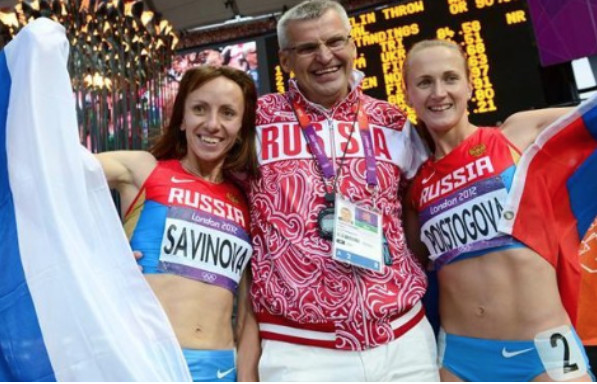
This comes less than one month after the bill was passed through the U.S. Senate, amid heavy criticism from the World Anti-Doping Agency (WADA). In a statement released on November 17, the agency expressed its concern that some important elements of the Act may have unintended consequences, and that its extraterritorial nature might undermine the global fight against doping.
“No nation has ever before asserted criminal jurisdiction over doping offences that occurred outside its national borders – and for good reason,” the Agency said. It is likely to lead to overlapping laws in different jurisdictions that will compromise having a single set of anti-doping rules for all sports and all Anti-Doping Organizations under the World Anti-Doping Code (Code).”
Additionally, WADA wants to know why the act excludes large areas of U.S. sports, including college and professional leagues. These leagues consist of nearly half a million athletes and yet were removed from the bill without explanation.
Despite this controversy, the law has officially been passed. Some prominent voices in the fight against doping are considering this a victory, including Jim Walden, the lawyer representing Grigory Rodchenkov, the Russian whistle-blower for whom the act is named. Walden says that it is now up to the Department of Justice to cooperate with the U.S. Anti-Doping Agency (USADA) and international law enforcement partners to develop an effective program that creates zero tolerance for doping in sport.
“Dopers should be on clear notice: there is a new sheriff in town, so cheat at your own peril,” he said in a statement.
It is important to note that this law is aimed not at individuals who are cheating, but at larger doping schemes. Walden is considering the Rodchenkov Anti-Doping Act a monumental step in the fight for clean sport, and is hoping that other countries will partner with the U.S. on cross-border law enforcement to protect the rights of clean athletes and the integrity of sport.
(12/26/2020) ⚡AMP
by Running Magazine
Boxing legend Jeffrey LeMair is now running ultra marathons
The steady beat of a footstep, after footstep. It’s a calming and comfortable sound to Jeffrey LeMair.He runs for fun. Jeffrey has more than 30 marathons under his belt, including the Boston Marathon.
“When I’m having a bad day, some people go out and say ahh I resolve all my problems by running, it’s not that easy, but what happens is you get so relaxed that you’re in a non-emotional state to be able to deal with your issues,” said LeMair.
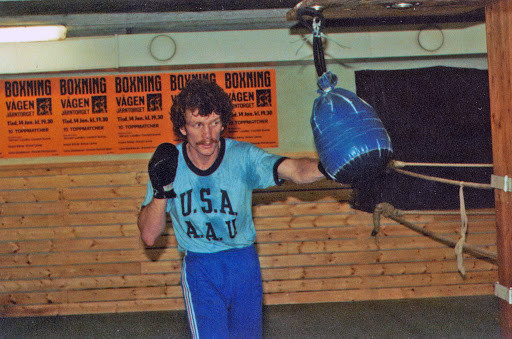
And for Jeffrey, a regular 26 mile marathon isn’t enough. He now runs Ultra Marathons of 50 to a hundred miles.
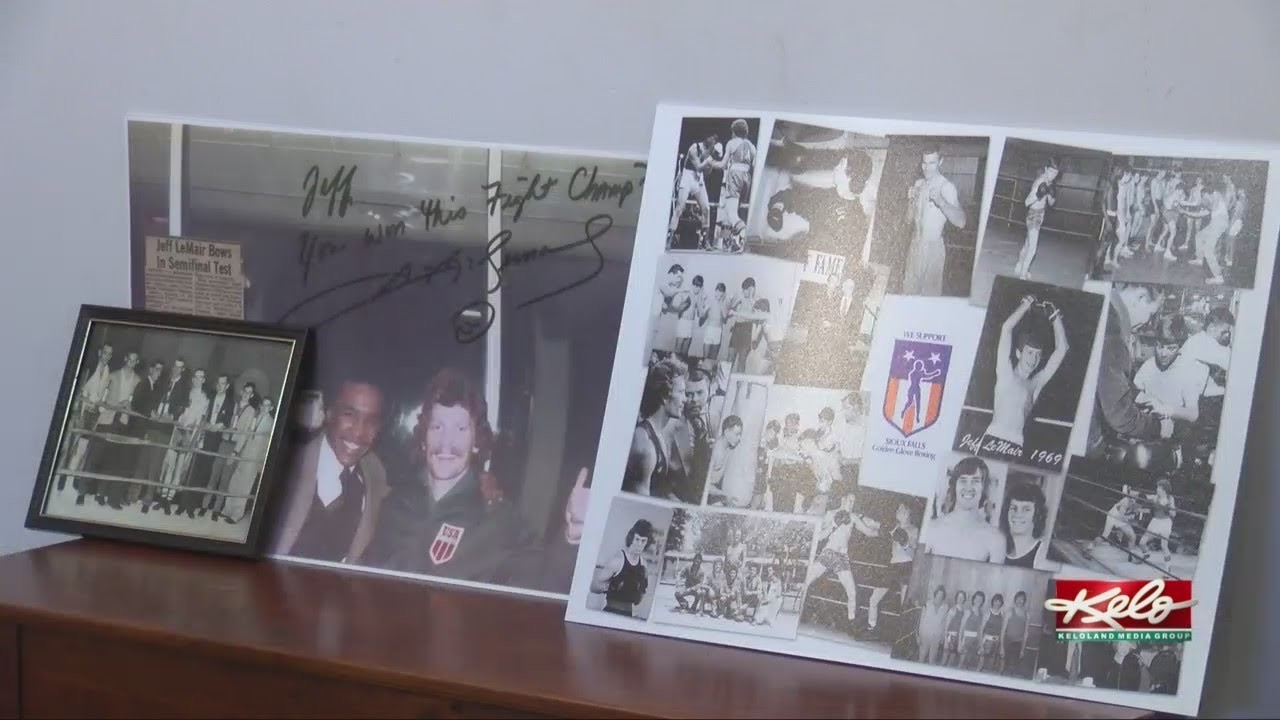
“It’s more of an adventure for me, so I want to extend the adventure, I also want the peace and fulfillment,” said LeMair.
During his 66 years, Jeffrey has run into his share of obstacles. The biggest came in the most unlikely place. The White House. You see Jeffrey wasn’t always a runner. Pound for pound Jeffrey LeMair is probably the best boxer to come out of the state of South Dakota.
Jeffrey won amateur championships, traveled the world and met stars. His brother Greg was his trainer and coach.
“Everybody that knows Jeffrey knows he was a pretty good boxer, but I don’t think people fully understand how good he was, said his brother Greg LeMair.
With Greg in his corner, Jeffrey fought, virtually to a draw, three boxers who went on to become world champions. One of them was Sugar Ray Leonard, who Jeffrey fought in Denver.
“It was a really really beautiful boxing match, really close but in the third round, Jeffrey decked Sugar Ray Leonard, the first time and one of the few times Sugar Ray Leonard was ever off his feet,” said Greg LeMair.
Leonard went on to become an Olympic gold medalist in 1976. At the next Olympics, it was to be Jeffrey’s turn. And that’s how he ended up at the White House on March 21st, 1980. On that rainy day, LeMair, and other top athletes in their sports were called to a meeting with President Jimmy Carter. One of LeMair’s fellow boxers spoke up but the president had made up his mind.
“He said young man, we’re not going, and that was it,” said LeMair.
Boxing will always be a part of his life, the muscles may be a little stiffer, the movement a fraction slower, but you still would not want to be on the receiving end of one of these punches. At times in his life, Jeffrey has been a contender, a challenger and in the eyes of those who know him best, a champion
“As good a fighter as good a boxer as Jeffrey was, he’s as good a human being,” said Greg LeMair.
In more than 200 fights Jeffrey says he was never knocked out and he credits his brother Greg for much of his success. Lemair, who turns 67 in February is preparing for another 100 mile race in 2021.
By the way, his grandkids call him “Grandpa Boom Boom.”
(12/24/2020) ⚡AMPby Tom Hanson
Seb Coe warns it will be harder than ever to cheat at Tokyo Olympics
Sebastian Coe has warned the biggest names in track and field that being “high profile no longer protects you from the investigative powers of the sport” – and predicted it will be harder than ever to get away with taking banned drugs at the Tokyo Olympics.
There has long been a suspicion that some countries have not done everything in their powers to catch their stars who cheat. However Coe, the World Athletics president, insisted things had now fundamentally changed and that drugs cheats would now be “fearlessly and ruthlessly weeded out” by the independent Athletics Integrity Unit (AIU).
Athletes need to understand why Russia is so important to the IOC
While Coe readily conceded it was not a good thing for the sport that its fastest man, the world 100m champion Christian Coleman, was serving a doping ban for missing tests, he said it showed the system was working.
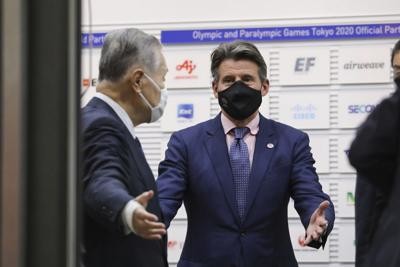
“The AIU was a centrepiece in the reforms and that’s exactly why I pushed for that independent, dispassionate organisation that could remove the decision making from any undue political interference,” he said. “I like to think that it has shown the athletes that we’re not respecters or fearful of reputation. Where there is an infraction we’re not fearful of sitting there going: ‘Oh well that’s quite a big name.’
“The AIU is not always going to be on everybody’s Christmas card list, nor should they be. But I do think that it has restored some confidence among the athletes that we’ve got an organisation out there that will fearlessly and ruthlessly weed out the cheats when and where they surface.”
Coe said athletics now did more intelligence-led testing than any other sport – a fact that made him hopeful it will be harder than ever to cheat at the Tokyo Olympics.
Those comments will raise eyebrows in some quarters, given he also predicted before the London 2012 Olympics that it would be “the cleanest in history”. But Coe said he was confident that was the case. “Technology has improved, significantly even since 2012. Now, we’ve become much more sophisticated in the way testing takes place. It’s much more intelligence-led. And we’ve also got the AIU and that’s now 20-odd people with a good chunk of those people are sophisticated international investigators as well.
“I feel that I will be taking World Athletics as a federation to Tokyo with better systems in place than any other federation. I’m proud to be able to say that. And what I can say is if athletes do cheat there is a greater chance of them being caught in Tokyo than probably any previous Games.”
Coe also dismissed suggestions that the whereabouts system, under which athletes receive a two-year ban if they miss three drug tests in a 12-month period, was unduly harsh.
(12/24/2020) ⚡AMPby Sean Ingle
Tokyo 2020 Olympic Games
Fifty-six years after having organized the Olympic Games, the Japanese capital will be hosting a Summer edition for the second time, originally scheduled from July 24 to August 9, 2020, the games were postponed due to coronavirus outbreak, the postponed Tokyo Olympics will be held from July 23 to August 8 in 2021, according to the International Olympic Committee decision. ...
more...2021 Boilermaker will be moved on Sunday, October 10th
The Boilermaker announced today that the date for the 2021 Boilermaker 15K and 5K races will be moved from its traditional second Sunday in July to the second Sunday in October, which will be October 10th, 2021. It will also be subject to whatever guidelines and regulations that may be in place at the time due to the ongoing COVID-19 pandemic.
Due to the breadth of the unknowns going forward, registration periods, race capacities and the host of other events both within the races and surrounding Boilermaker Weekend will remain on hold until such time when there is clarity relating to the aforementioned guidelines and regulations surrounding the COVID-19 situation.

“After such a horrific 2020, our goal for 2021 has been focused on being in a position to safely host an in-person Boilermaker. While the scientific community has worked to develop vaccines in record time for which we should all be grateful, given the deadly resurgence of COVID-19 of late, the unknowns related to the widespread availability of the vaccines, and our commitment to the health, safety and well-being of our community, we were not comfortable with the probability that we would be allowed to proceed with our traditional date in July,” said Mark Donovan, Boilermaker President.

“Rather than put our participants, volunteers, vendors, and our community through potentially changing scenarios which we all just experienced this year, we wanted to not only give our community something to look forward to, but to also provide as much certainty in these uncertain times as feasible while giving the Boilermaker the best possible opportunity to be held in-person and safely in 2021.”
The Boilermaker urges all of its participants to check their emails regularly and to pay close attention to our traditional and social media communications to ensure that they are aware of future announcements.
Donovan added, “In order to give the 2021 Boilermaker the best chance of being held in-person on October 10th, we urge everyone to continue to wash their hands, stay socially distanced, wear a face covering when appropriate and get vaccinated when they become available.”
(12/24/2020) ⚡AMPBoilermaker 15k
The Boilermaker 15K is the premier event of Boilermaker Weekend. This world krenowned race is often referred to as the country's best 15K. The Boilermaker 15K is recognized for its entertaining yet challenging course and racing's best post-race party, hosted by the F.X. Matt Brewing Company, featuring Saranac beer and a live concert! With 3 ice and water stops every...
more...No Millrose Games in 2021 due to the coronavirus pandemic
The iconic meet had been scheduled to take place on February 13.
The 2021 Millrose Games has been cancelled due to the coronavirus pandemic.
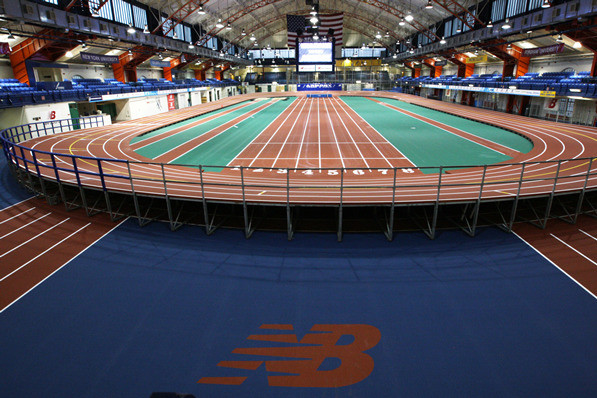
The 114th edition of the iconic meeting, which was first held in 1908, had been scheduled to take place on Saturday February 13 at The Armory in New York City.
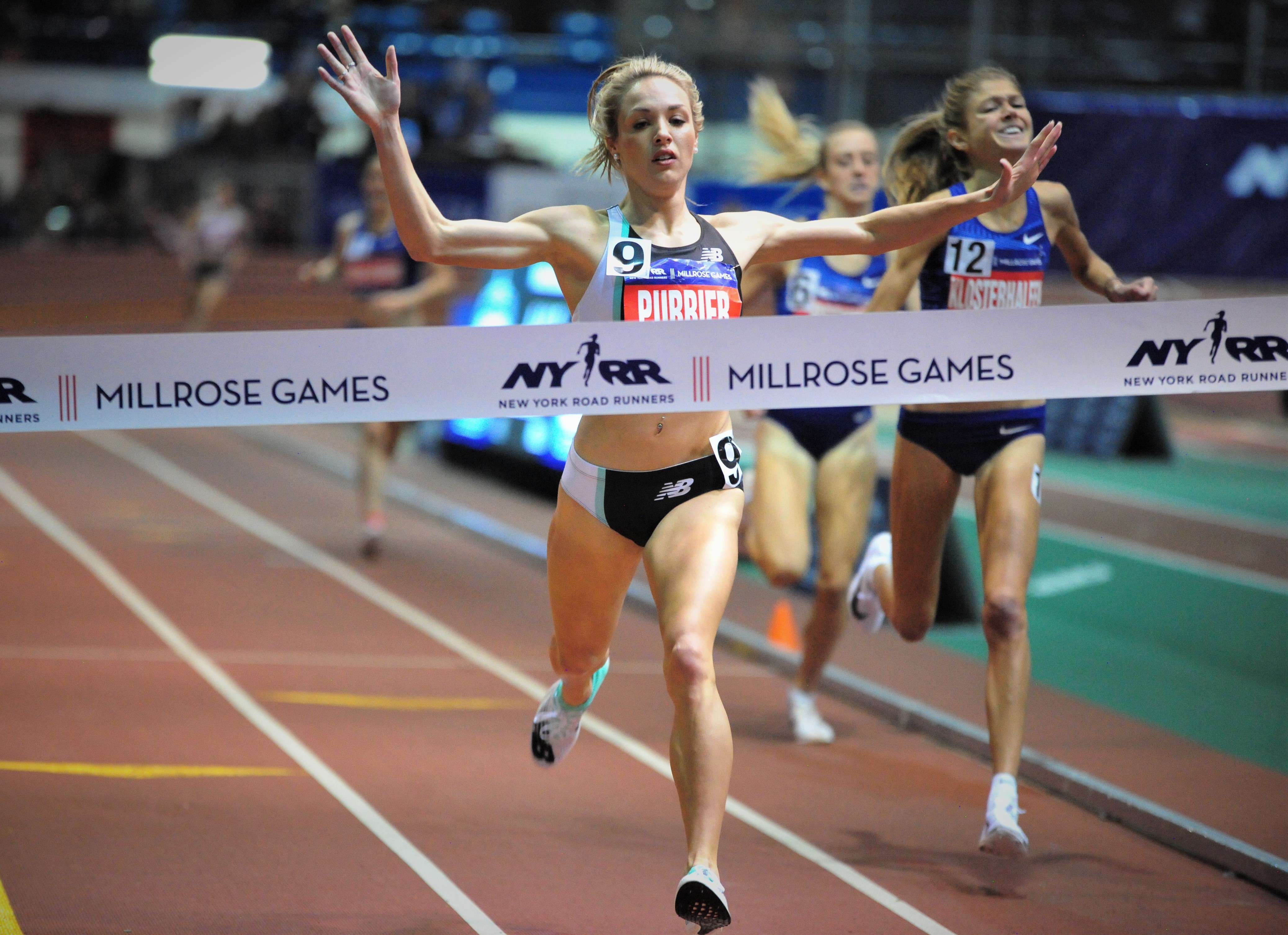
But the event will now return on February 12, 2022.
“The Armory Foundation has decided after extensive consultations with health experts that, due to rising cases nationally of Covid-19, it is advisable to cancel the 114th Millrose Games, previously scheduled for February 13, 2021 at The Armory in New York City,” reads a press release.
“First run in 1908, the Millrose Games has featured legends such as Paavo Nurmi, Eamonn Coghlan, Allyson Felix, Joetta Clark, Carl Lewis, Jackie Joyner-Kersee, Bernard Lagat and many others. However, given the health situation in New York and across the country, the prudent thing to do is to abstain this coming year.”
Britain’s Chris O’Hare (pictured) is a Millrose Games regular, with the multiple European medallist having won the famous Wanamaker Mile in both 2018, when he became the first British man to win the prestigious indoor race since John Whetton in 1965, and in 2020.
Meet director Ray Flynn said: “Canceling the iconic Millrose Games was a very difficult decision, but with all the health concerns surrounding an event of this complexity, rather than risking the athletes, officials, meet personnel, media and others, we have decided to wait until February 12, 2022, for the next edition of the Millrose Games."
(12/24/2020) ⚡AMPby Athletics Weekly
NYRR Millrose Games
The NYRR Millrose Games,which began in 1908 as a small event sponsored by a local track club, has grown to become the most prestigious indoor track and field event in the United States. The NYRR Millrose Games meet is held in Manhattan’s Washington Heights at the New Balance Track & Field Center at the Armony, which boasts a state-of-the-art six-lane,...
more...As the coronavirus pandemic has forced the Boston Athletic Association to postpone the marathon from April to the fall, the B.A.A. is launching a virtual community where runners can come together online
The B.A.A. on Tuesday announced that it’s setting up “Athletes’ Village,” a virtual community for runners of all levels.
Athletes’ Village will be an online hub for free monthly challenges as well as paid training programs, and will serve as a central location for participant and volunteer history, official race results, race updates, and race registration.
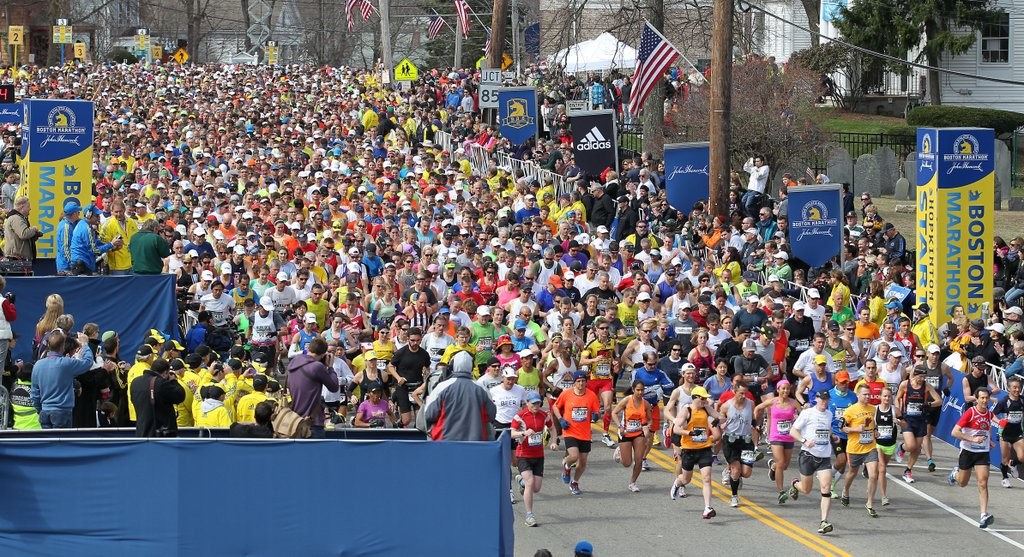
The B.A.A. is looking to engage with 125,000 athletes across the world through Athletes’ Village in the lead up to next year’s 125th Boston Marathon.
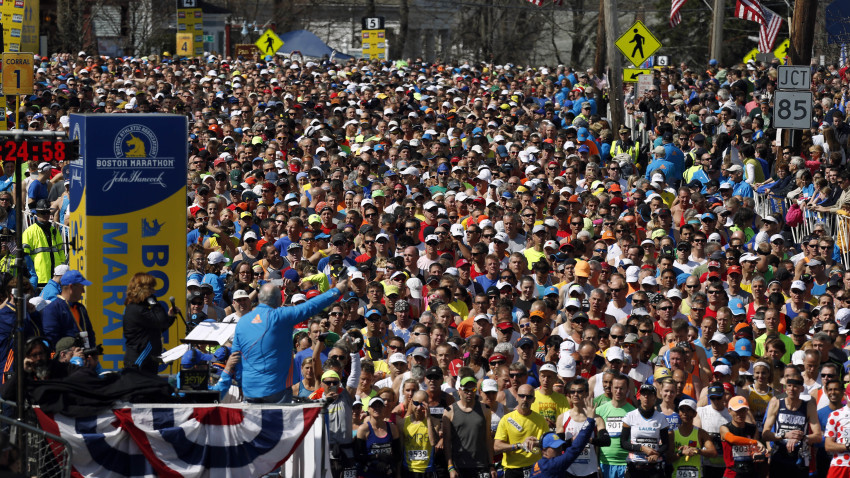
“Whether you are an accomplished marathoner, looking to increase your physical activity in the new year, or brand new to the sport of running, Athletes’ Village will provide a space for you to achieve your fitness goals and celebrate your accomplishments with a global community,” Tom Grilk, president & CEO of the B.A.A., said in a statement.
This year’s Boston Marathon was initially postponed from April to September. Then the September in-person race was canceled, and the B.A.A. held a virtual race in its place — during which runners around the country — and world — ran their own personal marathons.
Now the 2021 Boston Marathon has been postponed from April to the fall. Officials hope an in-person race will be possible by then following the coronavirus vaccine rollout.
Ahead of the fall, Athletes’ Village will formally launch on Jan. 5 with a free, six-week Winter Warm-Up training program designed for new runners, runners recovering from injury, and anyone looking to be more active in 2021.
“January is a perfect time to plan your fitness goals for the year,” said Mark Carroll, B.A.A. High Performance coach. “Whether those goals include running your first or fastest 5K, we’ve designed training plans and monthly challenges that will push you to achieve your goals.”
Athletes’ Village will also feature message boards for participants to connect with one another.
Grilk said, “Athletes’ Village will challenge the most experienced runners, introduce the sport to new runners, and be a platform for all to benefit from running and living an active lifestyle.”
(12/23/2020) ⚡AMPby Rick Sobey
Boston Marathon
Among the nation’s oldest athletic clubs, the B.A.A. was established in 1887, and, in 1896, more than half of the U.S. Olympic Team at the first modern games was composed of B.A.A. club members. The Olympic Games provided the inspiration for the first Boston Marathon, which culminated the B.A.A. Games on April 19, 1897. John J. McDermott emerged from a...
more...Al Marmoom Ultramarathon returns to Dubai in 2021
Looking for the ultimate fitness test for 2021? This one will test you – and is for experienced runners only.
Al Marmoom Ultramarathon is taking place on Friday March 5, 2021, in Dubai’s Al Marmoom Desert Conservation Reserve and it’s run over a whopping 50km.
The race will require endurance, courage and determination and will test runners to the limit.You’ll need to be fully trained and ready for it if you want to take part, but if you’re more of a casual runner, or are taking it up as a New Year’s resolution, then there are shorter 10km and 5km races too.
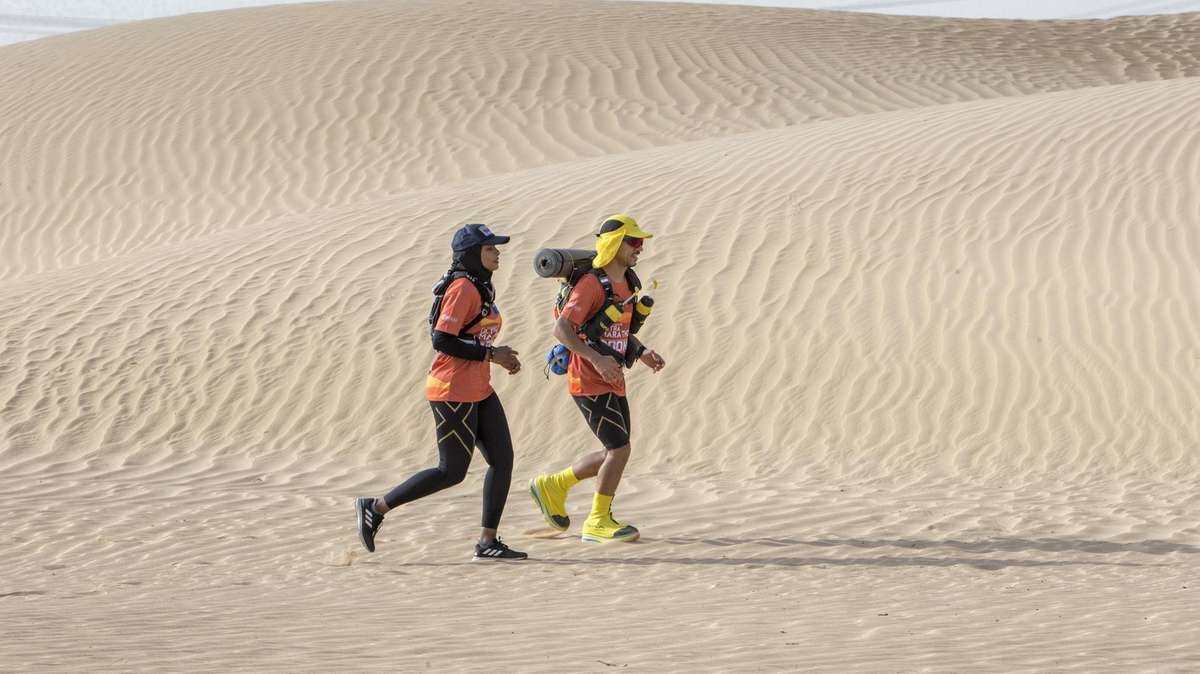
All three races will take runners into the desert and across both hard and soft sand, plus across the rolling dunes – so get ready for some spectacular scenery while you run. The desert reserve is also home to more than 200 species of native birds and more than 150 species of migratory birds.
There’s also 10km of lakes and it’s a protected area.
The race was launched in 2020, and this will be the second edition of the Al Marmoom Ultramarathon. All runners will get finishers medals, while the top three rankings in each category – both for male and female – will pick up a trophy. Registration is open now and runs through until March 2.
Runners in the ultramarathon must be over 18, plus have a medical certificate to show they are fit enough to compete.
(12/23/2020) ⚡AMPAl Marmoom Ultra Marathon
Launched under the initiative of UAE Vice President and Prime Minister and Ruler of DubaiHis Highness Sheikh Mohammed bin Rashid Al Maktoum, Al Marmoom Desert Conservation Reserve will host the world's longest desert ultra-run Meraas Al Marmoom Ultramarathon. Meraas Al Marmoom Ultramarathon is a 300km, 100km and 50km race across desert terrain and will be held 9th to 11th December...
more...2021 Louisiana Marathon moves event to March
The Louisiana Marathon announced Tuesday, Dec. 22 that the annual event is moving from January to March.
According to the organization’s website, the dates are now set for March 6 and 7.
“If you are currently registered, please check your email for important instructions and options you have.
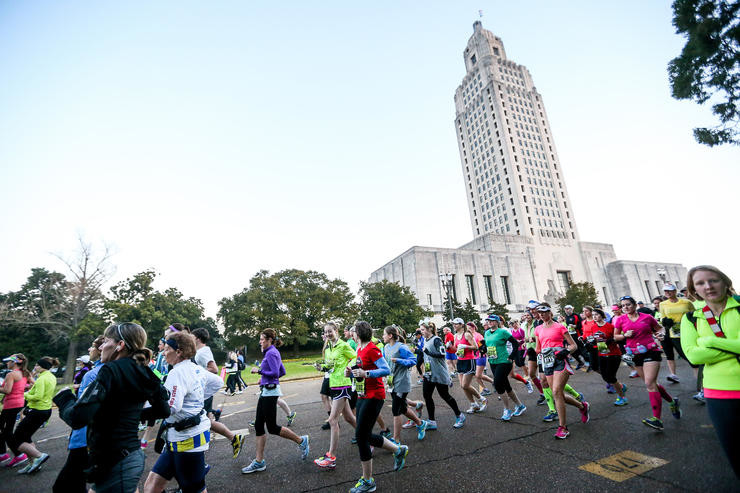
“We certainly did not want to make an event change such as this, but we are energized and optimistic about what this change means for our runners, our communities and the event itself. Thank you in advance for supporting us. Like so many, we are trying to navigate these times as best we can with what we have,” states the website.
Thousands of people participate in the marathon annually. The event features a 5k, 10k, the half marathon, and the full marathon. In past years, the event has included live music, food, and additional vendors.
The Louisiana Marathon is a USAT&F Certified course and an official Boston Qualifier route. It’s a popular race because of the “fast, flat, runner-friendly path through the lakes, along the river, and around downtown, on the university campus and in historic neighborhoods.”
(12/23/2020) ⚡AMPby Samantha Morgan
Louisiana Marathon
Welcome to the Louisiana Marathon Running Festival. Rendezvous with runners from 50 states and over 30 countries who share a passion for Louisiana as they race our fast, flat and festive courses. Stick around for the best Finish Fest on the bayou and enjoy tastes of gumbo, jambalaya, étouffée, duck confit and couch du lait (to name a few dishes...
more...Dan King breaks three U.S. masters records in South Carolina
Dan King of Boulder set three (pending) U.S. Masters 60-64 records this month after competing in the Five and Dime Athletics Meeting in Columbia, South Carolina. King competed in the 1 mile and 5000m.
In the mile, King ran 4:52.68 to break the existing U.S. record of 4:53.01 (Nolan Shaheed, 2012).
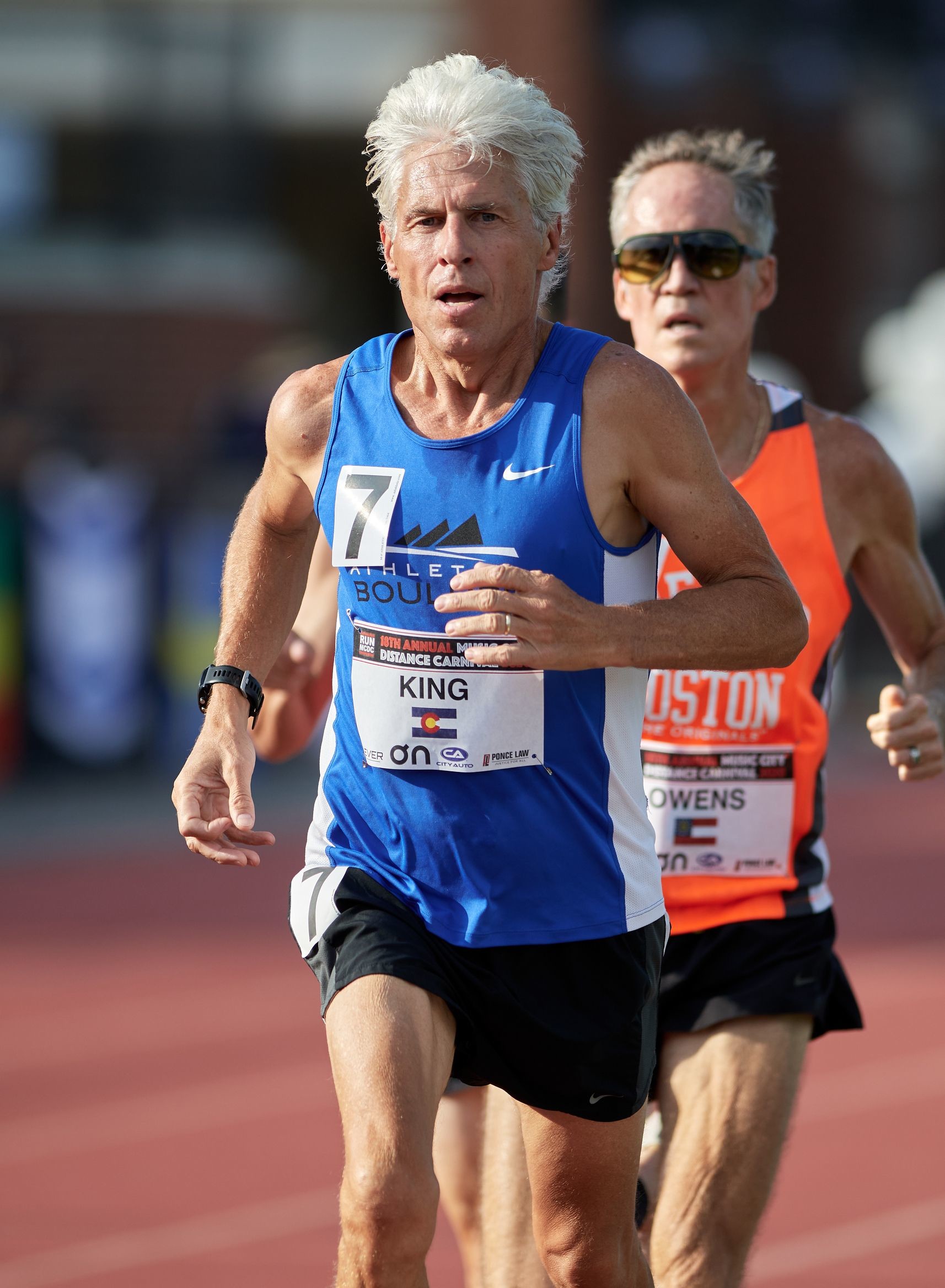
In the 5,000 meter race, King ran 16:48.67 to break a 35-year-old record of 16:52.00 set in 1985 by Jim O’Neil. En route he ran 9:58.77 for 3000m breaking the existing record by 9.1 seconds (Dale Campbell, 2015).
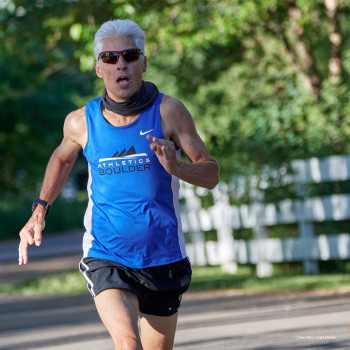
IN THEIR WORDS – DAN KING:
2020 has been an amazing running year for me, which is surprising given that my race calendar was completely shuttered last March.
Weirdly though, the cancellation of all of my targeted events allowed me really focus on the mile for the first time ever, and the improvements in my running economy led to both great results in some mile competitions in addition to an outstanding 5K to end what turned out to be a very long outdoor track season.
(12/23/2020) ⚡AMPby Colorado Runner
The man who ran a marathon in every country in the world
"All of a sudden, I had this horrendous pain in my shoulder and chest. You know what the tell-tale signs are, but when you feel it yourself, it's very certain what's going on."
Nick Butter suffered a minor heart attack two miles from the finish line of a marathon on the Polynesian island of Samoa. This was the 182nd marathon of a trip in which, over the course of 674 days, he ran one in every country in the world. He's the first person to achieve such a feat.
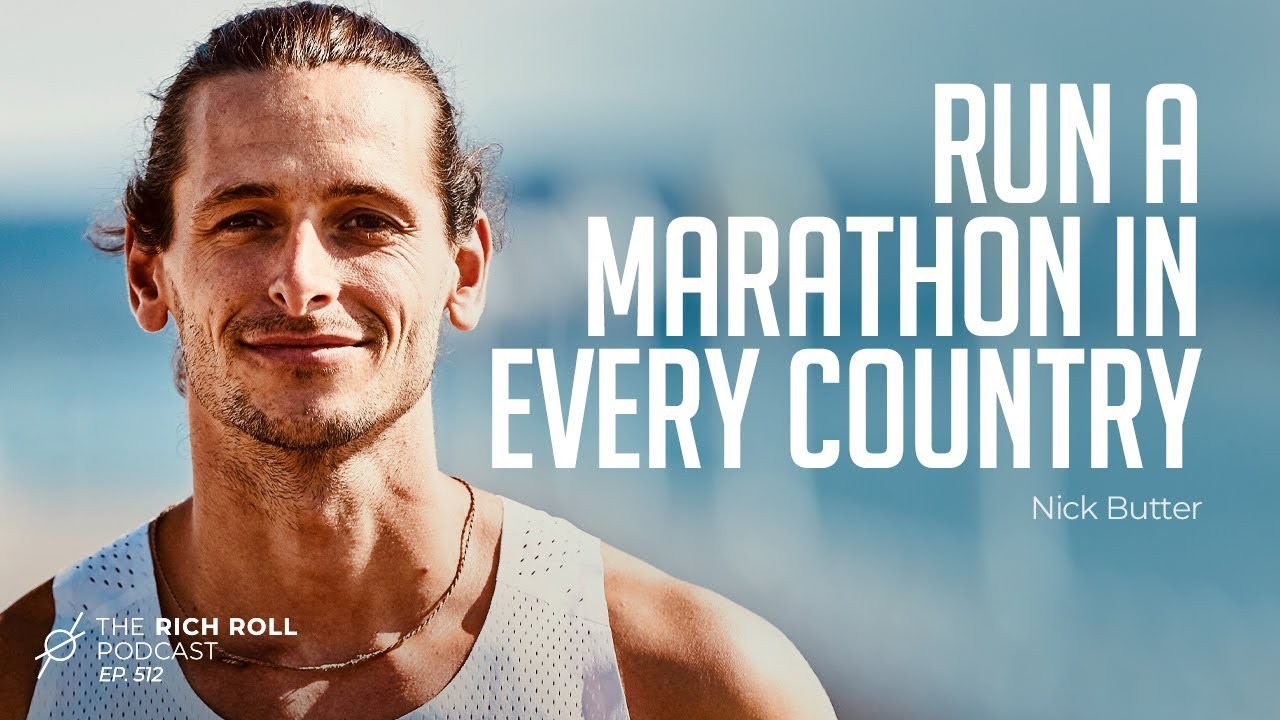
By this stage of the challenge, he'd already been shot at, mugged at gunpoint and attacked by dogs. It was one more obstacle to overcome. And the way it came about is quite typical of his habit of, well, taking a lot on.
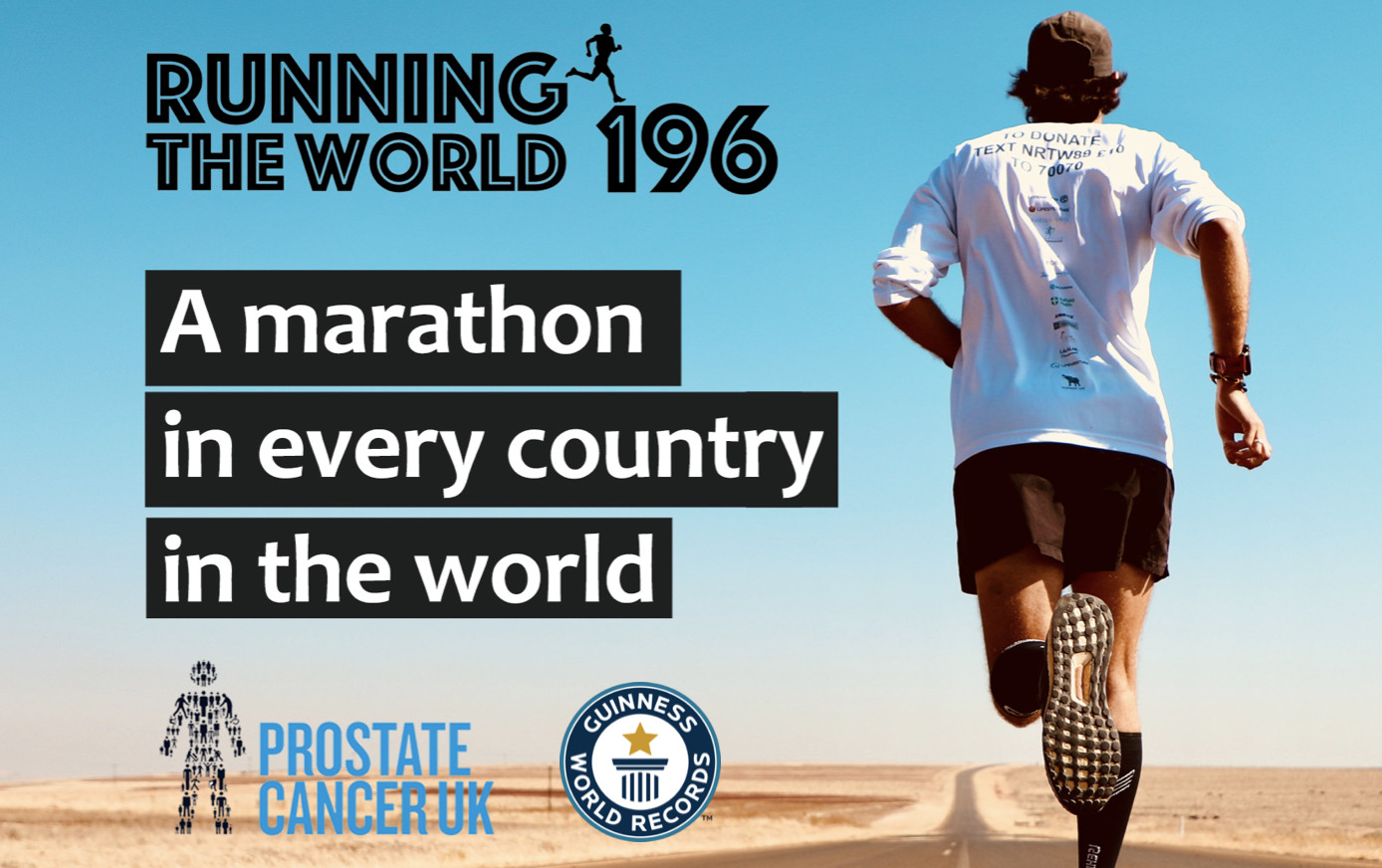
Butter often had a taxi driver, motorcyclist or cyclist with him, who would provide help with navigation, water and safety. On this occasion, a man from his hotel, Sani, had volunteered.
Unfortunately, it turned out that Sani hadn't ridden a bike for 20 years.
With eight miles left for Butter to run, Sani was in some pain and had to dismount. Rather than stop, or ask for help, Butter decided to run the rest of the marathon while pushing the bike and water himself.
"It was uphill, in 45C-plus heat, when I suddenly I had this pain," Butter says.
Without anyone around and no phone signal, he took a break by the side of the road and waited it out. Eventually, Sani caught up and took the bike back so that Butter, determined to finish, could hobble through the last section.
Afterwards he spoke to doctors and family friends who worked as medics. They all confirmed the symptoms of a heart attack. That didn't stop him flying to New Zealand to run another marathon just two days later. It's also worth mentioning he has a family history of heart problems.
"The medical answer is that I should have slowed down after that, but the actual answer is that I didn't," says Butter. He completed 211 consecutive marathons around the world - 193 in member countries of the United Nations, plus 18 more for "future-proofing".
It was in 2016 that a 26-year-old Butter had the idea. The goal was to raise money for Prostate Cancer UK.
"I wanted it to be big," Butter says. "It had to involve running and travel and it had to invoke something that Kev had said to me, which was 'don't wait for a diagnosis'."
A simple internet search for 'has anyone ever run a marathon in every country?' brought a negative answer.
"I couldn't believe it," he says. "We've put people on the moon! Of course, now I know why it's not been done before - it's very, very difficult."
After telling his family and friends, Butter started planning.
"I registered with Guinness World Records, spoke with some adventurer and runner friends and then I started to understand that I needed to contact media outlets, embassies, running clubs around the world. Hotels, people to do my safety, people to do my visas, working out a route, understanding the weather conditions, what my body would need to go through."
He says that beyond raising money, the goal was to spread awareness.
"I did something like 140 live TV appearances in different countries," Butter says. There were personal testimonies too.
"We had people come to us who previously hadn't any idea of prostate cancer, but, after speaking to us, got tested and discovered that they had it. Because they caught it early, they were fine."
Since finishing the trip, he has been doing speaking tours (lockdowns permitting), using his story to help educate. He's also published a book, Running The World.
Butter, writing in the closing chapter about his final leg of the 196-marathon trip, which began in Marathon, Greece, describes Webber turning up to run with him.
Five years on from Webber's terminal prostate cancer diagnosis, in which he was given an estimated two years to live, he and Butter crossed the finish line in Athens hand-in-hand.
The pair still talk regularly, and Butter says his friend is still running and still smiling.
(12/22/2020) ⚡AMPby Ciaran Varley
Sebastian Coe predicts bright future for athletics amid virus concerns
World Athletics (WA) has endured a turbulent year, but the global athletics governing body's president Seb Coe is confident the challenges have made his organisation, and the sport, "more resilient."
Having piloted the Monaco-based WA through the turbulence, Coe believes his international federation is on cruise control and that the prospects of 2021 are mouth-watering.
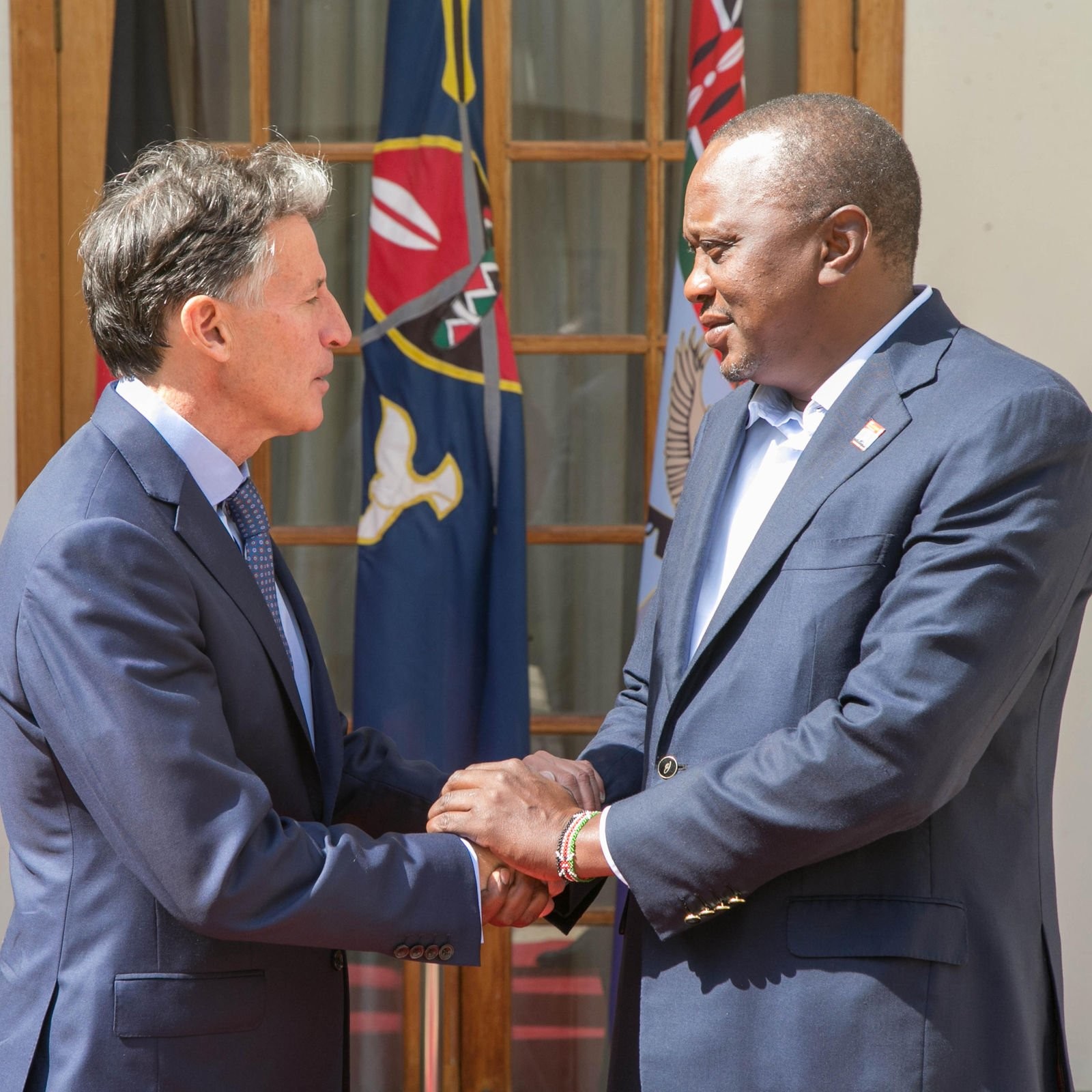
In an end-of-year interview with leading African sports desks, including Nation Sport, earlier this week, Coe reflected on a difficult, coronavirus-ravaged season that also saw WA wriggle out of negative vibe coming out of the organisation's former president Lamine Diack's trial for corruption in Paris.
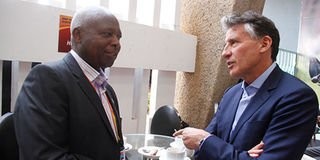
In September, Diack, 87, a former Mayor of Dakar, was found guilty by a Paris court of covering up doping cases by Russia and was handed a four-year jail sentence, two of these years suspended.
The man who had led the global track and field body for 16 years was also fined 500,000 Euros (about Sh6 million) by presiding judge Rose-Marie Hunault who ruled that Diack's actions "caused serious damage to the fight against doping."
Having been first elected at the organisation's sixth president in August, 2015, Coe set out to streamline operations in Monaco, cutting down on unnecessary expenditure and moving to shore up WA's finances.
Globalising athletics
His focus on globalising athletics saw Nairobi win the rights to host the 2017 World Under-18 Championships and also the 2020 (now 2021) World Under-20 Championships along with a leg of the World Athletics Continental Tour, what was then named the "Kip Keino Classic."
Commissions and working groups at World Athletics were whittled down from over 30 to just half a dozen and virtual conferences preferred to expensive trips to the principality for working meetings.
Diack was notorious for his extravagance that saw his friends, their spouses and girlfriends from Dakar on the global body's tab for junkets to the affluent Monte Carlo for the annual IAAF Gala, with half of the time spent on shopping sprees rather than track and field business.
Youssour N'dour and "Mama Africa" Miriam Makeba formed part of the high profile ensemble that entertained Diack's administration at the Gala, usually as the climax of a six-course, black jacket dinner ceremony, mostly at the Monte Carlo Bay Hotel whose current room price per night is up to Sh280,000, bed and breakfast!
Coe drastically cut down on this extravagance.
The Briton's administration whittled down the grandeur by organising a pocket-friendly, theatre-style gala with just cocktails and bitings in place of the sumptuous Diack dinners that notoriously sampled Monte Carlo Bay's culinary delights such as caramelized back of salmon with honey, or "Black Tiger" prawns, virgin sauce with basil, pushed down the throats of excited guests by three scoops of home made ice-creams and sorbets, with the best selection of bottomless wine from the French Riviera's wineries and vineyards to boot.
Besides the financial matters, getting athletes back into training after the coronavirus outbreak and juggling around the global athletics calendar were other priorities.
"Going back to March when, clearly, life became very much more complicated because of Covid, for all of us anywhere in the world, with sudden travel restrictions and bans and pressures on athletes, the first objective we set ourselves - which was an understandable one because we are an athlete-centred organisation - was to do everything we possibly could to get the athletes back in training and then into competition," Coe looked back.
Coe is happy that WA was not only focusing on solving problems, but also "identifying the right problems to solve."
"Look, we went through the school of hard knocks for four years from 2015 on-wards... I don't need to retrace my steps through there, that was a very global level of scrutiny for our sport."
"We came through it stronger and I think that bravery, that strength, that resilience allowed us through the pandemic year to continue to remain balanced and to continue to do all the things that we wanted to do in the sport, and to make brave decisions in our sport and that bravery has served us well in the past and I think it will serve us well next year."
(12/22/2020) ⚡AMPby Elias Makori
Kenya's David Rudisha says he is yet to decide whether he will try and win a third straight 800 meters Olympic title in Tokyo next year
Rudisha, who turned 32 on Thursday, has struggled with injuries since defending his title in Rio in 2016 and has missed the last two World Championships.
Ankle surgery meant that the world record holder would not have been able to compete if the Tokyo games had gone ahead this year, instead of being delayed until 2021 by the global Covid-19 pandemic.
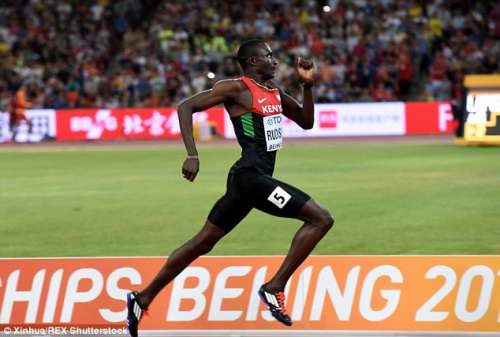
"Because of this difficult time with Covid and I have been up and down with injuries, I have been off, I have not been training," he admitted to BBC Sport Africa.
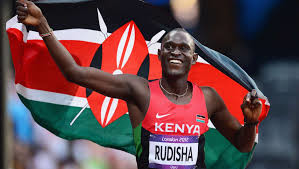
"I am hoping maybe next year I will make my decision whether I will come back and see the level of my physical fitness.
"That's when I will be able to assess my level and my standard and that will gauge if I will come back or I will make another decision but I love sports.
"Once an athlete, I will always be an athlete - so I will always be running at some level even if it is professional, or not professional or for fun but I love the sport and I enjoy running," he insisted.
David Rudisha: Olympic 800m champion on personal struggles, and Tokyo comeback
He insisted he will not be rushing to make a comeback from his latest injury.
"I had a bad injury in the beginning of the year and it is taking quite sometime and coming back you need to prepare yourself very well," he explained.
"I know that time is everything, if you do not have enough time I don't think it will be possible because running is not easy.
"It is a process and if I cannot have the period good enough for training I don't think I will be able to be there and to be at that level of professionalism, so I am just trying my best.
"Even if I come the year after next year all well and good and I will be happy because running is all about fun and would love to come back and it will depend on so many aspects."
(12/22/2020) ⚡AMPby Sport Africa
Tokyo 2020 Olympic Games
Fifty-six years after having organized the Olympic Games, the Japanese capital will be hosting a Summer edition for the second time, originally scheduled from July 24 to August 9, 2020, the games were postponed due to coronavirus outbreak, the postponed Tokyo Olympics will be held from July 23 to August 8 in 2021, according to the International Olympic Committee decision. ...
more...Tokyo Olympics' budget has been increased by 22%
The final budget for the Tokyo Olympic and Paralympic Games has been increased by 22% to 1.64 trillion yen (15.8 billion US dollars) because of the postponement of the Games.
The Tokyo 2020 organizing committee said at a news conference on Tuesday that the additional cost caused by the postponement is about 294 billion yen (about 2.83 billion US dollars), with the operational cost for the delay 198 billion yen (about 1.91 billion US dollars), and the COVID-19 countermeasures cost of 96 billion yen (about 920 million US dollars).
Of all the costs, Tokyo 2020 will cover 45%, the metropolitan government 43%, and the Japanese central government will account for 12%.
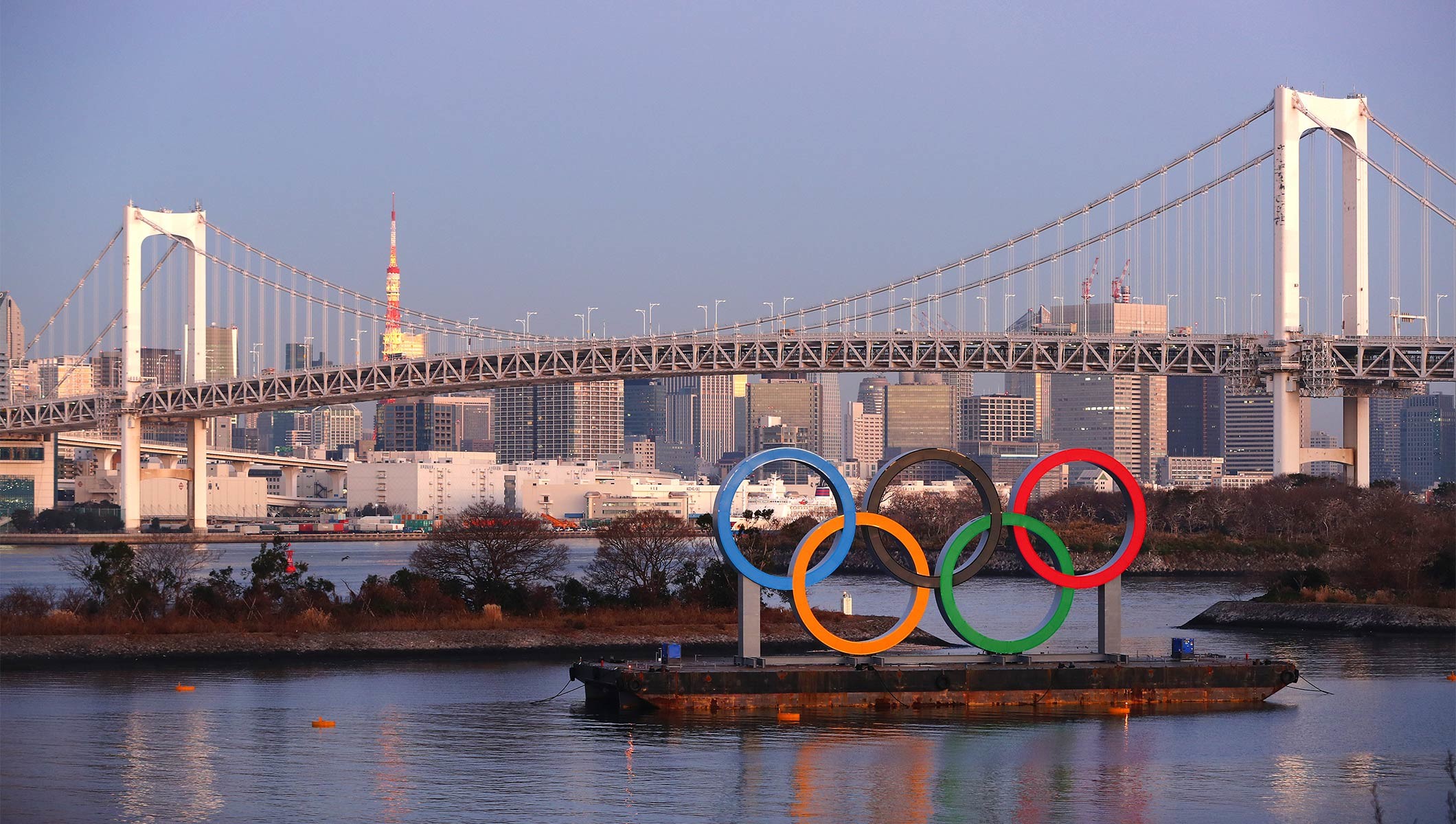
The cost for COVID-19 countermeasures will be paid by the two governments, with the central government covering 58% and the Tokyo government 42%.
The Tokyo Olympics, postponed by one year due to the outbreak of the COVID-19 pandemic, will be held from July 23 to August 8, 2021.
(12/22/2020) ⚡AMPby Xinhua News
Tokyo 2020 Olympic Games
Fifty-six years after having organized the Olympic Games, the Japanese capital will be hosting a Summer edition for the second time, originally scheduled from July 24 to August 9, 2020, the games were postponed due to coronavirus outbreak, the postponed Tokyo Olympics will be held from July 23 to August 8 in 2021, according to the International Olympic Committee decision. ...
more...Kenyan Hellen Obiri calls Wavelight technology same as doping
Two-time world 5,000m champion Hellen Obiri of Kenya recently spoke out about Wavelight technology and its use in track races, voicing her displeasure with the electronic pacing system. In an interview with BBC Sport Africa, the Olympic silver medallist said Wavelight technology gives athletes an unfair advantage, and she likened using it to doping.
“To me [Wavelight and doping] are the same,” she said. Obiri’s criticism of the innovative technology comes two months after Joshua Cheptegei and Letesenbet Gidey ran to 10,000m and 5,000m world records with the aid of the light pacing system on a track in Valencia.
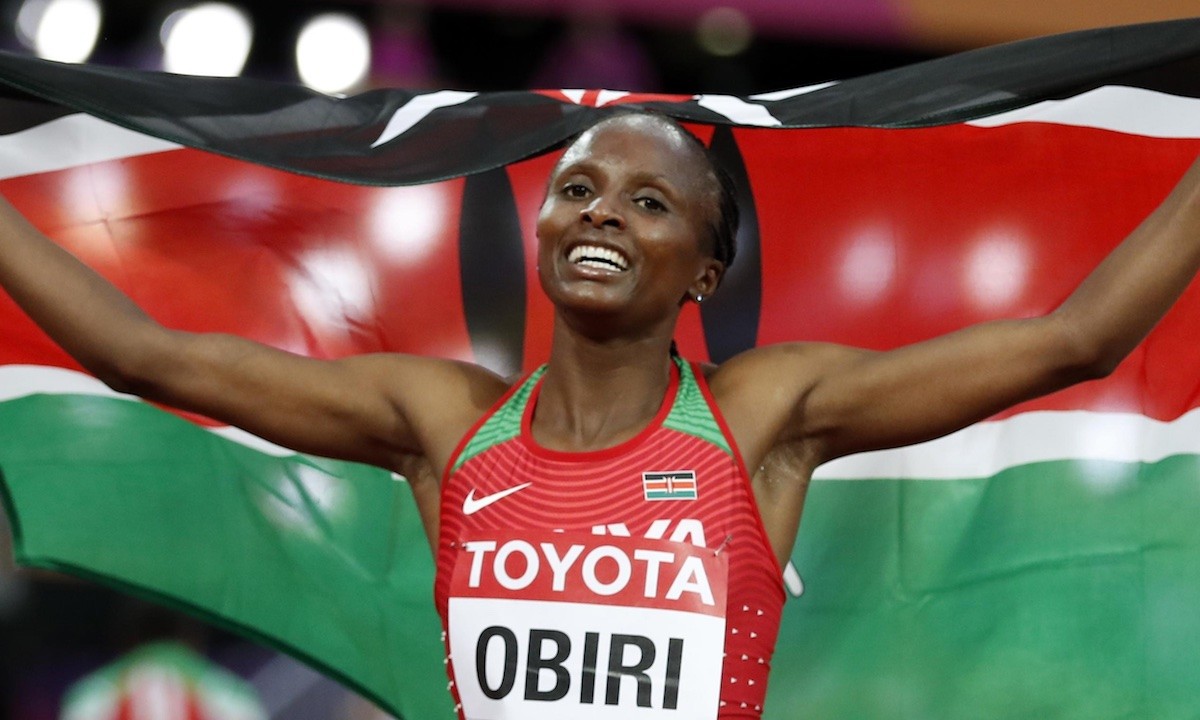
In the past, athletes running record attempts were paced by other runners for a portion of the race, and this is still a common practice. Cheptegei and Gidey used pacers as well, but when those runners stepped off the track, the pace lights were still there, representing the pace they had to match. This is one of the reasons Obiri doesn’t like the technology.

“You can just watch [and know], ‘I am inside the world record or outside [the] world record,'” Obiri told the BBC. “But when you are running alone, you can’t know whether you are inside or outside [the] world record.” Obiri notes that pacers can only take a runner so far before they themselves need to drop out of a race, but Wavelight technology “can take you … up to the finish.” Obiri isn’t the first to criticize this technology, but she could be the most prominent athlete to speak out about it so far.
Obiri also takes issue with the lack of opportunities in Wavelight racing, adding that, if this technology is here to stay, it should at least be available to all athletes. “I think it can be fair if all athletes are there, not one or two,” she said. “More like 12 athletes where anybody can break the world record.” When Cheptegei and Gidey ran in Valencia, they were the only runners on the track working toward the world records. “For me, it is better [to include multiple athletes] than to put one athlete in a race. If it’s available, let it be available to all.”
While she doesn’t agree with the use of Wavelight technology, Obiri said she understands that it is another part of development and innovation in track. “It is good to see the new things coming, but sometimes we need to work extra hard and not depend on other things. The way we used to do before.”
(12/22/2020) ⚡AMPby Ben Snider-McGrath
From nowhere to the fastest Indiana marathon runner ever
Never ran in a state track or cross-country meet. Never ran in NCAA Division I nationals.
Now, at age 30, Noah Droddy has become the fastest marathon runner ever out of Indiana.
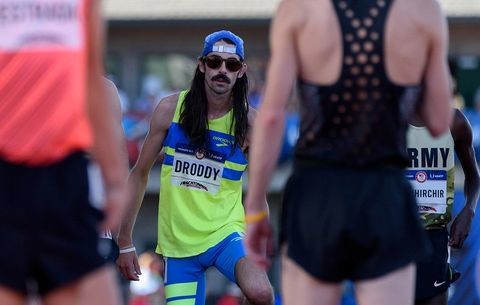
The Indianapolis native finished second Sunday in The Marathon Project at Chandler, Ariz., running six laps of a 4.3-mile loop. He covered the 26.2 miles in 2 hours, 9 minutes, 9 seconds.
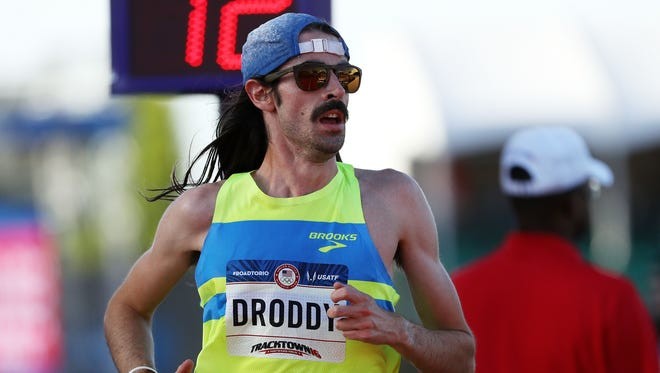
Martin Hehir, an anesthesiology student, finished first in 2:08:59. Hehir was sixth Feb. 29 in the U.S trials at Atlanta, with three qualifying for the 2021 Tokyo Olympics.
On certified courses without aiding wind, Hehir and Droddy rank Nos. 7 and 9 in U.S. history.
Droddy averaged 4:56 per mile off even pace, clocking 1:04:28 for the first half and 1:04:41 for the second. By 10-kilometer splits, he ran the first 40 kilometers in 30:44, 30:26, 30:34 and 30:34.
Previous record by a native Hoosier was 2:11:13 by Hammond’s Rudy Chapa, who was seventh at New York in 1983.
Droddy’s previous best was 2:11:42 in finishing 17th at Chicago in October 2019. He had to withdraw from the Olympic Trials because of injury.
“There were those moments where I came back, and I said, ‘Ok what is a kind of unique talent that I have?” he said in a pre-race podcast. “Like, what am I passionate about pursuing? And that thing, to me, has always been running. It’s the one thing I’m willing to work extremely hard at, give everything to, and that I’m very fulfilled by.”
(12/21/2020) ⚡AMPby David Woods
Grandma’s Marathon-Duluth, Inc. has been included on the “Top 20 Marathons of the Decade†list, as voted on by participants and published by popular running website BibRave
Already named by BibRave voters as one of the top five marathons in the country in 2018, Grandma’s Marathon this time cracks the all-decade list due to its “proven track record for excellent communication and organization.”
“It’s an honor to be included because these voters are largely people who have been to and participated in our race,” Executive Director Shane Bauer said, “but an award like this is more reflective on our community as a whole than it is just Grandma’s Marathon.
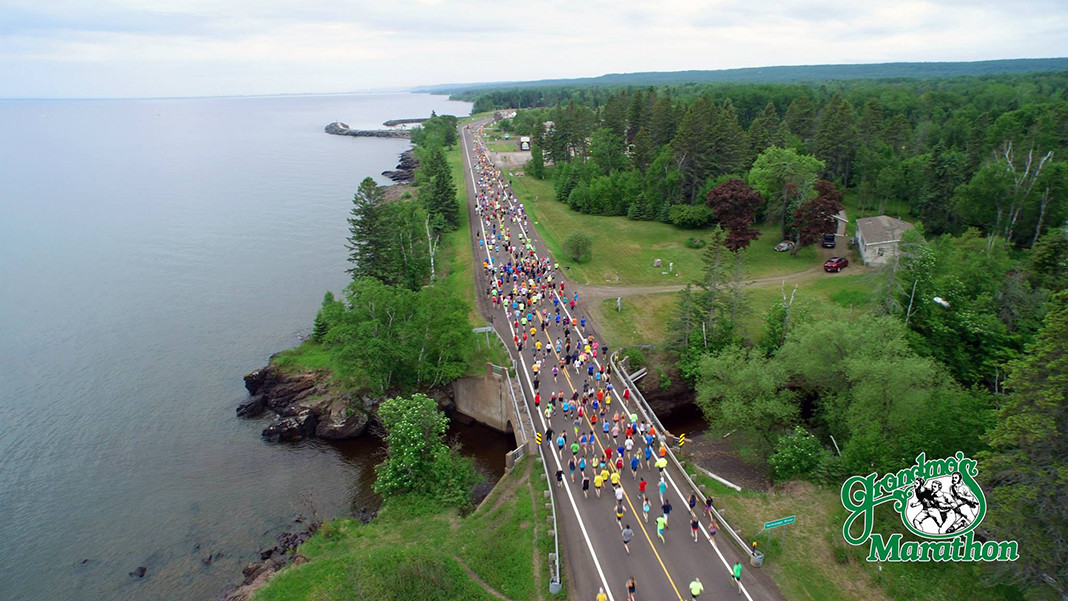
There are more than 800 marathons in the United States, and ranking near the top of all those is a testament to the overall experience our community provides to thousands of participants every June.”
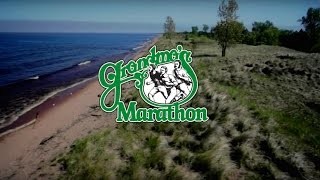
BibRave is a website where participants can share their experiences and feedback following a race, and because of that it’s become a popular spot for people looking for reviews prior to signing up for a future event.
“It’s unique that people leave Duluth after race weekend so eager to spread the word about our city and our race,” Bauer continued. “That piece helps separate Grandma’s Marathon from the crowd and could never be accomplished without the amazing support and energy of our community.”
Grandma’s Marathon was also named by BibRave voters as one of the nation’s top 5 “Race-Cations,” which is described as a premier race combined with weekend experiences to make potential extra travel and logistics worth the time.
(12/21/2020) ⚡AMPGrandmas Marathon
Grandma's Marathon began in 1977 when a group of local runners planned a scenic road race from Two Harbors to Duluth, Minnesota. There were just 150 participants that year, but organizers knew they had discovered something special. The marathon received its name from the Duluth-based group of famous Grandma's restaurants, its first major sponsor. The level of sponsorship with the...
more...Charles Yosei and Sheila Chelangat are keen to run at both the World Cross Country Championships in Bathurst, Australia and Olympic Games in Tokyo next year
Charles Yosei, who is a former Africa cross country bronze medalist and Chelangat, a former Youth Commonwealth Games 3,000m champion said this after winning the second leg of Athletics Kenya Cross country meeting at the Koileel Samoe University
However, junior winners in Nandi, Agnes Jebet (women's 6km) and newcomer Felix Korir (men's 8km), said they have their eyes fixed on the World Under-20 Championships set for August next year at the Moi International Sports Center (MISC), Kasarani.
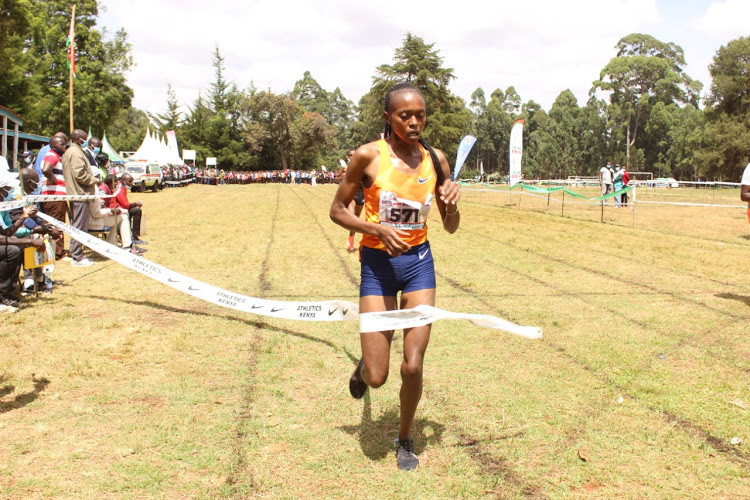
Yosei won the senior men's 10km title in 30:38.3 ahead of Phenus Kipleting (30:40.3) and Nicholas Kimeli (30:43.2), who completed the podium.
The race, which attracted over 300 athletes, saw Family Bank Half Marathon champion Daniel Simiu fail to impress despite winning the opening leg in Machakos a fortnight ago.

He placed fourth in 30:44.6 as Robert Kiprop (30:57.5) and Michael Bett (31:01.9) closed the top six positions in the race.
“I am in good shape and hopefully, I will make the team to the World Cross Country Championships in Bathurst, Australia on March 11 next year. I want to use cross country to prepare for the 2021 Olympic Games,” said Yose.
Kericho-based Chelang’at won the senior women’s 10km race in 34:25.6 while Joyce Jepleting (34:28.8) and Gladys Chepkirui (34:42.2) placed second and third respectively.
Former Africa junior 5,000m silver medallist Edina Jebitok (34:54.5), Mercy Jeptarus (34:55.7) and Eva Cherono (35:01.7) followed in that order for the top six places.
“The race was not easy. Beating 301 athletes was tough and I want to build on this as I focus on the Olympic Games,” he said.
(12/21/2020) ⚡AMPby Emmanuel Sabuni
Sarah Hall ran the second fastest time for the marathon at the Marathon Project
Sara Hall won The Marathon Project in Chandler, Arizona, on Sunday, December 20, running 2:20:32—making her the second-fastest American marathoner of all time. She took almost 90 seconds off her previous PR of 2:22:01, which she ran only 11 weeks ago at the London Marathon.
For about the first 18 miles of the race Hall, 37, flirted with the pace of Deena Kastor’s American record— 2:19:36—which has stood since 2006. But Hall, who ran behind two male pacesetters, couldn’t quite maintain the pace through the later miles.

Keira D’Amato, the Virginia realtor who earlier this year ran an American record for the women’s-only 10 mile, finished second in 2:22:56, taking nearly 12 minutes off her previous marathon best.
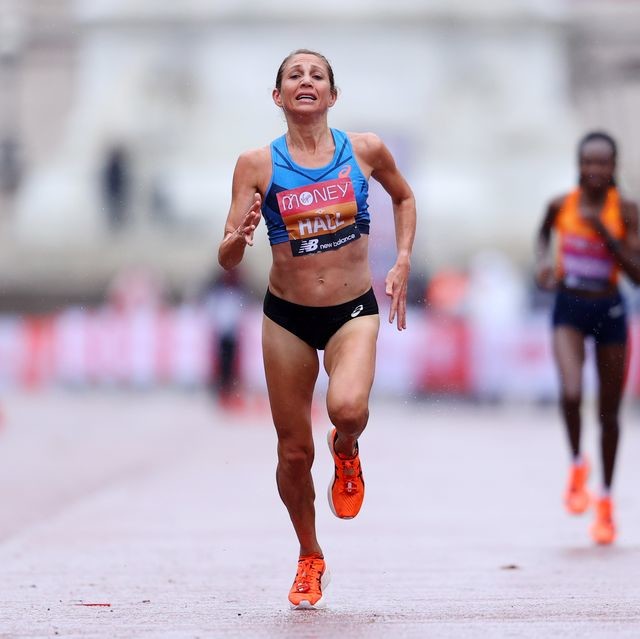
Kellyn Taylor, 34, who went with Hall for the first half of the race, fell back in the second half and finished in 2:25:22.
The 37-year-old Hall ran a personal best 2:22.01 at London on Oct. 4 and was hoping on a short turnaround to better Deena Kastor's 14-year American record of 2:19.36, set at London in 2006. She came close with another significant PR drop, improving from sixth best in U.S. history to second ahead of Jordan Hasay's 2:20.57 at Chicago in 2017.
"London was so wonderful getting to place as high as I possibly could have," Hall said. "This was more of a time trial, and that's kind of tough when it feels like training sometimes. I really look forward to when we can get back to normal races with crowds, but I feel so grateful for the guys I was able to run with. They kept me honest in the second half when I was really struggling."
She said being No. 2 on the American marathon list is "kind of surreal. I've had so much disappointment in my career (including not finishing at the U.S. Olympic Trials in February) and I would have walked from this sport 10 years ago. But my husband just relentlessly believed in me and God encouraged me there was more there. I kind of (rediscovered) my love for it. Getting rid of the fear of failure really helped me enjoy it a lot more."
Two-time Olympian Ryan Hall, third fastest all-time among American men's marathoners, now coaches his wife, whose next goal is to make the U.S. Olympic track team for Tokyo in the 10,000-meter.
Sara Hall 2:20:32
Keira D'Amato 2:22:56
Kellyn Taylor 2:25:22
Emma Bates 2:25:40
Natasha Wodak 2:26:19
(12/20/2020) ⚡AMPMarty Hehir wins The Marathon Project Running a sub 2:09
Marty Hehir is the MARATHON PROJECT winner 2:08:59. Noah Droddy in second. Both lifetime PBs!
Hehir, 28, is in his fourth year of medical school in Philadelphia and applying to residency programs in anesthesiology.
He pushed the pace between miles 22 and 23, opening up a lead of several meters over Noah Droddy. Hehir grimaced through the final stretch, but dipped under the 2:09 mark, for a two-and-a-half-minute personal best. His time puts him seventh on the list of U.S. all-time marathoners.
Droddy finished second in 2:09:09, also an enormous personal record. Colin Bennie—who, like Hehir, is part of the Reebok Boston Track Club in Charlottesville, Virginia—was third in 2:09:38.
Mens Results
Martin Hehir 2:08:59
Noah Droddy 2:09:09
Colin Bennie 2:09:38
Scott Fauble 2:09:42
Ian Butler 2:09:45
(12/20/2020) ⚡AMPYour race is in an hour, and you know you’ve gotta go. Here’s how to guarantee a timely Number 2.
On a perfect race morning (before the pandemic) or prior to a hard workout, you’d wake up, have breakfast, and use the bathroom—at least once, maybe twice—and then start your event or training run, not worrying whether you’ll have to stop along the way for an emergency Number 2.
But sometimes, your routine fails you. Maybe you’re traveling and in a different time zone, maybe your diet’s been a little off, or maybe you’ve just got a nervous stomach. Some mornings, you just can’t go, no matter how much you know it’s essential for a good run. Or, you know you have to start soon, but you’re stuck wondering how to make yourself poop.

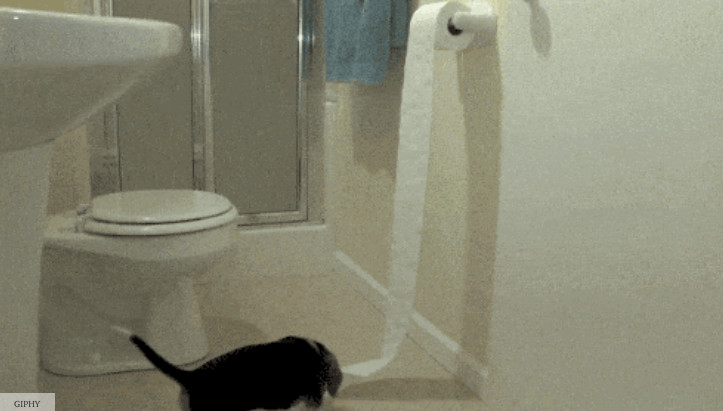
So what do you do now? We looked at the research and talked with Felice Schnoll-Sussman, M.D., a gastroenterologist at the Weill Medical College of Cornell University and a New York City Marathon finisher, to find out. Here’s what science says about how to get yourself to go.
1. Sip and Sit
Many of us swear by our morning cup of joe to get our bowels moving—and although scientists aren’t sure exactly why coffee works this way, at least one study has found that it does seem to induce “a desire to defecate.” (It’s unlikely that caffeine is responsible, because even decaf coffee had this effect.)
But Schnoll-Sussman says that any warm beverage can help stimulate a bowel movement, including a cup of tea or even hot water. “The warm liquid acts as a vasodilator,” she says. “It widens blood vessels in the digestive system and helps increase blood flow and GI activity.”
Schnoll-Sussman advises runners to drink a hot beverage in the morning and then sit on the toilet for a while. “Just the act of sitting there for few minutes can bring on the urge to go, even if you don’t feel like you have to right away.”
2. Get Moving
Physical activity can bring on a bathroom break, which is one reason a warmup can be so important before a race. “Before you head out the door for a hard workout, I would suggest exercising lightly to help stimulate a bowel movement,” Schnoll-Sussman says.
If you’re trying to unload in the comfort of your own home or hotel room, try jogging up and down the stairs or doing some jumping jacks or dynamic stretches. Already at the race start? Warm up with some strides while you’re still near the porta-potties.
3. Wake Up Earlier
“Make sure you’re getting up early enough on race morning to go through your whole morning routine, including time for the bathroom,” Schnoll-Sussman says. People racing in a different time zone, she adds, should try to stay as close to their body’s natural schedule as they can.
If you’re from New York and you’re racing in Portland, that might mean getting up and having your breakfast on East-Coast time—even if it’s a few hours before your race. On the other hand, if you’re a Californian racing Boston, you’ll already be waking up several hours earlier than you’re used to. “That’s a little bit trickier,” Schnoll-Sussman says, “but in this case it’s also important to wake up with plenty of time to spare, so that your body has extra time to digest your breakfast and feel the urge to go.”
4. Try a Massage
A UCLA study suggests that putting gentle pressure on the perineum—the area between your genitals and anus—may help break up and soften stools for people who have been suffering from constipation.
While it’s not yet a common treatment prescribed by doctors (and it wouldn’t be her first line of advice for runners who don’t typically have pooping problems), Schnoll-Sussman says that it may be helpful for people with specific types of blockages or medical conditions. “It might be worth a try if you’re in a bind,” she says—and while it will probably be a bit awkward, it certainly can’t hurt.
5. Or Glycerin Suppositories
Some runners confess to using glycerin suppositories on particularly desperate race mornings. But Schnoll-Sussman would not recommend this, especially if you have never tried one before.
“The time it takes for a suppository to take effect is very variable from person to person,” she says. “It could work in 15 or 20 minutes, or it could take several hours—so if you do it race morning, you risk having to start the race before it works.” If a runner did want to use one, Schnoll-Sussman would suggest using it the night before a race, or at least not trying it for the very first time on race morning.
6. Focus on Food
If you’re worried about taking a quick-fix supplement, or other methods just aren’t doing the trick, turn to foods like raspberries which have 8 grams of fiber per cup. Grab a handful of almonds on the go. The powerhouse nuts contain magnesium—which researchers found may help relieve constipation. Or, reach for the age-old cure of prunes. Packed with fiber, they’ve been proven to help you go. One study found that eating about 10 prunes every day for three weeks improved stool frequency, so adding them to your diet well before race day might help avert a crisis.
What to Know for Next Time
Getting enough fiber is important in the days and weeks before a race for keeping digestion regular and preventing constipation. But on race day, consuming more fiber than usual can cause diarrhea, so don’t eat (or drink) large amounts the morning of, especially if you’re not used to it.
Staying hydrated is also key—especially if you’re flying on a plane or otherwise traveling. “Constipation occurs when the stool is too dry to move through the body easily, so drinking plenty of water can always help move things along,” Schnoll-Sussman says. Filling up on H2O the days before your race, and drinking that warm beverage first thing in the morning, is the best way to make sure you’re able to go when you need to.
(12/20/2020) ⚡AMP
by Runner’s World
Foreign runners take gold at Taipei Marathon
Paul K. Lonyangata won NT$1.8 million ($63,880US) for his first-place finish and record-breaking achievement
Kenyan runner Paul K. Lonyangata won the 2020 Taipei Marathon men's division on Sunday (Dec. 20) with a time of 2 hours, 9 minutes and 18 seconds; while the female champion, Ethiopian Askale M. Wegi, came in at 2 hours, 28 minutes and 31 seconds, according to a China Times report.
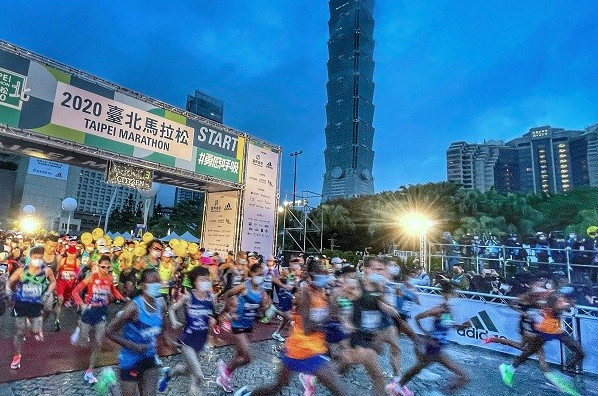
Lonyangata was awarded prize money of NT$1.8 million (US$62,000) for his first-place finish and record-breaking achievement.
The Kenyan champion said this was not the first time to win a road race, but it was the highest prize money he had ever received from a single race. He added that his prize money would help many people in his hometown who have contracted COVID-19, as well as fund schools.
Taipei City Mayor Ko Wen-je (柯文哲) said during an address before the start of the race that about 37,000 runners had registered for the event, but only 28,000 runners were selected by drawing lots, in order to maintain the quality of the event, CNA reported. In the future, 28,000 will become the limit for the number of people participating in the running event, the mayor said.
In order to obtain an IAAF Platinum Label for the event, which has been held every year since 1986, the city government invited 12 elite international athletes to participate in the event, the mayor said. He added that during the quarantine period, they were provided with running machines in their rooms so they could keep training.
The mayor went on to say the Taipei Marathon is likely the only large-scale city marathon to take place this year without a hitch, due to the pandemic, per CNA.
(12/20/2020) ⚡AMPNew Taipei City WJS Marathon
The best thing about Wan Jin Shi Marathon Race, is the chance to take in the enchanting view along the North Shore. The breathtaking view of the mountains and the seaside is the centerpiece of the race. The Queen's Head Rock is set against the backdrop of the North Shore, complemented by the area's many scenic landmarks. This is the...
more...Why distance doesn’t matter when it comes to FKTs
Regardless of its length, your favourite running route could deserve its own official FKT
With countless event cancellations this year, fastest known times (FKTs) have blown up and replaced races for so many runners around the world. As the founders of fastestknowntime.com (the official website of FKTs) told FiveThiryEight in the summer, they have seen a massive increase in FKT submissions in 2020 compared to 2019, and that hasn’t slowed down in recent months. It’s easy to look at some of these routes, many of which take days to complete, and think, “I could never do that.” The thing is, FKTs aren’t just for ultrarunners or elite athletes. Anyone can submit a run to be considered by the crew at fastestknowntime.com, and the routes can be as short or as long as you want. So really, there’s nothing stopping you from owning an FKT.
The short
A quick scan of the FKT website will show you that these routes are not all ultra-distance runs. Yes, there are some ridiculously long runs, but there are also routes that you don’t have to dedicate days (or, in some cases, weeks) to in order to complete them. You can even run a few kilometres and, if the route is noteworthy enough, you can get it certified as an official FKT.
For example, look at the Mt. Sanitas route in Boulder, Colo. This is a 1.4-mile (2.25K) run, although it gains almost 400m in that short period of time. This is by no means an easy route to run, and you’ll be gassed by the end of the intense climb, but it’s just a little over 2K. You probably won’t beat the current FKT (it belongs to Kilian Jornet, who completed the run in just over 14 minutes), but if you’re in Boulder and feel like punishing yourself, give it a shot.
The long
On the other end of the spectrum, there are the long FKTs. And when we say long, we mean long. A great example of this is the Appalachian Trail. This 3,500K trail stretches from Maine all the way down to Georgia, and the current route records belong to Belgian Karel Sabbe, who ran farther than anyone else at the 2019 Barkley Marathons (although he still finished with a DNF), and American Liz Anjos. Sabbe set his FKT in 2018, completing the route in just over 41 days, and Anjos ran hers earlier this year, finishing in 51 days.
Try your own
As you can see, you can go super short or extremely long for FKTs. The key to getting your route certified, as listed on the FKT website, is to make sure it is “distinct enough so that others will be interested in repeating it.” It is also noted that, while routes can be any length, “anything less than five miles long or with less than 500 feet of climbing would have to be special.” If you think you’ve got a route that could attract other runners, send it in to the team at fastestknowntime.com. If they like it, run it yourself as the first official record attempt on the route. Once you’re finished, you’ll own an FKT. It might not stay under your name forever (especially if someone like Jornet decides to run it), but you’ll always be the original record holder.
(12/20/2020) ⚡AMPby Running Magazine
Five ways to use running to survive the festive season
Season’s Greetings! The holiday season is fast approaching… whether you will be celebrating Christmas, the arrival of a new year, or the end of 2020, the opportunity to rest and down tools will be welcome for all of us.
Throughout this pandemic, I have always tried to look for the positives. But let’s be honest – it has been a year like no other, and not in a good way! Thankfully, there is a lot to look forward to in the coming year – vaccines, seeing our friends and families more, travel… and the Olympics!

The festive season is truly special in many ways, but it can also be a little stressful. Christmas in the UK is famous for family arguments, excessive drinking, and cold, wintry weather. By the time early January arrives, the return to a normal routine often feels very welcome.
So how best to survive the festive season with a positive mindset? The answer, for me, is definitely… running!
Training out in the fresh air provides the perfect antidote to Christmas excesses of all kinds, and brings a welcome boost to your physical and mental health. But how do you fit it in, on top of all the holiday traditions and celebrations? Decathlon legend Daley Thompson famously trained even on Christmas day – what further inspiration do we need? If you’re not entirely convinced by running during the festive season, here are my five top tips on how to use running to keep your spirits up during the holidays.
Run early!
Even without work to do, somehow the days can fly by during the holiday season, with meals to prepare, gifts to wrap, and relatives to help. Therefore, I always try to run early in the morning, making it the first activity I do for the day. Enjoying some quiet time to yourself by running in early morning light, before the day gets going, sets you up nicely for the day ahead.
Consume in moderation.
Eating and drinking feature heavily in holiday season activities. Enjoying special festive foods at this time of year is great – unless you’re trying to keep your weight down for your next marathon! Being surrounded by delicious food can be, well, torment! I adopted the rule of moderation – to enjoy special treats but in modest amounts, so that I could enjoy seasonal delicacies but without any waistline damage!
Let’s race!
The end or start of a year is the perfect time to set down a milestone of your progress by doing a race. Because of the pandemic, races are hard to come by this year, so why not run a time trial instead? A distance like 5km is ideal since it does not take too much out of you, and you can repeat it reasonably often. If you haven’t yet tried parkrun, why not give it a try, even if it’s a (not) parkrun where suspensions are still in place. World Athletics and parkrun announced a new partnership this year.
Wrap up warm.
In the northern hemisphere, winter is well and truly here. But despite the cold, running in winter can be delightful – frosty crisp mornings, misty sunrises, and silhouetted leafless trees make a run in your local park feel like you’ve been transported to a magical, imaginary wonderland. There’s no escaping those first few minutes which are very chilly, but once you get going and warmed up, winter running feels invigorating!
Plan ahead.
At this time of year, it’s easy to focus entirely on the festivities… and forget that time keeps marching relentlessly on. January will arrive in no time, so why not use the holiday season to plan some running goals, for example a training plan for the next few weeks, a race to look forward to, or a revamp of your nutrition using some process goals. Then you can avoid any sadness when the festivities are over, and press on with your new goals.
(12/20/2020) ⚡AMPby World Athletics
Many Protests as Russia doping ban cut to two years
Russia's ban from international sport was halved to two years on Thursday and its athletes were cleared to compete as neutrals, drawing condemnation from athletes and anti-doping advocates.
The Swiss-based Court of Arbitration for Sport cut the initial four-year ban imposed by the World Anti-Doping Agency, citing "matters of proportionality" and the "need to effect cultural change and encourage the next generation of Russian athletes".

"The consequences which the Panel has decided to impose are not as extensive as those sought by WADA," a CAS statement said.
"This should not, however, be read as any validation of the conduct of RUSADA (Russia's anti-doping watchdog) or the Russian authorities."
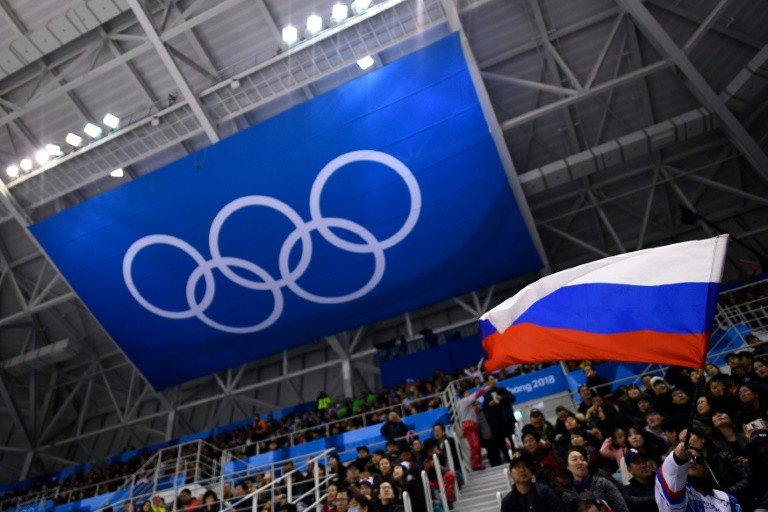
The CAS judgement comes after WADA hit Russia with the four-year ban last year for doping non-compliance after finding data handed over from its tainted Moscow laboratory had been manipulated.
The saga first erupted in 2016 when Grigory Rodchenkov, the laboratory's former head, blew the whistle over state-backed doping at the 2014 Winter Olympics in the Russian resort of Sochi.
The shortened ban imposed by CAS runs until December 16, 2022, encompassing the Tokyo Olympics, Beijing Winter Games and the 2022 World Cup in Qatar, which ends two days later.
Russia's flag is forbidden, but its athletes will be allowed to compete in a uniform bearing the word "Russia", as long as it also says "neutral athlete", the court said.
Government representatives including President Vladimir Putin are barred, but they may still attend if invited by the host country's head of state, CAS added.
WADA president Witold Banka said he was "disappointed" that the four-year ban was cut, but still called the ruling "an important moment for clean sport".
"WADA is pleased to have won this landmark case," Banka said, adding that the verdict "clearly upheld our findings that the Russian authorities brazenly and illegally manipulated the Moscow laboratory data in an effort to cover up an institutionalised doping scheme".
'Devastating decision'
But there was strong condemnation elsewhere. US Anti-Doping Agency chief executive officer Travis Tygart, who played a key role in exposing cycling's Lance Armstrong doping scandal, called it a "devastating decision".
"At this stage in this sordid Russian state-sponsored doping affair, now spanning close to a decade, there is no consolation in this weak, watered-down outcome," Tygart said.
He called it "a catastrophic blow to clean athletes, the integrity of sport, and the rule of law" and, in an interview with AFP, said the ruling was a "tragedy" for the global fight against drug cheats.
British Olympic gold medal-winning cyclist Callum Skinner tweeted, "The biggest doping scandal in history goes unpunished," and Global Athlete, which advocates for sportspeople, called the ruling "farcical".
"The fact that Russian Athletes can compete as 'Neutral Athletes from Russia' is another farcical facade that makes a mockery of the system."
(12/19/2020) ⚡AMPby AFP
Canadian 20,000m record holder Justin Kent is set to make his debut in the marathon on Sunday at The Marathon Project
Justin Kent is set to make his debut in the marathon on Sunday at The Marathon Project in Chandler, Ariz. Kent, who also works as a coach with Mile2Marathon, is no stranger to road racing, having won the virtual Canadian 10K Championships in July (he ran 28:52) and having run an unofficial half-marathon PB of 1:02:34 in October. The marathon is a completely different beast, though, and Kent says he knows there’s a steep learning curve when it comes to running 42.2K well.
Below is his favorite type of workout from his marathon build, and while he admits it “isn’t the most glamorous” of sessions, he says it is an important one that all prospective marathoners should include in their training schedules.
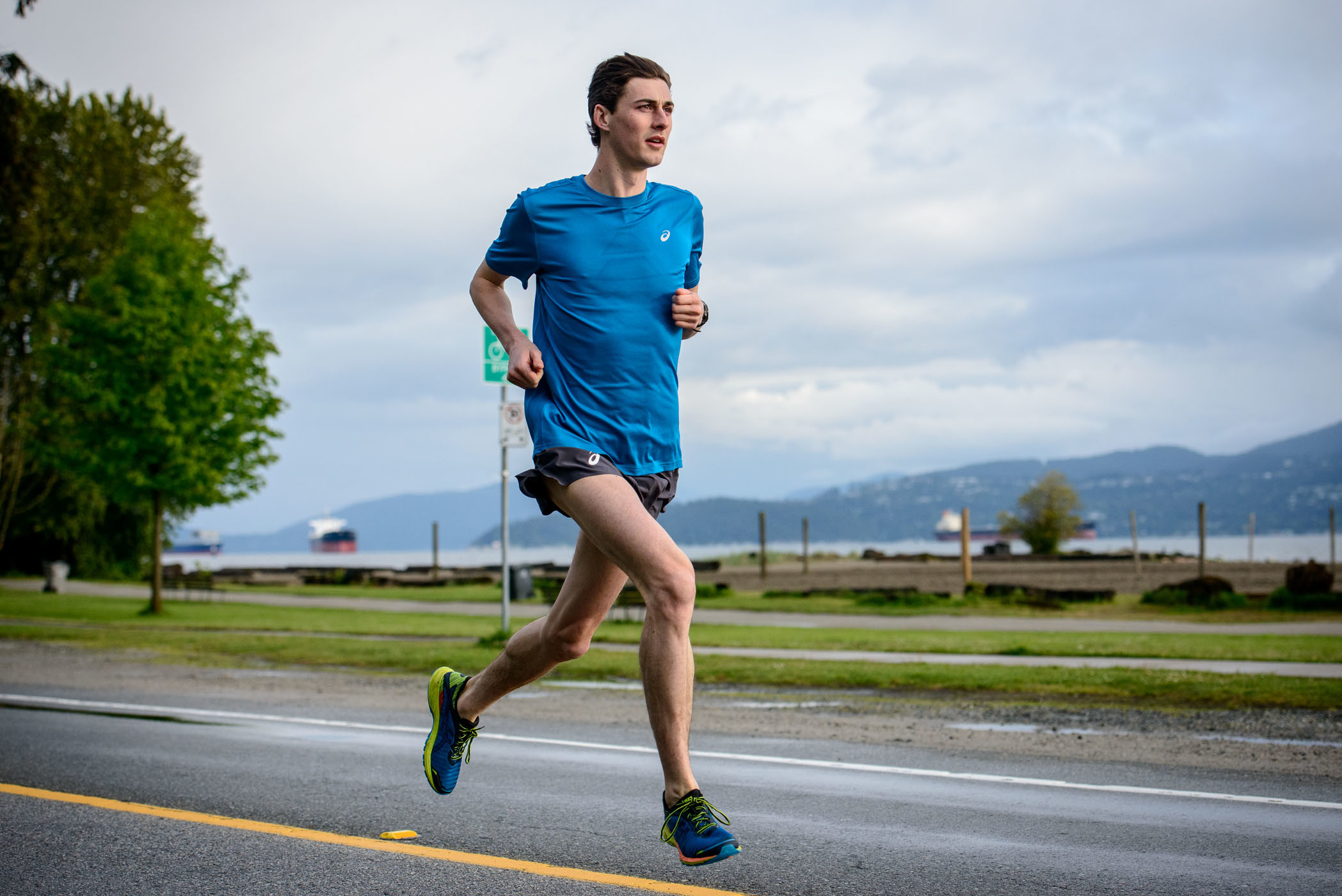
Kent says he respects the distance and his fellow athletes too much to try to forecast what time he will run on Sunday. “Obviously I want to run really fast, but if I made some crazy prediction saying I would go and run a certain time, I think it’d be a disservice to people who have run those times in the past.” He has put in the work, though, giving himself the best chance to run a great time. One of his favourite workouts in this build to The Marathon Project has been the progression run.
“I’ve grown to love the long, sustained efforts,” Kent says. “A few years back when I was training for the 1,500m, I always enjoyed the long run, and over the years, it’s become even more enjoyable.” He recently completed a 38K progression run that featured “a pretty solid chunk at marathon pace.” These runs are so important and effective, he says, because they help “your body get used to the effort that you need to maintain that marathon goal pace.”

Kent says he believes that the experience he has gained from these long efforts will help him at The Marathon Project. He adds that he has already seen the benefits of his progression runs in a race setting when he ran the national 20,000m record of 1:01:01 in November. “These kinds of workouts aren’t as exciting to talk about as big runs on the track,” he says, “but the sessions that aren’t as glamorous are the best bang for your buck.”
If you’re planning on running a marathon, adding some progression runs to your schedule could really help you out. Kent says to warm up as you would for a track session with drills to get your body ready for the effort. Then, start your run with 5K to 8K of easy running. “Just go through the motions,” Kent says. “It’s just normal running for a while, and then you start picking it up. The key is to not hammer it right off the bat.”
After your warmup, your run can vary in distance. No matter how far you’re planning to run, you should reach marathon pace at some point. For example, if you warm up with an easy 8K, you can spend the next 8K slowly building. After that, close with 8K at marathon pace. By the time you reach the marathon pace section, you will probably already be at least a little tired, which is why this type of workout can be so effective.
There’s no chance that you won’t feel tired in your marathon, and getting used to running while tired will only help you on race day.
Try it out yourself, and play with the distances. Progression runs can also be used in training for other distances. The key is to reach race pace and maintain it for a solid period of time.
(12/19/2020) ⚡AMPby Ben Snider-McGrath
5 reasons why The Marathon Project will be the race of the year
With just over 100 of the top athletes in North America (and several athletes representing other nations) prepared to race on Sunday on a flat and fast course in Chandler, Ariz., The Marathon Project has the potential to be the best race of 2020. Records could be broken, Canadians could hit Olympic standard and drama could unfold, all of which makes the event mandatory viewing for all fans of the sport. There are many reasons why The Marathon Project could be a top event, but here are just a few if you needed any more convincing.
It’s one of the only races of the year
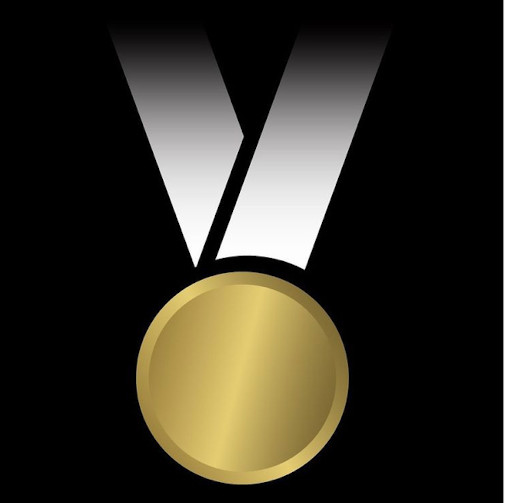
The Marathon Project could be one of the best races of the year because, well, it’s one of the only races of the year. So far this year, the biggest races we’ve seen have been the U.S. Marathon Trials in February, the Tokyo Marathon in March, the London Marathon in October and the Valencia Marathon in December. Based on its stacked lineup, The Marathon Project will likely join this list as one of the top events of 2020, and if the contenders are firing on all cylinders on Sunday, it could beat out those other events as the top race of this strange year.
Canadians are racing
Six Canadians are set to race in Arizona on Sunday, and we can’t wait to see any of them run. On the men’s side, Cam Levins will look to better his Canadian marathon record of 2:09:25, and he’ll be joined by Rory Linkletter, who has a marathon PB of 2:16:42, and Ben Preisner and Justin Kent, who will be running their debut marathons. (Preisner ran a solo marathon earlier this year, but this will be his first official race over 42.2K.) While Levins is the only one to have ever run under the Olympic qualifying standard of 2:11:30 (although he has yet to do it in the current qualifying window for Tokyo 2021), they’re all certainly capable of hitting this time, and it will be exciting to see how they fare on Sunday.
Natasha Wodak and Kinsey Middleton will represent Canada in the women’s race, and like the runners on the men’s team, they’re both threats to beat the Olympic standard, which is 2:29:30 for women. Wodak has run one marathon before, but that was all the way back in 2013. She ran a 2:35:16 back then, and now, seven years later, she’ll be looking to take a significant chunk off that result. Middleton won the Canadian Marathon Championships in 2018, when she ran her PB of 2:32:09. Two years removed from that result, she’s likely hungry to run even quicker in Arizona.
Records could fall
Sara Hall is the top-seeded runner in the women’s field, and she’s coming off a spectacular PB at the London Marathon, where she ran 2:22:01. If she has a good run, she could be in the hunt for the American record of 2:19:36, which belongs to Deena Kastor. On the men’s side, Levins could challenge his own Canadian record, which he set at the 2018 STWM.
It’s a chance to race
Not being able to race in 2020 has been hard on all runners, but for these elites, this is how they pay their bills. Racing brings prize money and sponsorships, and with so few chances to race this year, it has been extremely tough on these athletes. The Marathon Project is giving runners the opportunity to earn some cash, which is a great gift in time for the winter holidays.
Olympic spots are up for grabs
The Olympic qualifying window was closed for runners throughout the summer, and even if it had been open, there were next to no chances for athletes to run standard at official races. The American Olympic marathon team was decided at the trials in February, but for athletes from other countries, this presents an opportunity to potentially book their tickets to Tokyo next summer. With so much at stake, there will definitely be some thrilling racing on Sunday.
(12/19/2020) ⚡AMPby Running Magazine
Olivier Leblond Broke the American Age-Group Record in the 100-Mile Track Event
He ran 403 laps around the track in fewer than 13 hours!
Despite the COVID-19 pandemic canceling all kinds of races this year, ultrarunner Olivier Leblond was hoping for an opportunity to put his training to good use before the end of 2020. After running one 100-mile race on two-weeks notice in July, he decided to target an age-group record in the 100-mile track event at the site of his 2013 win in the 24-hour race: Desert Solstice.
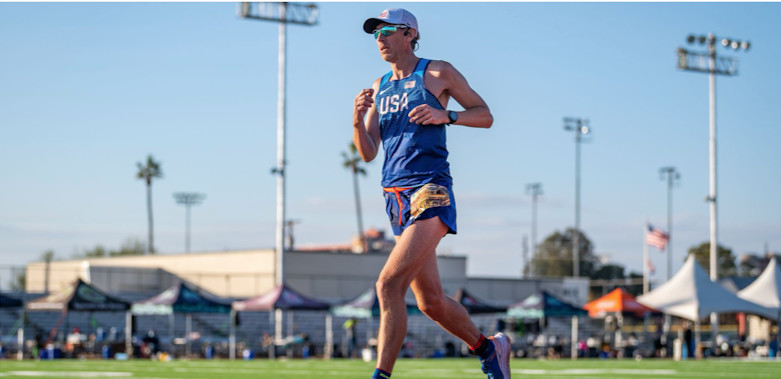
And close out the year, he did. In Phoenix, Arizona, Leblond set a new American men’s 45-49 age-group record in the 100-mile track event on December 12.
Leblond ran 403 laps around the track in 12 hours, 41 minutes, and 57 seconds, making him the fourth fastest ever in his age group globally. The 48-year-old French-American beat the previous record—13:56:59, set by Rich Riopel in May 2019—by more than an hour.
“I was going crazy this year because training takes a lot of time, and when you stop feeling good because races are canceled, you think, Oh no, this was my last chance,” Leblond told Runner’s World. “It’s been a crappy year for everybody, but I wanted to at least try to get one good result.”
Leblond had a solid five-week training block in which he had put in 110-, 115-, and 120-mile weeks, sandwiched between two easier weeks. Before he knew it, he and his crew chief/girlfriend, Sarah Smith, were on their way to Phoenix.
The race featured a stellar cast of runners, like eventual men’s and women’s 24-hour race winners Nick Coury, who finished with 155.41 miles, and Marisa Lizak, the now two-time champ who finished fourth overall with 142.64 miles.
While all of the runners raced around the oval, Leblond focused on his own 7:40 pace, which had him going about 1:54 per lap. Even with bathroom breaks, this would comfortably get him past Riopel’s record .
However, Leblond had another goal he wanted to hit: breaking 13 hours.
“All of the 100 milers I’ve done were on trails or had big climbs or were hot or something,” he said. “You don’t go run hours around a track just to have fun. Your focus is a PR, and that’s what I was looking to do.”
(12/19/2020) ⚡AMPby Runner’s World
When This Runner Lost His Job, He Took the Opportunity to Achieve a Lifelong Dream
Shan Riggs ran more than 3,100 miles and raised more than $45,000
The beginning of Shan Riggs’s story is an all-too familiar tale from 2020. When the pandemic hit, he lost his job as a sponsorship consultant for races and events, leaving him without work for the year as races were postponed or canceled by COVID-19.

For months, Riggs was left with almost too much free time as he waited to see what would happen with the pandemic. He hoped he could return to his main client, the Hartford Marathon Foundation, near where he was living in Connecticut. However, by August, he realized he’d be without work for the remainder of the year.
While it was tough to accept in the moment, Riggs then realized that this might be the ideal time to achieve his dream of running across the country. Plus, he could use the 3,200-mile journey to raise money for Foodshare, a member of Feeding America that serves Connecticut’s Hartford and Tolland counties.
“I had done runs from Chicago to Indianapolis before, but never any multi-day runs that went on for months,” Riggs told Runner’s World. “Now that I suddenly didn’t have work, I realized that I could do something more, and I’d worked with Foodshare through the Hartford Marathon. When I’d see a football field with rows and rows of cars of tons of people who never needed help before, I knew I wanted to get as much visibility to them as possible.”
Riggs pulled together his plans in about three weeks. He parted ways with most of his belongings, trying to limit the overhead cost of rent and attempting to live solely out of the camper van he owned with his partner, Callie Vinson, who had been living in Chicago.
Once that was done, Riggs made his way across the country, picking up Vinson in Chicago on their way to San Francisco. On September 1, he started his long journey across the country.
Riggs wasn’t attempting a record-breaking run, so he was able to settle into a comfortable pace each day to complete his daily mileage in his Altras.
“I talked to a few people beforehand like Pete Kostelnick and Jason Romrero [who had previously run across the country] and they warned me about going out too fast,” Riggs said. “You can’t win day one, but you can lose on day one, so we started a little over 30 miles on day one and kept that up throughout, doing between 30 to 40 a day.”
With the pandemic going on, Vinson and Riggs took precautions as they made their way through America’s various terrains and climates, small towns and cities, and downhills and painfully long uphills (one day he had to climb 6,000 feet!). They camped on the side of the road and at campgrounds.
Riggs’s daily eating routine consisted of a morning GU stroopwafel before starting the day’s run, a bigger breakfast 10 miles later, a simple sandwich at lunch, and third stop for a snack. Dinner included things like steak with veggies on the side or a Thai rice bowl, which they cooked themselves. 
​
“I expected more disasters to come up, but the worst that happened was I got food poisoning in Indiana, which derailed us for a day before I was back doing 30 miles a day later,” Riggs said. “We did have close calls with dogs, and I almost stepped on a rattlesnake, but really nothing major happened.”
Some stops were familiar for Riggs, like Chicago, where he once lived, and Indiana, where he grew up. He also stopped in towns he might have never visited.
Then, after months on the road and on his feet, he neared the finish line where Connecticut touched the Atlantic Ocean. After some big mileage days, he had the help of friends and strangers who came out to support him and run with him over those final miles.
Finally, the last day arrived on December 1. It would be his biggest mileage day, requiring a tough 47 miles to reach the balloon arches his coworker from the Hartford Marathon Foundation had set up for him.
Knowing he wouldn’t have to run the next day for the first time in three months, he gave it everything he had. He had to move quickly because the beach where he’d finish closed early because of the pandemic, so he averaged a 10:04 mile after more than 3,100 miles.
“Shan went through the arches, looked at me, grabbed my hand, and we went right into the water,” Vinson told Runner’s World. “It was so cold. Luckily, I had towels and blankets in the van waiting. We washed up quickly and had cake that was made for us and then we took off for the hotel before making the long drive to Chicago the next day.”
Not only did Riggs complete 3,154 miles, but he raised more than $45,000 for Foodshare, which doesn’t include all of the matching made by companies who supported the cause. (You can still donate to Riggs’s fundraiser here).
A few weeks after, Riggs is recovering well in Chicago alongside Vinson while he looks for work. Riggs is taking some time off of running; however, he did have to pay Vinson back by crewing her on December 11 for her attempt to run the 200-mile route around the boundaries of Chicago.
Riggs said it was the least he could do.
(12/19/2020) ⚡AMPby Runner’s World
Why genetics is a poor predictor of athletic talent
You've probably heard people say some athletes have "the right genes" for running, but it turns out that's not very accurate
When describing the best runners in the world, a lot of people might say the top athletes are simply built for the sport or that they have the right genes for running. It’s a fair assumption that an athlete’s prowess is mostly due to winning the genetic lottery, but new research out of the Human Kinetics Journal suggests otherwise. Through case studies of five elite athletes, researchers found that genetic testing couldn’t distinguish between an elite athlete and a non-elite participant.

The study looked at five elite track runners (including one Olympic champion) and compared their scores to 503 non-athletes. Each runner’s genotype score (essentially an assessment of DNA) was observed and used as the basis of comparison. The results were surprising, indicating that genotype has very little to do with predicting international medallists. Researchers found that elite speed-power athletes scored higher than endurance athletes when looking at the speed-power genotype score. This makes sense.
What doesn’t make sense is that using this same score, 68 non-athletic participants scored higher than the elite athletes. That’s 14 per cent of the non-athletic population in the study who, based on their speed-power genotype alone, should be better athletes than the elite participants. Another surprising finding was that when the endurance genotype was assessed, the speed-power athletes scored higher than the endurance runners.
Study authors noted that there is “considerable interest in understanding whether [genetic] information can be utilized to identify future elite athletes.” From what they found in their research, it would be incredibly difficult to predict who would grow up to become an elite athlete based on genetics alone. It can’t be denied that genetics play a role in an individual’s success in sport. If that were all that mattered, though, those 68 non-athlete participants who scored higher than the five elite athletes in this study would likely be elite athletes themselves.
With all this in mind, the next time someone suggests that an athlete won the genetic lottery, kindly point to this study and note that genetics may not be entirely responsible for one’s success. There are many more factors that make an athlete, and this sample strongly suggests that it takes much more to become a world-class runner than just a good pair of lungs and some fast-twitch muscle fibres.
(12/19/2020) ⚡AMPby Running Magazine
Lake Biwa Mainichi Marathon, Japan's first World Athletics gold label race will be discontinued after 2021 Race
In an interview with a source involved in the decision, it was learned on Dec. 17 that the Lake Biwa Mainichi Marathon will be discontinued after next year's 76th edition on Feb. 28, 2021. One of Japan's three major men's marathons, Lake Biwa's position on the calendar as the last chance to qualify for Olympic and World Championships teams meant it has had a long history of being the place where Japan's best marathoners earned to right to compete against the best in the world. But in recent years Lake Biwa has felt increasing pressure from the rise of the Tokyo Marathon, where national records and other fast times have been run almost every year, and Lake Biwa's relevance and value began to come into question. The Osaka Marathon is likely to replace Lake Biwa as a national team selection race in the future.
Having begun in 1946, Lake Biwa is the oldest existing marathon in Japan. Along with the Fukuoka International Marathon and the Tokyo Marathon it is counted as one of Japan's three major men's marathons. But now its long, colorful history is set to come to an end next year when Olympic marathon trials winner Shogo Nakamura (28, Fujitsu) and others stand on its starting line one final time.
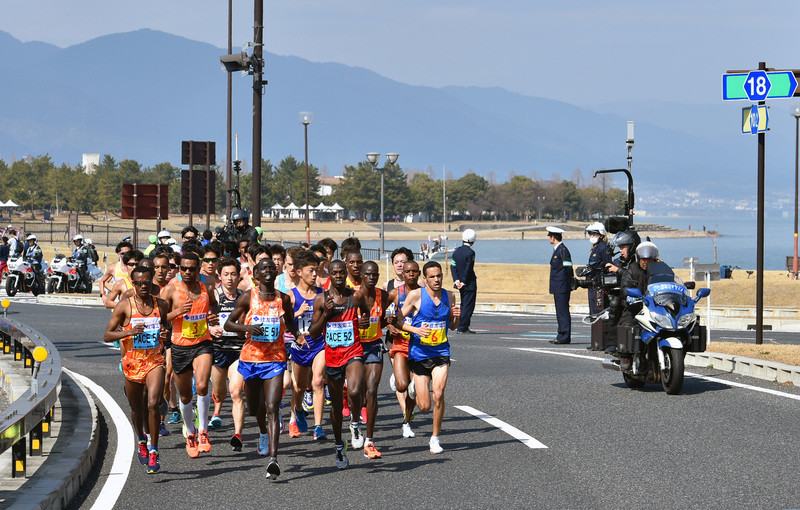
Starting and finishing on the track at Ojiyama Field, Lake Biwa has long been the final selection race for Olympic and World Championships teams. At both the 2012 London Olympics and 2016 Rio de Janeiru Olympics two of the three men's team members earned their places at Lake Biwa. At both the 1964 and 1968 Olympics all three members were chosen there. Its position on the calendar relative to Fukuoka and Tokyo meant the battles were always furious, and those who emerged victorious went on to take on the world.
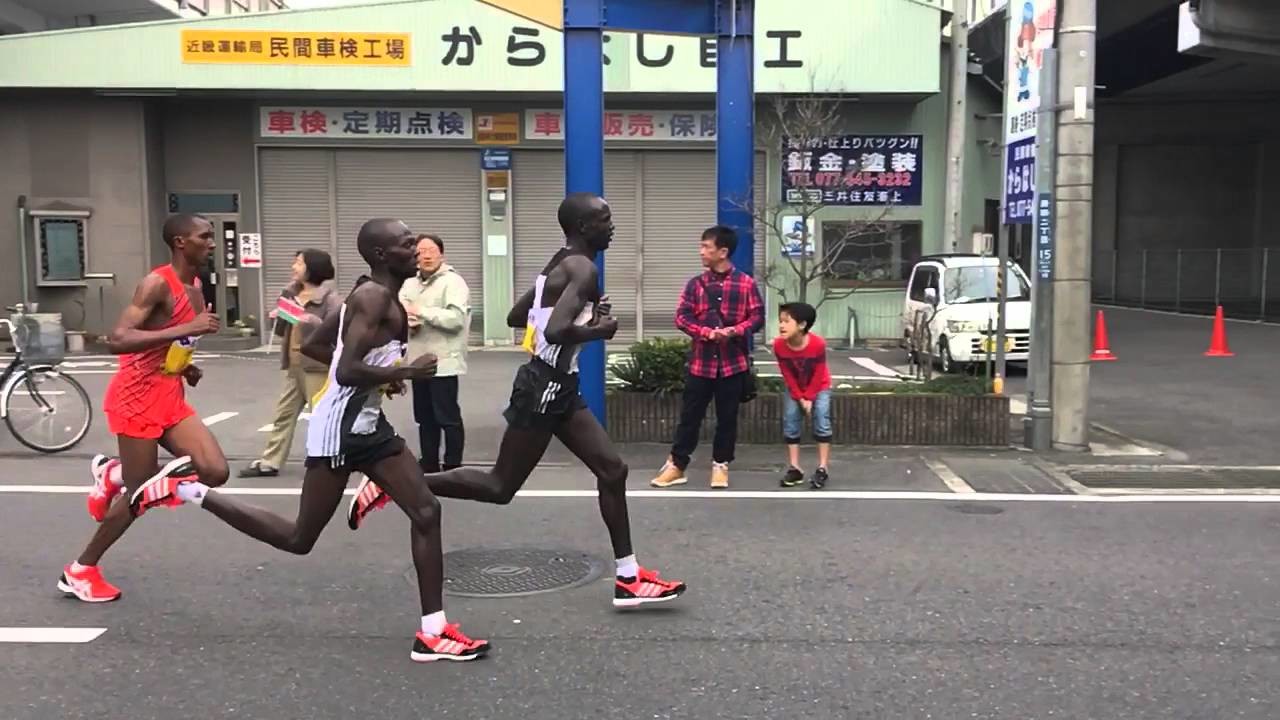
There's no question that Lake Biwa has been the site of countless classic races and a vital part of Japan's marathon tradition, but in recent years its relevance has faded. One of the major factors in this was the Tokyo Marathon's change to a faster course in 2017. In 2018 Yuta Shitara (29, Honda) broke the Japanese national record in Tokyo, and two years later Suguru Osako (29, Nike) followed Shitara's lead and did the same. With that record of success, Tokyo has become the first choice for Japanese men targeting fast times.
The outcome of that change for Lake Biwa, an elite-only marathon, was that the athletes who could have provided the fireworks started staying away. With the Tokyo Marathon having moved to Lake Biwa's traditional date the first Sunday in March two years ago, Lake Biwa's shift a week later meant it was now the same day as the Nagoya Women's Marathon, hiding it in the shadows even further. The race's viability, financial and otherwise, came into question.
According to those involved, the Osaka Marathon is the most likely candidate to replace Lake Biwa as a national team selection event. With 35,000 people running on a downtown urban course it is the second-largest marathon in Japan after only Tokyo. With that kind of modern prestige to it, Osaka is highly likely to pick up the selection race label.
Modernity has a way of burying history. The MGC Race, a one-shot selection race for the Tokyo Olympics, was a major success. Those in power are leaning toward using the same kind of single trials race for the 2024 Paris Olympics. With the coronavirus crisis an ongoing issue, this is a period of transition. The Japanese marathon world isn't immune to those transitional forces, and we can only hope that its reorganization and reformation produce even more exciting races.
(12/18/2020) ⚡AMPby Brett Larner
Osaka Marathon
In 2022 the Lake Biwa Mainichi Marathon and Osaka Marathon were held together. For 2023 the name of the marathon will be Osaka and both men and women can run the race. The original male-only competition was first held in 1946 and, having taken place every year since then, it is Japan's oldest annual marathon race. The early editions of...
more...2021 Credit Union Cherry Blossom Ten Mile and 5K Run-Walk Rescheduled for September 12
Credit Union Cherry Blossom Run organizers announced today that their 2021 in-person events have been moved from the previously scheduled dates of April 9-11, to September 10-12, 2021.
The Health & Fitness Expo will take place at the National Building Museum on September 10 and 11; the Credit Union Cherry Blossom Kids’ Run will be held on September 11, on a course adjacent to the National Building Museum; and the Credit Union Cherry Blossom Ten Mile and 5K Run-Walk will take place on September 12 at their traditional start/finish areas on the Washington Monument Grounds.
The annual lottery for race entries will be held from June 1-13, 2021, with entry fees of $50 for the Ten Mile and $40 for the 5K Run-Walk. Runners with a guaranteed entry from the canceled 2020 events will be offered a choice of race dates: September 12, 2021, or April 3, 2022, which will celebrate the 49th running of the Runner’s Rite of Spring® in our nation’s capital. Registration details for the Credit Union Cherry Blossom Kids’ Run will be released at a later date.
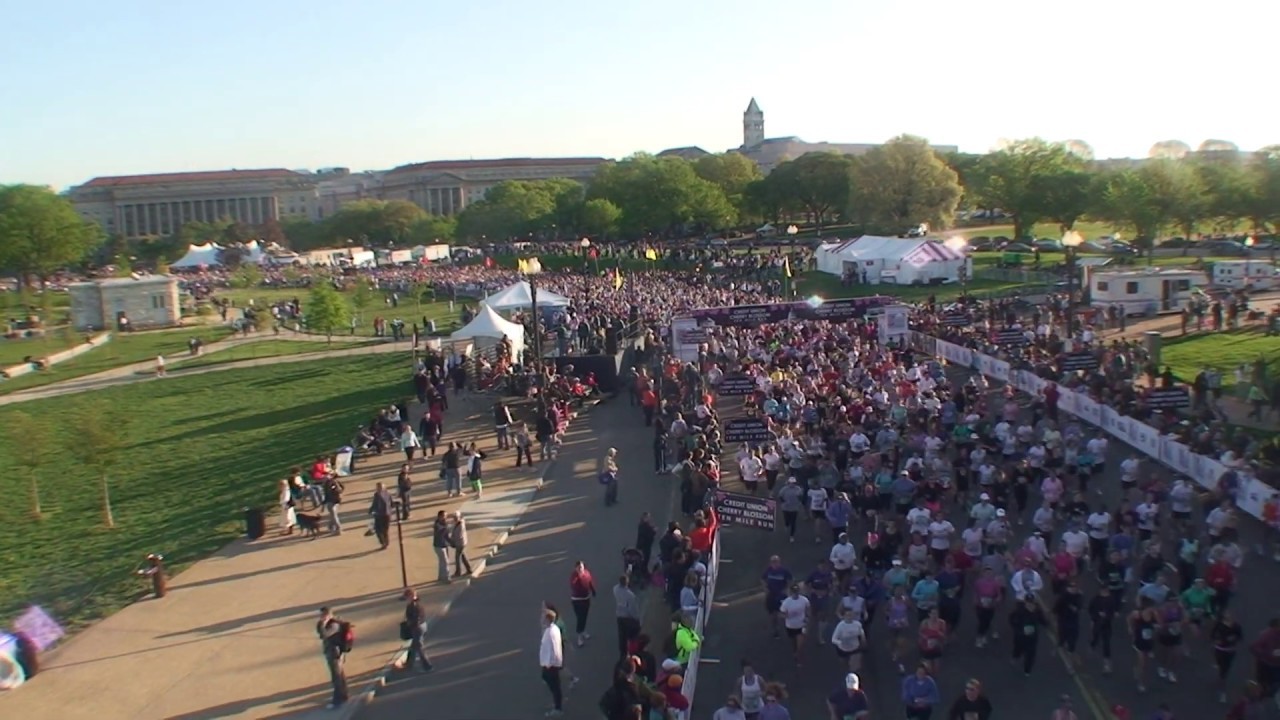
Event Director Phil Stewart said: “We plan to continue our tradition of the Runner’s Rite of Spring with a one-time, special edition of the Runner’s Delight of Fall, by which time runners should be more than ready to return to in-person running events after over a year of mostly virtual runs. We are planning on making this a triumphant return.”
All is not lost in the spring, however, as race organizers also announced the Credit Union Cherry Blossom Ten Mile and 5K Virtual Runs that will coincide with the National Cherry Blossom Festival, March 20 through April 11, 2021. Registration for the virtual runs will open on January 18, 2021, and the $35 entry fee includes a t-shirt and finisher’s medal. Runners are encouraged to visit the Credit Union Cherry Blossom website for more information on the virtual runs.
Held virtually this year, the 2020 Credit Union Cherry Blossom Runs marked the 19th year of title sponsorship by Credit Union Miracle Day. Since 2002, over $10 million has been raised for the Children’s Miracle Network Hospitals, including $439,000 this year. Of that $439,000, $66,000 came from runners donating their entry fees instead of asking for a refund when race weekend in our Nation’s Capital was wiped out by COVID-19.
“While we were all disappointed that the race was canceled this year, together we are making a significant impact in our communities and in the lives of children treated at Children’s Miracle Network Hospitals,” said John Bratsakis, chair of Credit Union Miracle Day. “The funds raised directly benefit CMN Hospitals in local communities, helping to fund research, treatment, medical equipment and the challenges brought on by COVID-19. The unique, collaborative spirit of the credit union movement makes a real difference in communities, particularly during this time of uncertainty and disruption. We look forward to 2021 and our 20th year as title sponsor of the Credit Union Cherry Blossom Ten Mile and 5K Run-Walk.”
(12/18/2020) ⚡AMPCherry Blossom Ten Mile Run
The Credit Union Cherry Blossom is known as "The Runner's Rite of Spring" in the Nation's Capital. The staging area for the event is on the Washington Monument Grounds, and the course passes in sight of all of the major Washington, DC Memorials. The event serves as a fundraiser for the Children's Miracle Network Hospitals, a consortium of 170 premier...
more...Fresh from winning Valencia Marathon with a course record, Evans Chebet is looking towards the Olympic Games
Chebet, who edged out experience marathoners like Boston and Chicago Marathon champion Lawrence Cherono for the title, said his focus has now shifted to the Olympic Games.
“Running at the Olympic Games will be good achievement for me. It has been a long journey and making the marathon team will be a dream come true for me,” he added.
The Elgeyo Marakwet-based runner returned home after winning Valencia 42km race in a personal best time of of 2:03:00 ahead of compatriot Cherono (2:03:04) and Ethiopian Birhanu Legese (2:04:53), who completed the podium.
“It will be good if the team is named early to ensure we start our preparations on time. If I can make the team, I assure Kenyans that I will return with a medal,” added Chebet, who competed alongside world marathon bronze medalist Amos Kipruto.
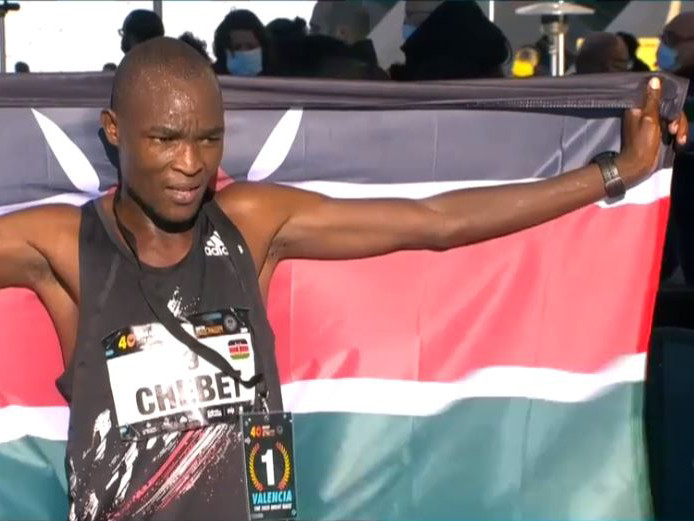
“I look forward to competing for my country at the Olympics Games after a good break and my prayer is that Athletics Kenya names the team early," said a jubilant Chebet. He said his biggest worry in Valencia was Legese but he is happy he shook him off.
Amos Kipruto, who has dominated in many marathons across the world, was named alongside Eliud Kipchoge and Lawrence Cherono in the Olympic Games marathon team.
“I managed to run my personal best because that was my target and I still believe I will be joining Team Kenya to the Tokyo show. The team that ran in Valencia was the best and we hope the federation will take note,” said Kipruto.
In 2019, Kandie 42:39 edged Kiplimo (43:00) in the San Silvestre Road Race in Brazil. Other entrants in men's category include Alexander Mutiso Munyao, Ethiopian Mosinet Geremew, Japan-based Bedan Karoki and Stephen Kiprop, winner of the 2019 edition.
Geremew won the Dubai Marathon in 2018 and came second in the London Marathon in 2019 with a time of 2.02.55, clocking the 4th fastest time ever in that distance.
Meanwhile, Mutiso recently placed 4th in Valencia in 57.59 and was runner-up in the men’s 2020 Ras Al Khaimah Half Marathon in 59:16.
In the women's category, World Half Marathon champion Peres Jepchirchir will battle against World marathon record holder Brigid Kosgei and 2019 World marathon champion Ruth Chepngetich.
Jepchirchir has fond memories of the Ras Al Khaimah Half Marathon, where she set her personal best time of 1:05.06 in 2017 on her way to victory. Chepngetich recently clocked a remarkable time of 1.05.06 at the New Delhi Half Marathon.
At the 20th Dubai Marathon in 2019, she won in a course record breaking time of 2.17.08, securing the world’s 4th best marathon time ever. Ethiopia's Ababel Yeshaneh will also be in contention.
(12/18/2020) ⚡AMPby Emmanuel Sabuni
Tokyo 2020 Olympic Games
Fifty-six years after having organized the Olympic Games, the Japanese capital will be hosting a Summer edition for the second time, originally scheduled from July 24 to August 9, 2020, the games were postponed due to coronavirus outbreak, the postponed Tokyo Olympics will be held from July 23 to August 8 in 2021, according to the International Olympic Committee decision. ...
more...World Half Marathon record holder Kandie Kibiwott and world defending champion Jacob Kiplimo of Uganda will face off at the Ras Al Khaimah Half Marathon in February next year
Kandie and Kiplimo to renew rivalry in Ras Al Khaimah Half Marathon.
The two are fast becoming rivals in the 21km race having faced off several times this year.
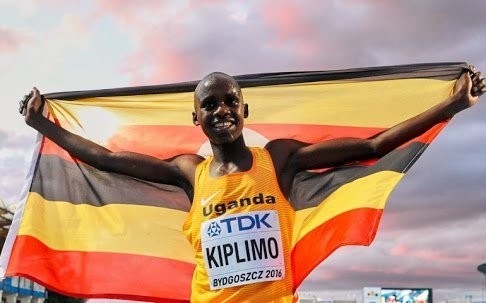
In their latest meet-up on December 6, the Kenyan emerged top after clocking a world record 57:32 to finish ahead of Kiplimo at the Valencia Marathon.
Kandie's win was revenge for his loss at the hands of the Ugandan at October's World Half marathon Championships in Gydnia, Poland where the latter crossed the finish line in in 58:49 — five seconds ahead of Kandie.
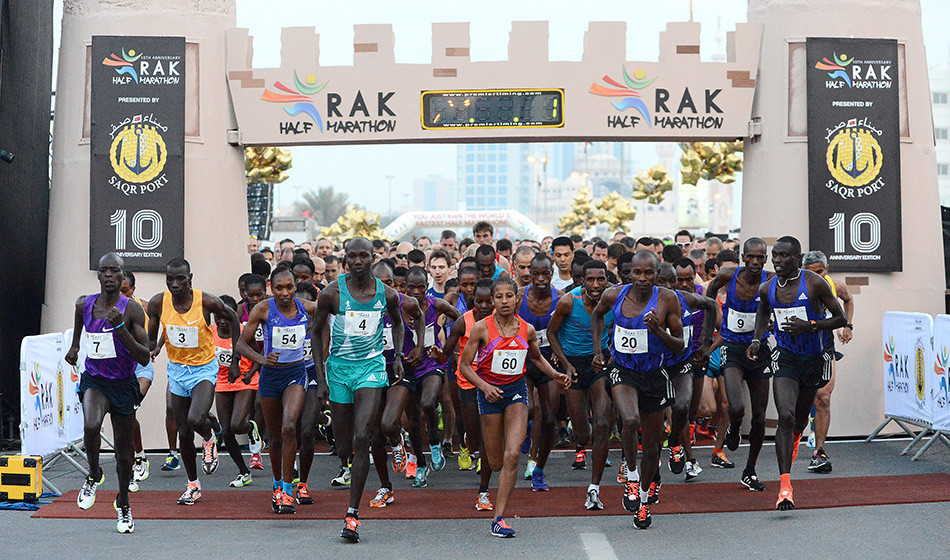
In 2019, Kandie 42:39 edged Kiplimo (43:00) in the San Silvestre Road Race in Brazil. Other entrants in men's category include Alexander Mutiso Munyao, Ethiopian Mosinet Geremew, Japan-based Bedan Karoki and Stephen Kiprop, winner of the 2019 edition.
Geremew won the Dubai Marathon in 2018 and came second in the London Marathon in 2019 with a time of 2.02.55, clocking the 4th fastest time ever in that distance.
Meanwhile, Mutiso recently placed 4th in Valencia in 57.59 and was runner-up in the men’s 2020 Ras Al Khaimah Half Marathon in 59:16.
In the women's category, World Half Marathon champion Peres Jepchirchir will battle against World marathon record holder Brigid Kosgei and 2019 World marathon champion Ruth Chepngetich.
Jepchirchir has fond memories of the Ras Al Khaimah Half Marathon, where she set her personal best time of 1:05.06 in 2017 on her way to victory. Chepngetich recently clocked a remarkable time of 1.05.06 at the New Delhi Half Marathon.
At the 20th Dubai Marathon in 2019, she won in a course record breaking time of 2.17.08, securing the world’s 4th best marathon time ever. Ethiopia's Ababel Yeshaneh will also be in contention.
(12/18/2020) ⚡AMPby William Njuguna
Rak Half Marathon
The Ras Al Khaimah Half Marathon is the 'world's fastest half marathon' because if you take the top 10 fastest times recorded in RAK for men (and the same for women) and find the average (for each) and then do the same with the top ten fastest recorded times across all races (you can reference the IAAF for this), the...
more...The Marathon Project is an elite only marathon being held Sunday Dec 20 in Chandler Arizona
When COVID-19 postponed or canceled all of the year’s major marathons in the U.S., two running industry insiders—Ben Rosario, the coach of NAZ Elite in Flagstaff, and Josh Cox, an agent to many marathoners, including several on the NAZ team—brainstormed a way for some of the country’s fastest athletes to race.
The result is The Marathon Project, an elite-only 26.2 that takes place at 10 a.m. ET on Sunday, December 20, on the Gila River Indian Reservation in Chandler, Arizona.
The course is on a flat, two-mile stretch of road with roundabouts at each end. Runners go up one side of the road and back down the other for a 4.2-mile loop that they’ll do parts of six times. The course is built for fast times, not for variety.
The race will be broadcast live on USATF.tv, and a 90-minute replay of the race will be available on NBCSN at 7:30 p.m. ET on Sunday evening. The broadcast will include veteran commentator Paul Swangard as well as Des Linden and Bernard Lagat, two experienced marathoners who should bring some insightful analysis.
Who is racing?
The race brings together 53 men and 44 women, plus 14 male pacers. Several were top-10 finishers at the Olympic Marathon Trials in February, the last chance these runners had a chance to race a major marathon on U.S. soil.
The top women include Sara Hall, who finished second in 2:22:01 at the London Marathon in October, and Keira D’Amato, who recently set a women’s-only 10-mile American record.
Stephanie Bruce, Emma Bates, Kellyn Taylor, and Julia Kohnen (who were sixth, seventh, eighth, and 10th, respectively at the Trials) also figure to be in the mix.
On the men’s side, Americans Scott Fauble and 2016 Olympian Jared Ward are among the top contenders. Four top-10 finishers from the Trials—Marty Hehir (sixth), CJ Albertson (seventh), Colin Bennie (ninth), and Matt McDonald (10th)—will also line up.
The men’s race also brings several international entrants. Amanuel Mesel Tikue of Eritrea boasts a PR of 2:08:17, although it dates back to 2013. Jose Antonio Uribe Marino of Mexico hopes to hit the Olympic standard of 2:11:30 to qualify for the Games, and Cam Levins of Canada also is looking for a strong performance to put him on the Canadian Olympic team.
Will Sara Hall set the American record?
Hall, 37, has been on a tear lately. After dropping out of the Trials at mile 22, she redeemed herself with a PR in a solo half marathon in Oregon and that runner-up finish in London, which she earned by way of a furious finishing kick in the race’s final meters.
The American record for the marathon, Deena Kastor’s 2:19:36, has stood since 2006. Hall has asked for a pacer to take her through the halfway point in 69:40, faster than Kastor’s record.
But in a prerace press conference, Hall was reluctant to call it a record attempt. “I want to go into this race with the mindset of trying to run as fast as possible,” she said on the Zoom call. “I can be all or nothing, and I don’t want to be in a scenario where I’m running really well and if I’m just off the American record pace, it feels like I’m failing. I think that would still be a big success, a big PR. That’s my main focus, just running as fast as I can.”
Hall added that she has done a lot of training faster than record pace. “I think [the record is] definitely possible based on my training,” she said.
In addition to Hall’s requested pace for a 2:19:20 marathon, the women’s race will have three other pace groups: 2:23, 2:26, and 2:29:30, which is the Olympic qualifying standard. The men will have two pace groups: 2:09 and 2:11:30.
What’s in it for the runners?
Rosario announced a modest prize purse: $5,000 for each winner, $2,000 for second, and $1,000 for third.
Otherwise, athletes are racing for sponsor bonuses—shoe companies often pay their athletes extra money for breaking certain times, although the terms of these deals aren’t publicly known.
Then, of course, there’s the joy of racing, when events have been hard to come by for the past 10 months.
“Every opportunity we have to be on a starting line is a gift in 2020,” Bruce said.
What safety measures are in place?
The race is following safety guidelines set out by USA Track and Field, World Athletics, and the state of Arizona. Participants must take two COVID-19 tests, separated by 24 hours, within the seven days before the race—which, of course, must both be negative. Most participants are staying in a race hotel near the course, creating a bubble environment of sorts.
But runners are traveling from all over to get to the race. Hehir, who is finishing up his final year of medical school, is traveling to the race from Philadelphia, where he has spent the past two weeks working in an ICU filled with COVID-19 patients.
“It’s just as scary as it’s hyped up to be,” Hehir said of Covid. “Yes, not everyone ends up in the ICU, but when you end up there, you are incredibly sick. It’s definitely a bleak place to be.”
He said he gave some “extra thought” into committing to the race, but he praised the precautions the race had put in place. “These opportunities are far and few between,” he said, “and as long as we feel like it’s being done in a safe way, a lot of us are going to jump on it.”
(12/17/2020) ⚡AMPby Sarah Lorge Butler (Runner's World)
Usain Bolt says that he weighs up the possibility of technical role as fatherhood teaches him patience
World’s fastest man Usain Bolt says that he has not ruled out the possibility of becoming a coach in the near future.
Bolt was speaking on Thursday at the Digicel Business Masterclass Series, a virtual event aimed at giving an inside look at the experiences of business leaders on the island, imparting their knowledge and lessons learnt along their road to success.
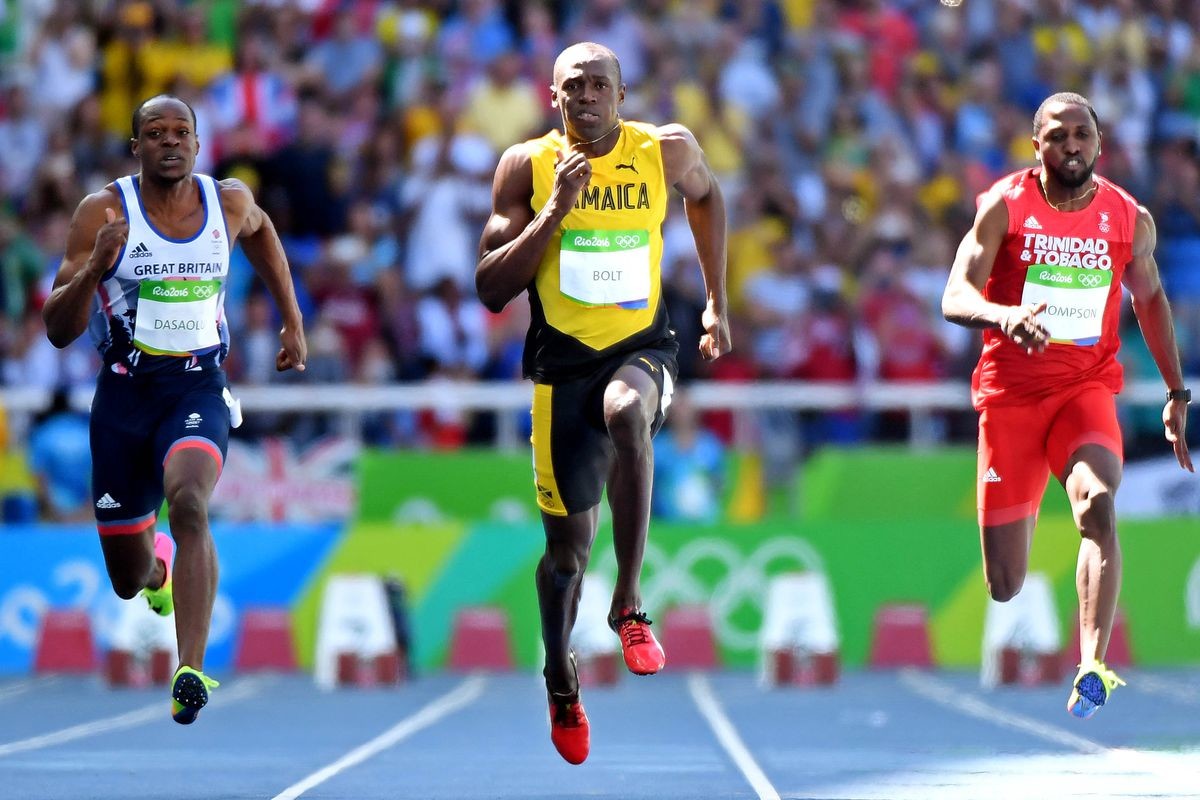
Three years after his retirement from athletics, Bolt has pursued other business interests but when asked if coaching was something that he would consider doing, he said that he was wary of the prospect because of his lack of patience. However, he says that the lessons he has learnt in raising his first child, Olympia, has helped him to develop that quality and is not closing the door completely on the option.
PATIENCE NEEDED
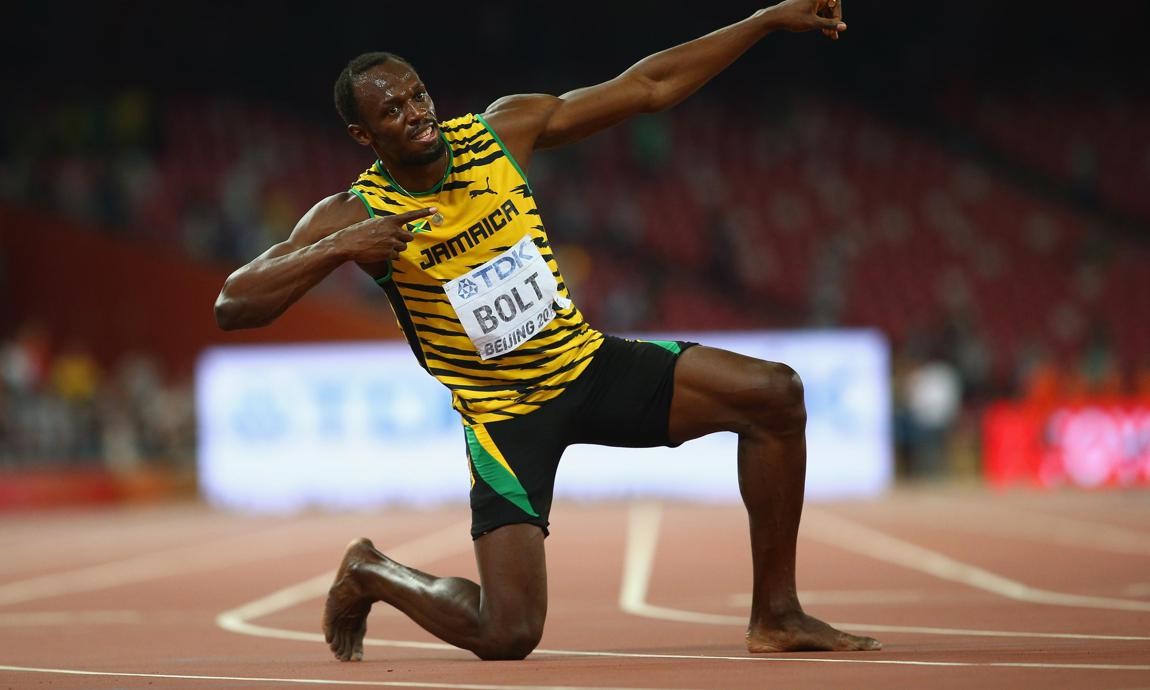
“You have to have the patience to deal with athletes, and for me, I don’t have that patience,” Bolt said. “But now that I have a little one, I’m learning to have patience. So maybe in the near future I might get to the point where I can say maybe [I could be] a coach. But before Olympia, no.”
For the majority of his career, Bolt trained under Racers Track Club founder and head coach Glen Mills. The partnership yielded eight Olympic titles, 11 World Championship gold medals, and the world records in both the 100m and 200m.
Bolt says that he recognises the qualities that coaches must have in developing talent and appreciates the challenges that Mills had to deal with during their training sessions.
“As a coach, you have to be very patient,” he said. “You will get athletes and you will have to tell them the same things over and over and over again. I wasn’t one of those athletes, but it’s hard for a coach. I’m not going to say that I made it easy for my coach. He had to shout at me at times.”
Additionally, he spoke about the respect and trust that he had in Mills during his career and how that respect was important to his reaching the highest level of athletics.
“I always say to people, ‘If coach [Mills] tells me tomorrow you are going to wake up and run eight seconds, I’ll believe him’,” he said. “That’s how much I believe in my coach because he has proven himself to me.”
(12/17/2020) ⚡AMPby Daniel Wheeler
Haile Gebrselassie prepares for the 20th edition of the Great Ethiopian Run will go ahead next month with many COVID-19 precautions in place
Two-time Olympic champion Haile Gebrselassie announced on Tuesday that he and the Great Ethiopian Run (GER) organizers plan on going ahead with their race in a month’s time on January 10.
This will be the 20th edition of the 10K race in the Ethiopian capital of Addis Ababa, an event that Gebrselassie founded in 2000 after he won his second Olympic 10,000m gold medal at the Sydney Games. Gebrselassie says he and his organizing team are expecting 12,500 participants to toe the line at the January race, and they have a number of COVID-19 precautions in place to make the event as safe as possible for everyone involved.
The GER was originally scheduled for November, but organizers decided to postpone the event for a couple of months. As explained on the event website, the GER team has used this extra time to consult with the Ethiopian Ministry of Health to create COVID-19 guidelines that will be enforced on race day. The biggest change for the upcoming run is the race capacity, which has been reduced to about a quarter of its normal size. The expected field of 12,500 is close to 30,000 fewer runners than the GER saw in 2019. This is by no means a small field, especially during a pandemic, but it is substantially smaller than organizers have seen in years past.
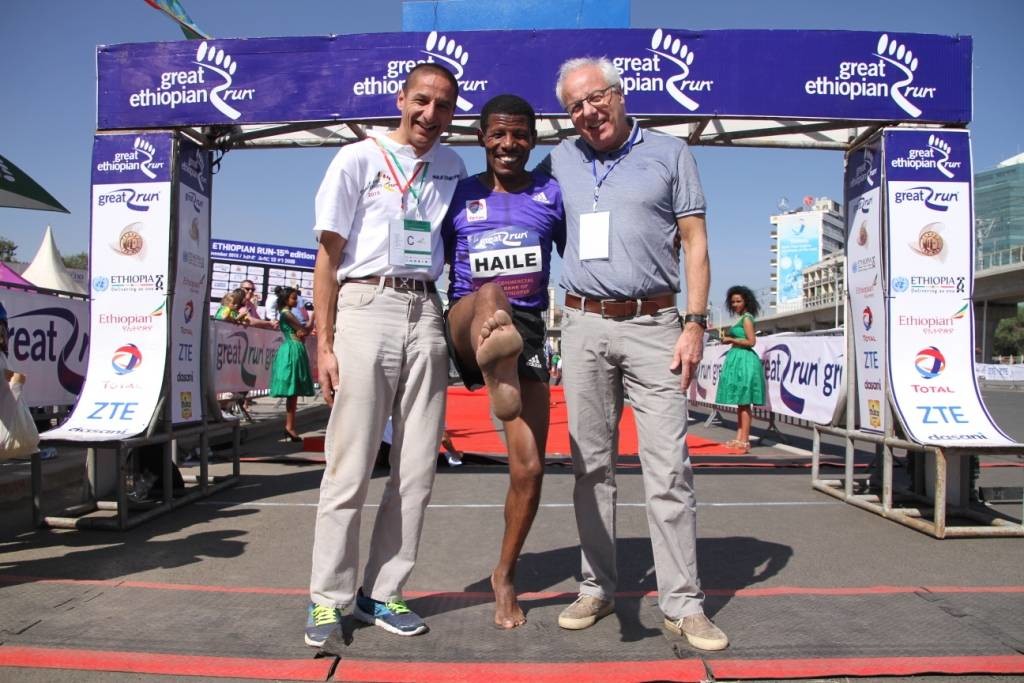
The week before the run, all participants will receive their race shirts along with masks, which will be mandatory on race day. Only when on the race course will athletes be permitted to remove their masks. On the day, all participants will undergo temperature checks, and organizers have asked anyone who feels unwell or is experiencing COVID-19 symptoms to skip the race. A wave start will be implemented, with groups leaving in 15-minute intervals, and runners will have to carry their own water on the course, as there will be no hydration stations on the route. Finally, an “exit flow operation” will be organized to avoid crowds at the finish line.
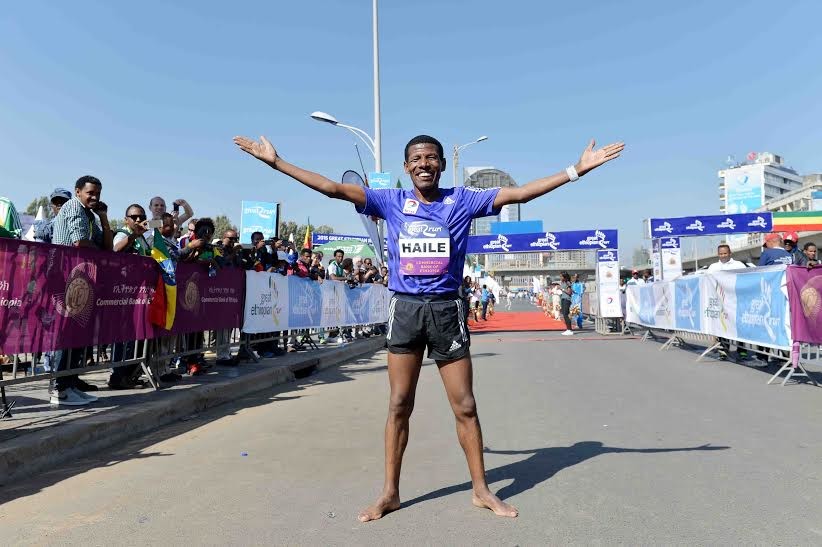
While Gebrselassie’s announcement was welcome news to some, many people have been critical of the call to hold the race while COVID-19 persists around the world. This has been a popular topic of debate in recent months, as more and more races have made comebacks or announced plans to return to racing during the pandemic.
(12/17/2020) ⚡AMPby Ben Snider-McGrath
the Great ethiopian 10k run
The Great Ethiopian Run is an annual 10-kilometerroad runningevent which takes place inAddis Ababa,Ethiopia. The competition was first envisioned by neighbors Ethiopian runnerHaile Gebrselassie, Peter Middlebrook and Abi Masefield in late October 2000, following Haile's return from the2000 Summer Olympics. The 10,000 entries for the first edition quickly sold out and other people unofficially joined in the race without...
more...

